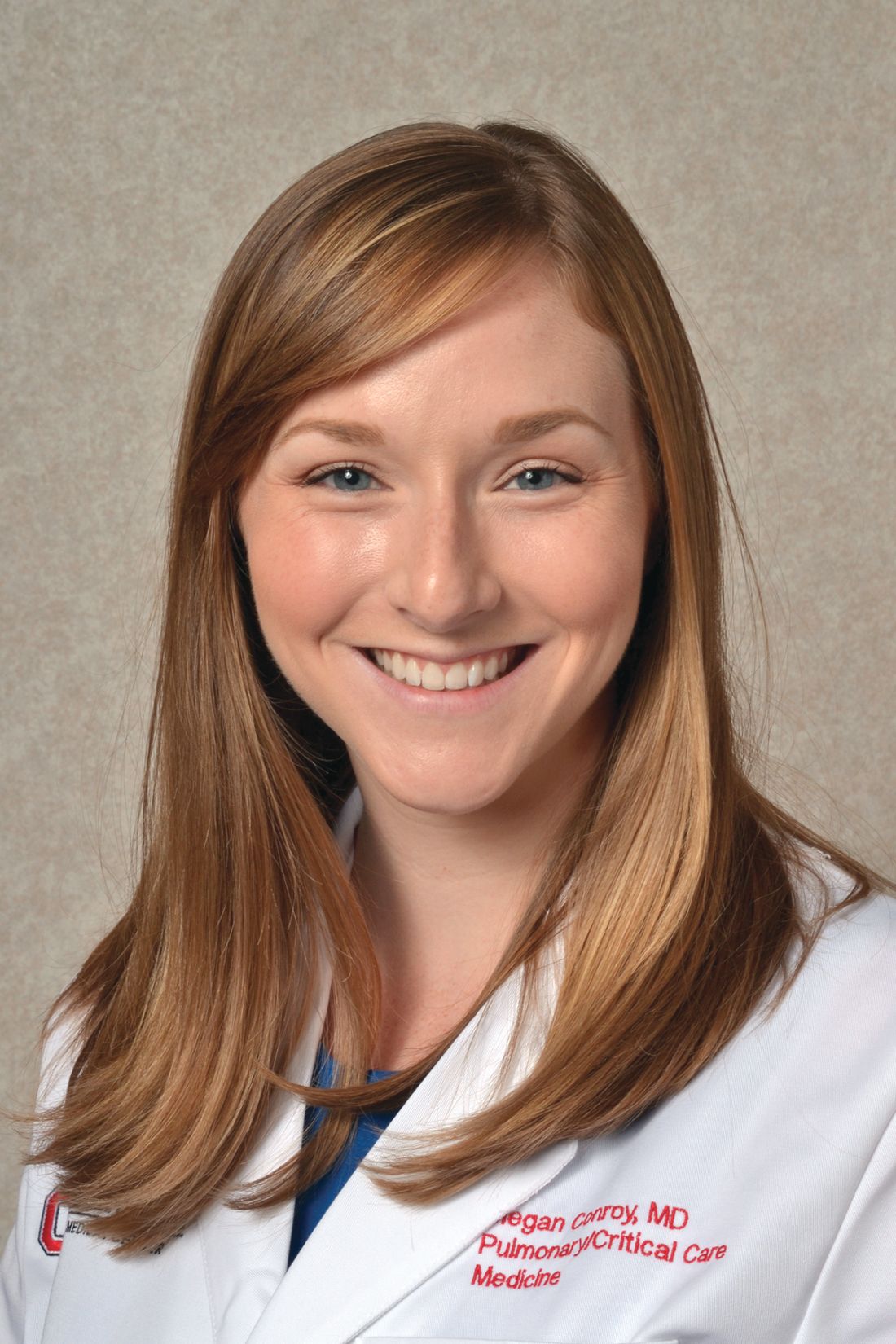User login
COVID-19 and the cardiovascular system. Thrombotic events in COVID-19. Interprofessional collaboration.
Cardiovascular medicine and surgery
COVID-19 and the cardiovascular system
With the global outbreak of severe acute respiratory syndrome coronavirus 2 (SARS-CoV-2) ongoing, there is increased awareness of the cardiovascular manifestations and implications of COVID-19. Approximately 20% of inpatients with COVID-19 have acute cardiac injury (defined as cardiac troponin elevation) (Shi S, et al. JAMA Cardiol. 2020 Mar 25. doi: 10.1001/jamacardio.2020.0950). Moreover, in one cohort, both acute cardiac injury and preexisting cardiovascular disease (CVD) were associated with COVID-19 hospital mortality: 69% with elevated troponin levels and underlying CVD vs 7.6% with neither (Guo T, et al. JAMA Cardiol. 2020 Mar 27. doi: 10.1001/jamacardio.2020.1017). Moreover, case reports suggest COVID-19 may present as myopericarditis, cardiomyopathy, acute on chronic decompensated heart failure, and acute coronary syndrome (Fried JA, et al. Circulation. 2020 Apr 3. doi: 10.1161/circulationaha.120.047164). Adding to this clinical variability, one case series suggests that electrocardiographic ST-segment elevation may not reliably identify obstructive coronary disease (Bangalore S, et al. N Engl J Med. 2020 Apr 17. doi: 10.1056/NEJMc2009020). Intriguingly, the angiotensin-converting enzyme 2 (ACE2) protein is the functional receptor for SARS-CoV-2 cell entry, and ACE2 is highly expressed in pulmonary and cardiac cells (Driggin E, et al. J Am Coll Cardiol. 2020;75[18]:2352). Given the central role of ACE2 and the renin-angiotensin-aldosterone (RAAS) system in cardiovascular pathophysiology and pharmacotherapy, RAAS modulation could have beneficial and/or detrimental effects with COVID-19 (Vaduganathan M, et al. N Engl J Med. 2020;382:1653). Available evidence and societal guidelines support continuing RAAS antagonists in patients per established clinical practice (Mancia G, et al. N Engl J Med. 2020 May 1. doi: 10.1056/NEJMoa2006923); (Mehra MR, et al. N Engl J Med. 2020 May 1. doi: 10.1056/NEJMoa2007621). A better understanding of the direct and indirect effect of SARS-CoV-2 on the cardiovascular system will require additional evidence.
Benjamin B. Kenigsberg, MD
Fellow-in-Training Steering Committee Member
Thrombotic events in COVID-19: Implications and evolving practice recommendations
A startling potential complication of infection with SARS-CoV2 has been the reported predisposition to thrombotic events. Mortality in COVID-19 patients is associated with notable increases in hemostatic parameters such as levels of
Vascular societies led by International Society on Thrombosis and Haemostasis (ISTH) have published consensus recommendations for guidance. If no contraindications exist, pharmacologic venous thromboembolism (VTE) prophylaxis with unfractionated heparin (UFH) or low-molecular-weight heparin (LMWH) is recommended for hospitalized patients with moderate or severe COVID-19 without disseminated intravascular coagulation (DIC). VTE prophylaxis should also be considered for patients with moderate or severe COVID-19 and in DIC but without overt bleeding. There is insufficient evidence to consider routine therapeutic or intermediate-dose parenteral anticoagulation with UFH or LMWH. Many institutions have developed protocols advising therapeutic-intensity anticoagulation when certain thresholds of
Saiprakash B. Venkateshiah, MD, FCCP,
Chair
Gabriela Magda, MD
Fellow-in-Training Steering Committee Member
Interprofessional Team
Quality of interprofessional collaboration in the medical intensive care unit: perceptions by caregivers
A recent study examining caregivers’ perceptions of team interactions and interprofessional collaborative practice (IPCP) behaviors offers new, exciting insights on the importance of interprofessional team functioning in the medical intensive care unit (MICU) (Chen DW, et al. J Gen Intern Med. 2018;33[10]:1708).
The Support Person Jefferson Teamwork Observation Guide (JTOG)TM survey was administered to 161 random caregivers of patients hospitalized in a single large urban academic medical center MICU between May 2016 and December 2016. The survey tool was designed to elicit the perceptions of caregivers regarding team functioning. Survey questions were directly mapped to the 2011 Interprofessional Education Collaborative (IPEC) Expert Panel core competencies for IPCP and divided into four domains (values/ethics; interprofessional communication; roles/responsibilities; teams/teamwork).
Also appended to the surveys were additional follow-up questions that addressed the overall satisfaction with the team and general attitudes regarding the importance of interprofessional team-based care. Caregivers agreed on the importance of health-care professionals working together as a team to provide patient care (3.97/4.00 Likert scale 4 = extremely important). Caregivers expressed satisfaction with the MICU team (3.74/4.00). Furthermore, caregivers agreed that the MICU team demonstrated competencies in all four domains of IPCP: values/ethics (3.55/4.00), interprofessional communication (3.58/4.00), roles/responsibilities (3.61/4.00), and teams/teamwork (3.64/4.00). Caregivers felt the MICU team provided patient/family-centered care (sub-competency 3.58/4.00). Notably, the overall caregiver survey scores detailing how well each MICU team functioned were positively correlated to overall satisfaction with the MICU team (r = 0.596 P < .01).
Limitations of the study included:
1. The sample is from a single institution, and perceptions of caregivers cannot be applied to all populations.
2. No information regarding patient, such as diagnosis, was obtained.
3. Caregivers satisfied with care might be more likely to participate.
4. No distinction was made between data collected from caregivers surveyed in the resident-fellow staffed MICU vs NP-staffed MICU.
It has been described that ineffective teamwork and team communication in health care settings are associated with increased patient harm and sentinel events (Kohn LT et al. Washington (DC): National Academies Press(US); 2000); (Page A, Washington (DC): National Academies Press (US); (The Joint Commission. Sentinel Event Alert 2008, 40); (Brennan TA, et al. N Engl J Med. 1991;324:370). Cultural differences between members of the health-care team and established hierarchies of control have been identified as barriers to communication and teamwork in ICUs (Alexanian JA, et al. J Crit Care Med. 2015;43[9]:1880); (Manias E, Street A. Int J Nurs Stud. 2001;38[2]:129).
Overall, the findings from this study emphasize the importance of interprofessional communication and teamwork in the MICU and delivery of patient/family-centered care from the caregivers’ perspective. The unique insight into caregivers’ perspectives on specific team behaviors may be the basis for future quality improvement initiatives.
Justin K. Lui, MD,
Mary Jo Farmer, MD, PhD, FCCP
Kristina E. Ramirez, RRT, MPH, FCCP
Cardiovascular medicine and surgery
COVID-19 and the cardiovascular system
With the global outbreak of severe acute respiratory syndrome coronavirus 2 (SARS-CoV-2) ongoing, there is increased awareness of the cardiovascular manifestations and implications of COVID-19. Approximately 20% of inpatients with COVID-19 have acute cardiac injury (defined as cardiac troponin elevation) (Shi S, et al. JAMA Cardiol. 2020 Mar 25. doi: 10.1001/jamacardio.2020.0950). Moreover, in one cohort, both acute cardiac injury and preexisting cardiovascular disease (CVD) were associated with COVID-19 hospital mortality: 69% with elevated troponin levels and underlying CVD vs 7.6% with neither (Guo T, et al. JAMA Cardiol. 2020 Mar 27. doi: 10.1001/jamacardio.2020.1017). Moreover, case reports suggest COVID-19 may present as myopericarditis, cardiomyopathy, acute on chronic decompensated heart failure, and acute coronary syndrome (Fried JA, et al. Circulation. 2020 Apr 3. doi: 10.1161/circulationaha.120.047164). Adding to this clinical variability, one case series suggests that electrocardiographic ST-segment elevation may not reliably identify obstructive coronary disease (Bangalore S, et al. N Engl J Med. 2020 Apr 17. doi: 10.1056/NEJMc2009020). Intriguingly, the angiotensin-converting enzyme 2 (ACE2) protein is the functional receptor for SARS-CoV-2 cell entry, and ACE2 is highly expressed in pulmonary and cardiac cells (Driggin E, et al. J Am Coll Cardiol. 2020;75[18]:2352). Given the central role of ACE2 and the renin-angiotensin-aldosterone (RAAS) system in cardiovascular pathophysiology and pharmacotherapy, RAAS modulation could have beneficial and/or detrimental effects with COVID-19 (Vaduganathan M, et al. N Engl J Med. 2020;382:1653). Available evidence and societal guidelines support continuing RAAS antagonists in patients per established clinical practice (Mancia G, et al. N Engl J Med. 2020 May 1. doi: 10.1056/NEJMoa2006923); (Mehra MR, et al. N Engl J Med. 2020 May 1. doi: 10.1056/NEJMoa2007621). A better understanding of the direct and indirect effect of SARS-CoV-2 on the cardiovascular system will require additional evidence.
Benjamin B. Kenigsberg, MD
Fellow-in-Training Steering Committee Member
Thrombotic events in COVID-19: Implications and evolving practice recommendations
A startling potential complication of infection with SARS-CoV2 has been the reported predisposition to thrombotic events. Mortality in COVID-19 patients is associated with notable increases in hemostatic parameters such as levels of
Vascular societies led by International Society on Thrombosis and Haemostasis (ISTH) have published consensus recommendations for guidance. If no contraindications exist, pharmacologic venous thromboembolism (VTE) prophylaxis with unfractionated heparin (UFH) or low-molecular-weight heparin (LMWH) is recommended for hospitalized patients with moderate or severe COVID-19 without disseminated intravascular coagulation (DIC). VTE prophylaxis should also be considered for patients with moderate or severe COVID-19 and in DIC but without overt bleeding. There is insufficient evidence to consider routine therapeutic or intermediate-dose parenteral anticoagulation with UFH or LMWH. Many institutions have developed protocols advising therapeutic-intensity anticoagulation when certain thresholds of
Saiprakash B. Venkateshiah, MD, FCCP,
Chair
Gabriela Magda, MD
Fellow-in-Training Steering Committee Member
Interprofessional Team
Quality of interprofessional collaboration in the medical intensive care unit: perceptions by caregivers
A recent study examining caregivers’ perceptions of team interactions and interprofessional collaborative practice (IPCP) behaviors offers new, exciting insights on the importance of interprofessional team functioning in the medical intensive care unit (MICU) (Chen DW, et al. J Gen Intern Med. 2018;33[10]:1708).
The Support Person Jefferson Teamwork Observation Guide (JTOG)TM survey was administered to 161 random caregivers of patients hospitalized in a single large urban academic medical center MICU between May 2016 and December 2016. The survey tool was designed to elicit the perceptions of caregivers regarding team functioning. Survey questions were directly mapped to the 2011 Interprofessional Education Collaborative (IPEC) Expert Panel core competencies for IPCP and divided into four domains (values/ethics; interprofessional communication; roles/responsibilities; teams/teamwork).
Also appended to the surveys were additional follow-up questions that addressed the overall satisfaction with the team and general attitudes regarding the importance of interprofessional team-based care. Caregivers agreed on the importance of health-care professionals working together as a team to provide patient care (3.97/4.00 Likert scale 4 = extremely important). Caregivers expressed satisfaction with the MICU team (3.74/4.00). Furthermore, caregivers agreed that the MICU team demonstrated competencies in all four domains of IPCP: values/ethics (3.55/4.00), interprofessional communication (3.58/4.00), roles/responsibilities (3.61/4.00), and teams/teamwork (3.64/4.00). Caregivers felt the MICU team provided patient/family-centered care (sub-competency 3.58/4.00). Notably, the overall caregiver survey scores detailing how well each MICU team functioned were positively correlated to overall satisfaction with the MICU team (r = 0.596 P < .01).
Limitations of the study included:
1. The sample is from a single institution, and perceptions of caregivers cannot be applied to all populations.
2. No information regarding patient, such as diagnosis, was obtained.
3. Caregivers satisfied with care might be more likely to participate.
4. No distinction was made between data collected from caregivers surveyed in the resident-fellow staffed MICU vs NP-staffed MICU.
It has been described that ineffective teamwork and team communication in health care settings are associated with increased patient harm and sentinel events (Kohn LT et al. Washington (DC): National Academies Press(US); 2000); (Page A, Washington (DC): National Academies Press (US); (The Joint Commission. Sentinel Event Alert 2008, 40); (Brennan TA, et al. N Engl J Med. 1991;324:370). Cultural differences between members of the health-care team and established hierarchies of control have been identified as barriers to communication and teamwork in ICUs (Alexanian JA, et al. J Crit Care Med. 2015;43[9]:1880); (Manias E, Street A. Int J Nurs Stud. 2001;38[2]:129).
Overall, the findings from this study emphasize the importance of interprofessional communication and teamwork in the MICU and delivery of patient/family-centered care from the caregivers’ perspective. The unique insight into caregivers’ perspectives on specific team behaviors may be the basis for future quality improvement initiatives.
Justin K. Lui, MD,
Mary Jo Farmer, MD, PhD, FCCP
Kristina E. Ramirez, RRT, MPH, FCCP
Cardiovascular medicine and surgery
COVID-19 and the cardiovascular system
With the global outbreak of severe acute respiratory syndrome coronavirus 2 (SARS-CoV-2) ongoing, there is increased awareness of the cardiovascular manifestations and implications of COVID-19. Approximately 20% of inpatients with COVID-19 have acute cardiac injury (defined as cardiac troponin elevation) (Shi S, et al. JAMA Cardiol. 2020 Mar 25. doi: 10.1001/jamacardio.2020.0950). Moreover, in one cohort, both acute cardiac injury and preexisting cardiovascular disease (CVD) were associated with COVID-19 hospital mortality: 69% with elevated troponin levels and underlying CVD vs 7.6% with neither (Guo T, et al. JAMA Cardiol. 2020 Mar 27. doi: 10.1001/jamacardio.2020.1017). Moreover, case reports suggest COVID-19 may present as myopericarditis, cardiomyopathy, acute on chronic decompensated heart failure, and acute coronary syndrome (Fried JA, et al. Circulation. 2020 Apr 3. doi: 10.1161/circulationaha.120.047164). Adding to this clinical variability, one case series suggests that electrocardiographic ST-segment elevation may not reliably identify obstructive coronary disease (Bangalore S, et al. N Engl J Med. 2020 Apr 17. doi: 10.1056/NEJMc2009020). Intriguingly, the angiotensin-converting enzyme 2 (ACE2) protein is the functional receptor for SARS-CoV-2 cell entry, and ACE2 is highly expressed in pulmonary and cardiac cells (Driggin E, et al. J Am Coll Cardiol. 2020;75[18]:2352). Given the central role of ACE2 and the renin-angiotensin-aldosterone (RAAS) system in cardiovascular pathophysiology and pharmacotherapy, RAAS modulation could have beneficial and/or detrimental effects with COVID-19 (Vaduganathan M, et al. N Engl J Med. 2020;382:1653). Available evidence and societal guidelines support continuing RAAS antagonists in patients per established clinical practice (Mancia G, et al. N Engl J Med. 2020 May 1. doi: 10.1056/NEJMoa2006923); (Mehra MR, et al. N Engl J Med. 2020 May 1. doi: 10.1056/NEJMoa2007621). A better understanding of the direct and indirect effect of SARS-CoV-2 on the cardiovascular system will require additional evidence.
Benjamin B. Kenigsberg, MD
Fellow-in-Training Steering Committee Member
Thrombotic events in COVID-19: Implications and evolving practice recommendations
A startling potential complication of infection with SARS-CoV2 has been the reported predisposition to thrombotic events. Mortality in COVID-19 patients is associated with notable increases in hemostatic parameters such as levels of
Vascular societies led by International Society on Thrombosis and Haemostasis (ISTH) have published consensus recommendations for guidance. If no contraindications exist, pharmacologic venous thromboembolism (VTE) prophylaxis with unfractionated heparin (UFH) or low-molecular-weight heparin (LMWH) is recommended for hospitalized patients with moderate or severe COVID-19 without disseminated intravascular coagulation (DIC). VTE prophylaxis should also be considered for patients with moderate or severe COVID-19 and in DIC but without overt bleeding. There is insufficient evidence to consider routine therapeutic or intermediate-dose parenteral anticoagulation with UFH or LMWH. Many institutions have developed protocols advising therapeutic-intensity anticoagulation when certain thresholds of
Saiprakash B. Venkateshiah, MD, FCCP,
Chair
Gabriela Magda, MD
Fellow-in-Training Steering Committee Member
Interprofessional Team
Quality of interprofessional collaboration in the medical intensive care unit: perceptions by caregivers
A recent study examining caregivers’ perceptions of team interactions and interprofessional collaborative practice (IPCP) behaviors offers new, exciting insights on the importance of interprofessional team functioning in the medical intensive care unit (MICU) (Chen DW, et al. J Gen Intern Med. 2018;33[10]:1708).
The Support Person Jefferson Teamwork Observation Guide (JTOG)TM survey was administered to 161 random caregivers of patients hospitalized in a single large urban academic medical center MICU between May 2016 and December 2016. The survey tool was designed to elicit the perceptions of caregivers regarding team functioning. Survey questions were directly mapped to the 2011 Interprofessional Education Collaborative (IPEC) Expert Panel core competencies for IPCP and divided into four domains (values/ethics; interprofessional communication; roles/responsibilities; teams/teamwork).
Also appended to the surveys were additional follow-up questions that addressed the overall satisfaction with the team and general attitudes regarding the importance of interprofessional team-based care. Caregivers agreed on the importance of health-care professionals working together as a team to provide patient care (3.97/4.00 Likert scale 4 = extremely important). Caregivers expressed satisfaction with the MICU team (3.74/4.00). Furthermore, caregivers agreed that the MICU team demonstrated competencies in all four domains of IPCP: values/ethics (3.55/4.00), interprofessional communication (3.58/4.00), roles/responsibilities (3.61/4.00), and teams/teamwork (3.64/4.00). Caregivers felt the MICU team provided patient/family-centered care (sub-competency 3.58/4.00). Notably, the overall caregiver survey scores detailing how well each MICU team functioned were positively correlated to overall satisfaction with the MICU team (r = 0.596 P < .01).
Limitations of the study included:
1. The sample is from a single institution, and perceptions of caregivers cannot be applied to all populations.
2. No information regarding patient, such as diagnosis, was obtained.
3. Caregivers satisfied with care might be more likely to participate.
4. No distinction was made between data collected from caregivers surveyed in the resident-fellow staffed MICU vs NP-staffed MICU.
It has been described that ineffective teamwork and team communication in health care settings are associated with increased patient harm and sentinel events (Kohn LT et al. Washington (DC): National Academies Press(US); 2000); (Page A, Washington (DC): National Academies Press (US); (The Joint Commission. Sentinel Event Alert 2008, 40); (Brennan TA, et al. N Engl J Med. 1991;324:370). Cultural differences between members of the health-care team and established hierarchies of control have been identified as barriers to communication and teamwork in ICUs (Alexanian JA, et al. J Crit Care Med. 2015;43[9]:1880); (Manias E, Street A. Int J Nurs Stud. 2001;38[2]:129).
Overall, the findings from this study emphasize the importance of interprofessional communication and teamwork in the MICU and delivery of patient/family-centered care from the caregivers’ perspective. The unique insight into caregivers’ perspectives on specific team behaviors may be the basis for future quality improvement initiatives.
Justin K. Lui, MD,
Mary Jo Farmer, MD, PhD, FCCP
Kristina E. Ramirez, RRT, MPH, FCCP
3D printing and pulmonology. COVID-19. Lung volume measurements. Pulmonary hypertension.
Interventional and Chest Diagnostic Procedures
3D printing and pulmonology
Recent advances in 3D printing has enabled physicians to apply this technology in medical education, procedural planning, tissue modeling, and implantable device manufacturing. This is especially true in the field of pulmonology. Advancements in 3D printing have made personalized airway stents a reality, both by 3D printing-assisted injection molding or direct 3D printing.
Airway stents have significantly evolved over the last half century. With use of silicone, bare metallic, and hybrid stents, pulmonologists have an ever-expanding option to address airway stenosis due to both benign and malignancy etiologies. Personalized airway stents hold the potential for advance customization, minimizing pressure points, and improving airflow dynamics to increase mucus clearance. In January 2020, the US Food and Drug Administration (FDA) cleared patient-specific airway stents developed by Dr. Thomas Gildea of Cleveland Clinic. The patient-specific silicone stents are created using CT scans and 3D visualization software to generate a 3D-printed mold that was subsequently used to inject with medical-grade silicone. Two years earlier, a Duke University startup known as restor3D created the first direct 3D printed airway stent using a compressible biocompatible material with properties similar to that of silicone. Both of these stents have been used in patients with promising response.
As we look into the future, the field of pulmonology will experience significant changes with more adoption of 3D printing (ie, additive manufacturing). We may soon be able to create personalized airway prosthesis of any type (stents, spigots, valves, tracheostomies, t-tubes) for the benefit of our patients.
Disclosure: Dr. George Cheng is a cofounder of restor3D.
George Cheng, MD, PhD, FCCP
Steering Committee Member
Pediatric Chest Medicine
COVID-19: Pediatric story of a new pandemic
In December 2019, an outbreak of pneumonia identified to be caused by 2019 novel coronavirus (2019-nCoV) emerged in Wuhan, China, possibly originating from the local wet market selling many species of live animals. A novel member of enveloped RNA coronavirus was identified in samples of BAL fluid from a patient in Wuhan.
It has since rapidly spread globally to countries across six continents. As of early April, 1,286,409 cases have been reported worldwide with 337,933 cases (9,600 deaths) in the US (https://coronavirus.jhu.edu/map.html) with more cases and deaths every day. Most of these initial reports of COVID-19 (COronaVIrusDisease) in children are from China. Fever (60%) and cough (65%) were the most common symptoms. Procalcitonin elevation (80% and co-infection (80%) were prominent clinical findings. Consolidation with surrounding halo sign (50%) and ground-glass opacities (60%) on CT scan were typical radiologic findings. Almost all children recovered without needing intensive care support.
Increased IgM COVID-19 antibody levels observed in three neonates raise questions of potential in-utero transmission (Kimberlin et al. JAMA 2020 Mar 26. doi: 10.1001/jama.2020.4868). One study provided evidence for persistent fecal shedding and possibility of fecal-oral transmission (Xu et al. Nat Med 2020 Mar 13. doi: 10.1038/s41591-020-0817-4).
Initial reports show that children appear to be at similar risk of infection as adults, though less likely to have severe symptoms. Young children, particularly infants, are more vulnerable to infection (Dong et al. Pediatrics. 2020 Apr. doi: 10.1542/peds.2020-0702); (Bi et al. medRxiv 2020 Mar 27. doi: 10.1101/2020.03.03.20028423v3). Thus far, few deaths have been reported in the pediatric age group. Trials are being conducted on a war footing to find a cure and a vaccine.
Harish Rao, MD, MBBS
Steering Committee Member
Pulmonary Physiology, Function, and Rehabilitation
Controversies and the clinical value of lung volume measurements
Lung volumes are often measured by body plethysmography or gas dilution. Their clinic importance in decision making is unclear. Though measured differently, predicted sets obtained by plethysmography from Caucasian populations are often used for gas dilution measurements (Ruppel GL. Respir Care. 2012 Jan;57[1]:26). Recently the GLI felt lung volume data were insufficient to develop universal reference equations (Cooper B, et al. Breathe (Sheff). 2017 Sep;13[3]:e56-e64). ERS/ATS guidelines recommend adjusting Caucasian predicted values depending on race, without advising how to adjust the confidence limits. Their algorithms show if the VC is normal, lung volumes are unnecessary, though it is not unusual to see a normal VC with reduced TLC. Does this suggest the VC is more important than the TLC, even if lacking predicted volume equations for non-Caucasians? Because combined obstructive and restrictive abnormalities occur simultaneously, recommendations state severity of impairment be determined by the FEV1 percent of predicted rather than TLC (Pellegrino R, et al. Eur Respir J. 2005;26:948). The value of quantifying other volumes such as FRC and ERV in conditions such as obesity and musculoskeletal defects is also not clear. In obstruction, volumes can indicate air trapping or hyperinflation measuring RV and RV/TLC. Though cutoffs of <80% and >120% of predicted are often used, guidelines discourage this practice, recommending using predicted equations based on age, race, height, and sex, with statistical limits of normal (Ruppel GL. Respir Care. 2012 Jan;57(1):26).
Further research is needed to define comprehensive racially appropriate predicted equations for lung volumes to support their clinical applicability in decision making, as well as if predicted values by plethysmography are applicable to values obtained from gas dilution.
Said A. Chaaban, MD
Steering Committee Member
Zachary Q. Morris, MD
NetWork Member
Pulmonary Vascular Disease
Pulmonary hypertension associated with atrial septal defect in adults: closing time?
Up to 10% of adults with atrial septal defects (ASDs) can develop pulmonary arterial hypertension (PAH) according to European Guidelines on pulmonary hypertension (PH) (Galie, et al. Eur Heart J. 2016;37[1]:67). If ASD closure is considered, they propose a pulmonary vascular resistance index (PVRi) <4 Wood units (WU) m² as a safe cutoff. Higher PVRi carries a higher operative risk, warranting evaluation in specialized PH centers.
American guidelines (Stout, et al. Circulation. 2019 Apr 2;139[14]:e698) recommend closure in symptomatic patients with a net shunt (Qp/Qs) of >1.5:1. Closure appears safe if pulmonary artery (PA) systolic pressure is <1/2 systemic blood pressure, and PVR / systemic vascular resistance is <0.3. They recommend specialized evaluation for higher pressures and to avoid closure once a net right to left shunt is present (Qp/Qs <1.0).
However, in severe cases, experienced centers have reported some success with a “treat-and-close” approach if post-therapy PVR reaches <6.5 WU (Bradley, et al. Int J Cardiol. 2019;291:127).
Finally, consider the following when evaluating ASD-associated PAH: 1. A thermodilution cardiac output method should not be used to calculate PVR/PVRi because of confounding recirculation from the intracardiac shunt (Kwan, et al. Clin Cardiol. 2019;42[3]:334). Qp is used instead and is calculated using Fick equation, requiring accurate oxygen saturation measurements. 2. Mixed venous saturation (MvO2) is needed to determine Qs, and PA saturation cannot be used as MvO2 surrogate. MvO2 must be calculated using superior and inferior vena cava saturations. 3. Some patients with idiopathic PAH may have a small coexisting ASD that is not responsible for the abnormal hemodynamics. Closing the ASD in those cases would be contraindicated. 4. Patients may have more than one type of coexistent congenital heart defect.
Francisco J. Soto, MD, MS, FCCP
Steering Committee Member
Interventional and Chest Diagnostic Procedures
3D printing and pulmonology
Recent advances in 3D printing has enabled physicians to apply this technology in medical education, procedural planning, tissue modeling, and implantable device manufacturing. This is especially true in the field of pulmonology. Advancements in 3D printing have made personalized airway stents a reality, both by 3D printing-assisted injection molding or direct 3D printing.
Airway stents have significantly evolved over the last half century. With use of silicone, bare metallic, and hybrid stents, pulmonologists have an ever-expanding option to address airway stenosis due to both benign and malignancy etiologies. Personalized airway stents hold the potential for advance customization, minimizing pressure points, and improving airflow dynamics to increase mucus clearance. In January 2020, the US Food and Drug Administration (FDA) cleared patient-specific airway stents developed by Dr. Thomas Gildea of Cleveland Clinic. The patient-specific silicone stents are created using CT scans and 3D visualization software to generate a 3D-printed mold that was subsequently used to inject with medical-grade silicone. Two years earlier, a Duke University startup known as restor3D created the first direct 3D printed airway stent using a compressible biocompatible material with properties similar to that of silicone. Both of these stents have been used in patients with promising response.
As we look into the future, the field of pulmonology will experience significant changes with more adoption of 3D printing (ie, additive manufacturing). We may soon be able to create personalized airway prosthesis of any type (stents, spigots, valves, tracheostomies, t-tubes) for the benefit of our patients.
Disclosure: Dr. George Cheng is a cofounder of restor3D.
George Cheng, MD, PhD, FCCP
Steering Committee Member
Pediatric Chest Medicine
COVID-19: Pediatric story of a new pandemic
In December 2019, an outbreak of pneumonia identified to be caused by 2019 novel coronavirus (2019-nCoV) emerged in Wuhan, China, possibly originating from the local wet market selling many species of live animals. A novel member of enveloped RNA coronavirus was identified in samples of BAL fluid from a patient in Wuhan.
It has since rapidly spread globally to countries across six continents. As of early April, 1,286,409 cases have been reported worldwide with 337,933 cases (9,600 deaths) in the US (https://coronavirus.jhu.edu/map.html) with more cases and deaths every day. Most of these initial reports of COVID-19 (COronaVIrusDisease) in children are from China. Fever (60%) and cough (65%) were the most common symptoms. Procalcitonin elevation (80% and co-infection (80%) were prominent clinical findings. Consolidation with surrounding halo sign (50%) and ground-glass opacities (60%) on CT scan were typical radiologic findings. Almost all children recovered without needing intensive care support.
Increased IgM COVID-19 antibody levels observed in three neonates raise questions of potential in-utero transmission (Kimberlin et al. JAMA 2020 Mar 26. doi: 10.1001/jama.2020.4868). One study provided evidence for persistent fecal shedding and possibility of fecal-oral transmission (Xu et al. Nat Med 2020 Mar 13. doi: 10.1038/s41591-020-0817-4).
Initial reports show that children appear to be at similar risk of infection as adults, though less likely to have severe symptoms. Young children, particularly infants, are more vulnerable to infection (Dong et al. Pediatrics. 2020 Apr. doi: 10.1542/peds.2020-0702); (Bi et al. medRxiv 2020 Mar 27. doi: 10.1101/2020.03.03.20028423v3). Thus far, few deaths have been reported in the pediatric age group. Trials are being conducted on a war footing to find a cure and a vaccine.
Harish Rao, MD, MBBS
Steering Committee Member
Pulmonary Physiology, Function, and Rehabilitation
Controversies and the clinical value of lung volume measurements
Lung volumes are often measured by body plethysmography or gas dilution. Their clinic importance in decision making is unclear. Though measured differently, predicted sets obtained by plethysmography from Caucasian populations are often used for gas dilution measurements (Ruppel GL. Respir Care. 2012 Jan;57[1]:26). Recently the GLI felt lung volume data were insufficient to develop universal reference equations (Cooper B, et al. Breathe (Sheff). 2017 Sep;13[3]:e56-e64). ERS/ATS guidelines recommend adjusting Caucasian predicted values depending on race, without advising how to adjust the confidence limits. Their algorithms show if the VC is normal, lung volumes are unnecessary, though it is not unusual to see a normal VC with reduced TLC. Does this suggest the VC is more important than the TLC, even if lacking predicted volume equations for non-Caucasians? Because combined obstructive and restrictive abnormalities occur simultaneously, recommendations state severity of impairment be determined by the FEV1 percent of predicted rather than TLC (Pellegrino R, et al. Eur Respir J. 2005;26:948). The value of quantifying other volumes such as FRC and ERV in conditions such as obesity and musculoskeletal defects is also not clear. In obstruction, volumes can indicate air trapping or hyperinflation measuring RV and RV/TLC. Though cutoffs of <80% and >120% of predicted are often used, guidelines discourage this practice, recommending using predicted equations based on age, race, height, and sex, with statistical limits of normal (Ruppel GL. Respir Care. 2012 Jan;57(1):26).
Further research is needed to define comprehensive racially appropriate predicted equations for lung volumes to support their clinical applicability in decision making, as well as if predicted values by plethysmography are applicable to values obtained from gas dilution.
Said A. Chaaban, MD
Steering Committee Member
Zachary Q. Morris, MD
NetWork Member
Pulmonary Vascular Disease
Pulmonary hypertension associated with atrial septal defect in adults: closing time?
Up to 10% of adults with atrial septal defects (ASDs) can develop pulmonary arterial hypertension (PAH) according to European Guidelines on pulmonary hypertension (PH) (Galie, et al. Eur Heart J. 2016;37[1]:67). If ASD closure is considered, they propose a pulmonary vascular resistance index (PVRi) <4 Wood units (WU) m² as a safe cutoff. Higher PVRi carries a higher operative risk, warranting evaluation in specialized PH centers.
American guidelines (Stout, et al. Circulation. 2019 Apr 2;139[14]:e698) recommend closure in symptomatic patients with a net shunt (Qp/Qs) of >1.5:1. Closure appears safe if pulmonary artery (PA) systolic pressure is <1/2 systemic blood pressure, and PVR / systemic vascular resistance is <0.3. They recommend specialized evaluation for higher pressures and to avoid closure once a net right to left shunt is present (Qp/Qs <1.0).
However, in severe cases, experienced centers have reported some success with a “treat-and-close” approach if post-therapy PVR reaches <6.5 WU (Bradley, et al. Int J Cardiol. 2019;291:127).
Finally, consider the following when evaluating ASD-associated PAH: 1. A thermodilution cardiac output method should not be used to calculate PVR/PVRi because of confounding recirculation from the intracardiac shunt (Kwan, et al. Clin Cardiol. 2019;42[3]:334). Qp is used instead and is calculated using Fick equation, requiring accurate oxygen saturation measurements. 2. Mixed venous saturation (MvO2) is needed to determine Qs, and PA saturation cannot be used as MvO2 surrogate. MvO2 must be calculated using superior and inferior vena cava saturations. 3. Some patients with idiopathic PAH may have a small coexisting ASD that is not responsible for the abnormal hemodynamics. Closing the ASD in those cases would be contraindicated. 4. Patients may have more than one type of coexistent congenital heart defect.
Francisco J. Soto, MD, MS, FCCP
Steering Committee Member
Interventional and Chest Diagnostic Procedures
3D printing and pulmonology
Recent advances in 3D printing has enabled physicians to apply this technology in medical education, procedural planning, tissue modeling, and implantable device manufacturing. This is especially true in the field of pulmonology. Advancements in 3D printing have made personalized airway stents a reality, both by 3D printing-assisted injection molding or direct 3D printing.
Airway stents have significantly evolved over the last half century. With use of silicone, bare metallic, and hybrid stents, pulmonologists have an ever-expanding option to address airway stenosis due to both benign and malignancy etiologies. Personalized airway stents hold the potential for advance customization, minimizing pressure points, and improving airflow dynamics to increase mucus clearance. In January 2020, the US Food and Drug Administration (FDA) cleared patient-specific airway stents developed by Dr. Thomas Gildea of Cleveland Clinic. The patient-specific silicone stents are created using CT scans and 3D visualization software to generate a 3D-printed mold that was subsequently used to inject with medical-grade silicone. Two years earlier, a Duke University startup known as restor3D created the first direct 3D printed airway stent using a compressible biocompatible material with properties similar to that of silicone. Both of these stents have been used in patients with promising response.
As we look into the future, the field of pulmonology will experience significant changes with more adoption of 3D printing (ie, additive manufacturing). We may soon be able to create personalized airway prosthesis of any type (stents, spigots, valves, tracheostomies, t-tubes) for the benefit of our patients.
Disclosure: Dr. George Cheng is a cofounder of restor3D.
George Cheng, MD, PhD, FCCP
Steering Committee Member
Pediatric Chest Medicine
COVID-19: Pediatric story of a new pandemic
In December 2019, an outbreak of pneumonia identified to be caused by 2019 novel coronavirus (2019-nCoV) emerged in Wuhan, China, possibly originating from the local wet market selling many species of live animals. A novel member of enveloped RNA coronavirus was identified in samples of BAL fluid from a patient in Wuhan.
It has since rapidly spread globally to countries across six continents. As of early April, 1,286,409 cases have been reported worldwide with 337,933 cases (9,600 deaths) in the US (https://coronavirus.jhu.edu/map.html) with more cases and deaths every day. Most of these initial reports of COVID-19 (COronaVIrusDisease) in children are from China. Fever (60%) and cough (65%) were the most common symptoms. Procalcitonin elevation (80% and co-infection (80%) were prominent clinical findings. Consolidation with surrounding halo sign (50%) and ground-glass opacities (60%) on CT scan were typical radiologic findings. Almost all children recovered without needing intensive care support.
Increased IgM COVID-19 antibody levels observed in three neonates raise questions of potential in-utero transmission (Kimberlin et al. JAMA 2020 Mar 26. doi: 10.1001/jama.2020.4868). One study provided evidence for persistent fecal shedding and possibility of fecal-oral transmission (Xu et al. Nat Med 2020 Mar 13. doi: 10.1038/s41591-020-0817-4).
Initial reports show that children appear to be at similar risk of infection as adults, though less likely to have severe symptoms. Young children, particularly infants, are more vulnerable to infection (Dong et al. Pediatrics. 2020 Apr. doi: 10.1542/peds.2020-0702); (Bi et al. medRxiv 2020 Mar 27. doi: 10.1101/2020.03.03.20028423v3). Thus far, few deaths have been reported in the pediatric age group. Trials are being conducted on a war footing to find a cure and a vaccine.
Harish Rao, MD, MBBS
Steering Committee Member
Pulmonary Physiology, Function, and Rehabilitation
Controversies and the clinical value of lung volume measurements
Lung volumes are often measured by body plethysmography or gas dilution. Their clinic importance in decision making is unclear. Though measured differently, predicted sets obtained by plethysmography from Caucasian populations are often used for gas dilution measurements (Ruppel GL. Respir Care. 2012 Jan;57[1]:26). Recently the GLI felt lung volume data were insufficient to develop universal reference equations (Cooper B, et al. Breathe (Sheff). 2017 Sep;13[3]:e56-e64). ERS/ATS guidelines recommend adjusting Caucasian predicted values depending on race, without advising how to adjust the confidence limits. Their algorithms show if the VC is normal, lung volumes are unnecessary, though it is not unusual to see a normal VC with reduced TLC. Does this suggest the VC is more important than the TLC, even if lacking predicted volume equations for non-Caucasians? Because combined obstructive and restrictive abnormalities occur simultaneously, recommendations state severity of impairment be determined by the FEV1 percent of predicted rather than TLC (Pellegrino R, et al. Eur Respir J. 2005;26:948). The value of quantifying other volumes such as FRC and ERV in conditions such as obesity and musculoskeletal defects is also not clear. In obstruction, volumes can indicate air trapping or hyperinflation measuring RV and RV/TLC. Though cutoffs of <80% and >120% of predicted are often used, guidelines discourage this practice, recommending using predicted equations based on age, race, height, and sex, with statistical limits of normal (Ruppel GL. Respir Care. 2012 Jan;57(1):26).
Further research is needed to define comprehensive racially appropriate predicted equations for lung volumes to support their clinical applicability in decision making, as well as if predicted values by plethysmography are applicable to values obtained from gas dilution.
Said A. Chaaban, MD
Steering Committee Member
Zachary Q. Morris, MD
NetWork Member
Pulmonary Vascular Disease
Pulmonary hypertension associated with atrial septal defect in adults: closing time?
Up to 10% of adults with atrial septal defects (ASDs) can develop pulmonary arterial hypertension (PAH) according to European Guidelines on pulmonary hypertension (PH) (Galie, et al. Eur Heart J. 2016;37[1]:67). If ASD closure is considered, they propose a pulmonary vascular resistance index (PVRi) <4 Wood units (WU) m² as a safe cutoff. Higher PVRi carries a higher operative risk, warranting evaluation in specialized PH centers.
American guidelines (Stout, et al. Circulation. 2019 Apr 2;139[14]:e698) recommend closure in symptomatic patients with a net shunt (Qp/Qs) of >1.5:1. Closure appears safe if pulmonary artery (PA) systolic pressure is <1/2 systemic blood pressure, and PVR / systemic vascular resistance is <0.3. They recommend specialized evaluation for higher pressures and to avoid closure once a net right to left shunt is present (Qp/Qs <1.0).
However, in severe cases, experienced centers have reported some success with a “treat-and-close” approach if post-therapy PVR reaches <6.5 WU (Bradley, et al. Int J Cardiol. 2019;291:127).
Finally, consider the following when evaluating ASD-associated PAH: 1. A thermodilution cardiac output method should not be used to calculate PVR/PVRi because of confounding recirculation from the intracardiac shunt (Kwan, et al. Clin Cardiol. 2019;42[3]:334). Qp is used instead and is calculated using Fick equation, requiring accurate oxygen saturation measurements. 2. Mixed venous saturation (MvO2) is needed to determine Qs, and PA saturation cannot be used as MvO2 surrogate. MvO2 must be calculated using superior and inferior vena cava saturations. 3. Some patients with idiopathic PAH may have a small coexisting ASD that is not responsible for the abnormal hemodynamics. Closing the ASD in those cases would be contraindicated. 4. Patients may have more than one type of coexistent congenital heart defect.
Francisco J. Soto, MD, MS, FCCP
Steering Committee Member
Silicosis. Palliative care. Respiratory therapy. Sleep apnea. Immunotherapy.
Occupational and Environmental Health
Severe silicosis in engineered stone fabrication workers: An emerging epidemic
Silicosis is an irreversible fibrotic lung disease caused by inhalation of respirable forms of crystalline silica. Silica exposure is also associated with increased risk for mycobacterial infections, lung cancer, emphysema, autoimmune diseases, and kidney disease (Leung CC, et al. Lancet. 2012;379[9830]:2008; Bang KM, et al. MMWR. 2015;64[5]:117). Engineered stone is a manufactured quartz-based composite increasingly used for countertops in the United States where imports of engineered stone for this use have increased around 800% from 2010 to 2018. With this, reported silicosis cases among engineered stone fabrication workers have risen. Silica content in different stones varies from up to 45% in natural stones (granite) to >90% in engineered stone and quartz. The act of cutting, grinding, sanding, drilling, polishing, and installing this stone puts workers with direct and indirect contact with these tasks at risk for hazardous levels of inhaled silica exposure (OSHA et al. https://www.osha.gov/Publications/OSHA3768.pdf. 2015).
A growing number of cases associated with stone fabrication have been reported worldwide (Kramer MR, et al. Chest. 2012;142[2]:419; Kirby T. Lancet. 2019;393:861). The CDC recently published a report of 18 cases of accelerated silicosis over a two-year period among engineered stone fabrication workers. The majority of patients were aged <50 years, five patients had autoimmune disease, two patients had latent TB, and two died (Rose C, et al. MMWR. 2019;68[38]:813). Thus, the experience of engineered stone fabrication workers appears to parallel that of patient exposed to silica in other occupations.
Control measures (see resources below) for silica exposure, prevention, and medical surveillance have been updated since 2016 at the federal level prompting a recent revision of OSHA’s National Emphasis Program for respirable crystalline silica as of February 2020 (OSHA, https://www.osha.gov/news/newsreleases/trade/02052020, published February 5, 2020). Despite these measures, enforcement within the stone fabrication industry remains challenging. Small-scale operations with limited expertise in exposure control combined with high density of immigrant workers with limited health-care access and potential threat of retaliation have limited compliance with updated standards (Rose C, et al. MMWR. 2019;68[38]:813).
Silicosis is preventable, and efforts to minimize workplace exposure and enhance medical surveillance of stone fabrication workers should be prioritized.
Useful resources for silica workplace control measures:
https://www.cdph.ca.gov/silica-stonefabricators
https://www.cdc.gov/niosh/topics/silica/
https://www.osha.gov/sites/default/files/enforcement/directives/CPL_03-00-023.pdf
Sujith Cherian MD, FCCP
Haala Rokadia MD, FCCP
Steering Committee Members
Palliative and end-of-life care
Building primary palliative care competencies in the CHEST community
The CHEST community cares for many patients with serious illnesses characterized by a high risk of mortality, burdensome symptoms or treatments, and caregiver distress, which negatively impact quality of life (QOL) (Kelly, et al. J Palliat Med. 2018;21[S2]:S7). Specialist palliative care (PC) clinicians work in partnership with other specialties to optimize QOL and alleviate suffering for seriously ill patients (i.e., advanced or chronic respiratory disease and/or critical illness).
Referral for specialist PC integration should be based on the complex needs of patients and not prognosis. PC can and should be delivered alongside disease-directed and life-prolonging therapies. Early PC referral in serious illness has been associated with improved QOL, better prognostic awareness, and, in some instances, increased survival. Additionally, reductions in medical costs at the end-of-life have been observed with early PC integration (Parikh, et al. N Engl J Med. 2013;369[24]:2347). However, patients with chronic or advanced respiratory diseases often receive PC late, if at all (Brown, et al. Ann Am Thorac Soc. 2016;13[5]:684). This might be explained by significant shortages within the PC workforce, misconceptions that PC is only delivered at the end of life, and limited proficiency or comfort in primary PC delivery. Primary PC competencies have already been defined for pulmonary and critical care clinicians (Lanken, et al. Am J Respir Crit Care Med. 2008;177:912). The Palliative and End-of-Life Care NetWork is focused on promoting awareness of specialty PC while providing education and resources to support primary PC competencies within the CHEST community. Look for NetWork-sponsored sessions at the annual meeting and follow conversations on social media using the hashtag #CHESTPalCare.
Dina Khateeb, DO
Fellow-in-Training Member
Respiratory care
I am a new respiratory therapist and a team member
It’s 11:00 pm and relatively quiet in the ICU. Then, that all too familiar sound, Code Blue. I rush to the room and assess the situation. As a new grad, this is one of the skills I am still developing; balancing my adrenaline with critical thinking in order to help manage the situation. Whether it is an unplanned extubation, acute respiratory failure, or cardiac arrest, as the respiratory therapist, I am there to bring an expertise to the assessment and management of airway and breathing. Once the crisis is resolved, my work is not done. I remain at the bedside to ensure ventilator management, explain to the family the respiratory interventions, and work with the medical team to implement the best plan of care.
As the bedside RT, I have unique perspective and training. My education prepared me with the knowledge base to work in this arena, but I still have so much to learn. And, as a new grad, one of the biggest lessons I have learned so far is to speak up. Whether it is during rounds, a code situation, or just conversations with the team. I owe it to my patients to advocate for their care and provide the expertise that I bring to the team. To the doctor or nurse, I hope you will give me that opportunity to help care for our patients; to learn; and even teach to improve that care.
Bethlehem Markos
Fellow-in-Training Member
Sleep medicine
What’s new in the sleep apnea treatment pipeline?
While weight loss in obese patients with sleep apnea is an effective treatment strategy, researchers honed in on a particular site of impact – the tongue fat (Wang SH, et al. Am J Respir Crit Care Med.2020;201[6]:718). After a weight loss program, they studied the changes in the tongue, pterygoid, lateral pharyngeal wall, and abdominal fat volumes using MRI. It turned out that reduced tongue fat volume was the primary mediator associated with AHI improvement. The authors suggested a reduction in tongue fat volume may be a potential OSA treatment strategy. Future studies will tell whether this is feasible and effective.
Recently, the FDA approved a new medication to treat residual daytime sleepiness in patients with sleep apnea – solriamfetol. Like other wake-promoting agents, it acts on the central nervous system and improves the reuptake of dopamine and norepinephrine. We look forward to head-to-head studies with current agents (modafinil or armodafinil).
Though not entirely new, two devices have been gaining popularity for sleep apnea treatment. Both are nerve stimulators: one designed for obstructive sleep apnea, is a hypoglossal nerve stimulator; the other, a treatment for central sleep apnea, is a phrenic nerve stimulator. They are slowly gaining popularity, though their invasive nature, patient selection criteria, and cost may limit their widespread adaption. More importantly, data on long-term outcomes and impact on hard endpoints such as mortality and reduction in cardiovascular morbidity are sparse.
Ritwick Agrawal, MD, MS, FCCP
Steering Committee Member
Thoracic oncology
The long and winding treatment road of advanced lung cancer: Long-term outcomes with immunotherapy
Immune checkpoint inhibitors (ICIs) have transformed the landscape in advanced non-small cell lung cancer (NSCLC) treatment, extending progression-free survival (PFS) and overall survival (OS).
Pembrolizumab is approved in advanced NSCLC with ≥50% PD-L1 expression based on KEYNOTE-024 trial.1 Recent updated analysis of KEYNOTE 024 trial2 showed that patients with advanced NSCLC treated with pembrolizumab had a median OS of 30.0 months compared with 14.2 months for those treated with chemotherapy. More recently, 5-year outcomes of KEYNOTE-001 trial3 showed that OS was 23.2% for treatment-naive patients and 15.5% for previously treated patients with no grade 4 or 5 treatment-related adverse events.
Nivolumab is approved for the treatment of patients with advanced NSCLC with progression of disease after standard chemotherapy (regardless of PD-L1 expression) based on CHECKMATE 017/057 trials.4,5 OS at 5 years in recently presented pooled analysis of these trials was 13.4% in nivolumab arm compared to 2.6% in docetaxel arm with a PFS of 8% and 0% respectively.6,7 Median duration of response was 19.9 months vs 5.6 months. At 5 years, almost one-third of patients who responded to the nivolumab were without disease progression. Similarly, a recent 5-year analysis of patients with advanced NSCLC treated with nivolumab showed OS of 16%, identical for squamous and nonsquamous histology. 75% of 5-year survivors were without disease progression.8
Treatment with immunotherapy in advanced NSCLC has resulted in a dramatic change in outcomes with a small percent of patients able to achieve durable responses.
Hiren Mehta, MD, FCCP
Steering Committee Member
References
1. N Engl J Med. 2016; 375:1823.
2. J Clin Oncol. 2019; 37:537.
3. J Clin Oncol. 2019; 37:2518.
4. N Engl J Med. 2015; 373:123.
5. N Engl J Med. 2015; 373:1627.6. J Clin Oncol 2017; 35:3924.
7. https://wclc2019.iaslc.org/wp-content/uploads/2019/08/WCLC2019-Abstract-Book_web-friendly.pdf
8. J Clin Oncol. 2018;36:1675.
Occupational and Environmental Health
Severe silicosis in engineered stone fabrication workers: An emerging epidemic
Silicosis is an irreversible fibrotic lung disease caused by inhalation of respirable forms of crystalline silica. Silica exposure is also associated with increased risk for mycobacterial infections, lung cancer, emphysema, autoimmune diseases, and kidney disease (Leung CC, et al. Lancet. 2012;379[9830]:2008; Bang KM, et al. MMWR. 2015;64[5]:117). Engineered stone is a manufactured quartz-based composite increasingly used for countertops in the United States where imports of engineered stone for this use have increased around 800% from 2010 to 2018. With this, reported silicosis cases among engineered stone fabrication workers have risen. Silica content in different stones varies from up to 45% in natural stones (granite) to >90% in engineered stone and quartz. The act of cutting, grinding, sanding, drilling, polishing, and installing this stone puts workers with direct and indirect contact with these tasks at risk for hazardous levels of inhaled silica exposure (OSHA et al. https://www.osha.gov/Publications/OSHA3768.pdf. 2015).
A growing number of cases associated with stone fabrication have been reported worldwide (Kramer MR, et al. Chest. 2012;142[2]:419; Kirby T. Lancet. 2019;393:861). The CDC recently published a report of 18 cases of accelerated silicosis over a two-year period among engineered stone fabrication workers. The majority of patients were aged <50 years, five patients had autoimmune disease, two patients had latent TB, and two died (Rose C, et al. MMWR. 2019;68[38]:813). Thus, the experience of engineered stone fabrication workers appears to parallel that of patient exposed to silica in other occupations.
Control measures (see resources below) for silica exposure, prevention, and medical surveillance have been updated since 2016 at the federal level prompting a recent revision of OSHA’s National Emphasis Program for respirable crystalline silica as of February 2020 (OSHA, https://www.osha.gov/news/newsreleases/trade/02052020, published February 5, 2020). Despite these measures, enforcement within the stone fabrication industry remains challenging. Small-scale operations with limited expertise in exposure control combined with high density of immigrant workers with limited health-care access and potential threat of retaliation have limited compliance with updated standards (Rose C, et al. MMWR. 2019;68[38]:813).
Silicosis is preventable, and efforts to minimize workplace exposure and enhance medical surveillance of stone fabrication workers should be prioritized.
Useful resources for silica workplace control measures:
https://www.cdph.ca.gov/silica-stonefabricators
https://www.cdc.gov/niosh/topics/silica/
https://www.osha.gov/sites/default/files/enforcement/directives/CPL_03-00-023.pdf
Sujith Cherian MD, FCCP
Haala Rokadia MD, FCCP
Steering Committee Members
Palliative and end-of-life care
Building primary palliative care competencies in the CHEST community
The CHEST community cares for many patients with serious illnesses characterized by a high risk of mortality, burdensome symptoms or treatments, and caregiver distress, which negatively impact quality of life (QOL) (Kelly, et al. J Palliat Med. 2018;21[S2]:S7). Specialist palliative care (PC) clinicians work in partnership with other specialties to optimize QOL and alleviate suffering for seriously ill patients (i.e., advanced or chronic respiratory disease and/or critical illness).
Referral for specialist PC integration should be based on the complex needs of patients and not prognosis. PC can and should be delivered alongside disease-directed and life-prolonging therapies. Early PC referral in serious illness has been associated with improved QOL, better prognostic awareness, and, in some instances, increased survival. Additionally, reductions in medical costs at the end-of-life have been observed with early PC integration (Parikh, et al. N Engl J Med. 2013;369[24]:2347). However, patients with chronic or advanced respiratory diseases often receive PC late, if at all (Brown, et al. Ann Am Thorac Soc. 2016;13[5]:684). This might be explained by significant shortages within the PC workforce, misconceptions that PC is only delivered at the end of life, and limited proficiency or comfort in primary PC delivery. Primary PC competencies have already been defined for pulmonary and critical care clinicians (Lanken, et al. Am J Respir Crit Care Med. 2008;177:912). The Palliative and End-of-Life Care NetWork is focused on promoting awareness of specialty PC while providing education and resources to support primary PC competencies within the CHEST community. Look for NetWork-sponsored sessions at the annual meeting and follow conversations on social media using the hashtag #CHESTPalCare.
Dina Khateeb, DO
Fellow-in-Training Member
Respiratory care
I am a new respiratory therapist and a team member
It’s 11:00 pm and relatively quiet in the ICU. Then, that all too familiar sound, Code Blue. I rush to the room and assess the situation. As a new grad, this is one of the skills I am still developing; balancing my adrenaline with critical thinking in order to help manage the situation. Whether it is an unplanned extubation, acute respiratory failure, or cardiac arrest, as the respiratory therapist, I am there to bring an expertise to the assessment and management of airway and breathing. Once the crisis is resolved, my work is not done. I remain at the bedside to ensure ventilator management, explain to the family the respiratory interventions, and work with the medical team to implement the best plan of care.
As the bedside RT, I have unique perspective and training. My education prepared me with the knowledge base to work in this arena, but I still have so much to learn. And, as a new grad, one of the biggest lessons I have learned so far is to speak up. Whether it is during rounds, a code situation, or just conversations with the team. I owe it to my patients to advocate for their care and provide the expertise that I bring to the team. To the doctor or nurse, I hope you will give me that opportunity to help care for our patients; to learn; and even teach to improve that care.
Bethlehem Markos
Fellow-in-Training Member
Sleep medicine
What’s new in the sleep apnea treatment pipeline?
While weight loss in obese patients with sleep apnea is an effective treatment strategy, researchers honed in on a particular site of impact – the tongue fat (Wang SH, et al. Am J Respir Crit Care Med.2020;201[6]:718). After a weight loss program, they studied the changes in the tongue, pterygoid, lateral pharyngeal wall, and abdominal fat volumes using MRI. It turned out that reduced tongue fat volume was the primary mediator associated with AHI improvement. The authors suggested a reduction in tongue fat volume may be a potential OSA treatment strategy. Future studies will tell whether this is feasible and effective.
Recently, the FDA approved a new medication to treat residual daytime sleepiness in patients with sleep apnea – solriamfetol. Like other wake-promoting agents, it acts on the central nervous system and improves the reuptake of dopamine and norepinephrine. We look forward to head-to-head studies with current agents (modafinil or armodafinil).
Though not entirely new, two devices have been gaining popularity for sleep apnea treatment. Both are nerve stimulators: one designed for obstructive sleep apnea, is a hypoglossal nerve stimulator; the other, a treatment for central sleep apnea, is a phrenic nerve stimulator. They are slowly gaining popularity, though their invasive nature, patient selection criteria, and cost may limit their widespread adaption. More importantly, data on long-term outcomes and impact on hard endpoints such as mortality and reduction in cardiovascular morbidity are sparse.
Ritwick Agrawal, MD, MS, FCCP
Steering Committee Member
Thoracic oncology
The long and winding treatment road of advanced lung cancer: Long-term outcomes with immunotherapy
Immune checkpoint inhibitors (ICIs) have transformed the landscape in advanced non-small cell lung cancer (NSCLC) treatment, extending progression-free survival (PFS) and overall survival (OS).
Pembrolizumab is approved in advanced NSCLC with ≥50% PD-L1 expression based on KEYNOTE-024 trial.1 Recent updated analysis of KEYNOTE 024 trial2 showed that patients with advanced NSCLC treated with pembrolizumab had a median OS of 30.0 months compared with 14.2 months for those treated with chemotherapy. More recently, 5-year outcomes of KEYNOTE-001 trial3 showed that OS was 23.2% for treatment-naive patients and 15.5% for previously treated patients with no grade 4 or 5 treatment-related adverse events.
Nivolumab is approved for the treatment of patients with advanced NSCLC with progression of disease after standard chemotherapy (regardless of PD-L1 expression) based on CHECKMATE 017/057 trials.4,5 OS at 5 years in recently presented pooled analysis of these trials was 13.4% in nivolumab arm compared to 2.6% in docetaxel arm with a PFS of 8% and 0% respectively.6,7 Median duration of response was 19.9 months vs 5.6 months. At 5 years, almost one-third of patients who responded to the nivolumab were without disease progression. Similarly, a recent 5-year analysis of patients with advanced NSCLC treated with nivolumab showed OS of 16%, identical for squamous and nonsquamous histology. 75% of 5-year survivors were without disease progression.8
Treatment with immunotherapy in advanced NSCLC has resulted in a dramatic change in outcomes with a small percent of patients able to achieve durable responses.
Hiren Mehta, MD, FCCP
Steering Committee Member
References
1. N Engl J Med. 2016; 375:1823.
2. J Clin Oncol. 2019; 37:537.
3. J Clin Oncol. 2019; 37:2518.
4. N Engl J Med. 2015; 373:123.
5. N Engl J Med. 2015; 373:1627.6. J Clin Oncol 2017; 35:3924.
7. https://wclc2019.iaslc.org/wp-content/uploads/2019/08/WCLC2019-Abstract-Book_web-friendly.pdf
8. J Clin Oncol. 2018;36:1675.
Occupational and Environmental Health
Severe silicosis in engineered stone fabrication workers: An emerging epidemic
Silicosis is an irreversible fibrotic lung disease caused by inhalation of respirable forms of crystalline silica. Silica exposure is also associated with increased risk for mycobacterial infections, lung cancer, emphysema, autoimmune diseases, and kidney disease (Leung CC, et al. Lancet. 2012;379[9830]:2008; Bang KM, et al. MMWR. 2015;64[5]:117). Engineered stone is a manufactured quartz-based composite increasingly used for countertops in the United States where imports of engineered stone for this use have increased around 800% from 2010 to 2018. With this, reported silicosis cases among engineered stone fabrication workers have risen. Silica content in different stones varies from up to 45% in natural stones (granite) to >90% in engineered stone and quartz. The act of cutting, grinding, sanding, drilling, polishing, and installing this stone puts workers with direct and indirect contact with these tasks at risk for hazardous levels of inhaled silica exposure (OSHA et al. https://www.osha.gov/Publications/OSHA3768.pdf. 2015).
A growing number of cases associated with stone fabrication have been reported worldwide (Kramer MR, et al. Chest. 2012;142[2]:419; Kirby T. Lancet. 2019;393:861). The CDC recently published a report of 18 cases of accelerated silicosis over a two-year period among engineered stone fabrication workers. The majority of patients were aged <50 years, five patients had autoimmune disease, two patients had latent TB, and two died (Rose C, et al. MMWR. 2019;68[38]:813). Thus, the experience of engineered stone fabrication workers appears to parallel that of patient exposed to silica in other occupations.
Control measures (see resources below) for silica exposure, prevention, and medical surveillance have been updated since 2016 at the federal level prompting a recent revision of OSHA’s National Emphasis Program for respirable crystalline silica as of February 2020 (OSHA, https://www.osha.gov/news/newsreleases/trade/02052020, published February 5, 2020). Despite these measures, enforcement within the stone fabrication industry remains challenging. Small-scale operations with limited expertise in exposure control combined with high density of immigrant workers with limited health-care access and potential threat of retaliation have limited compliance with updated standards (Rose C, et al. MMWR. 2019;68[38]:813).
Silicosis is preventable, and efforts to minimize workplace exposure and enhance medical surveillance of stone fabrication workers should be prioritized.
Useful resources for silica workplace control measures:
https://www.cdph.ca.gov/silica-stonefabricators
https://www.cdc.gov/niosh/topics/silica/
https://www.osha.gov/sites/default/files/enforcement/directives/CPL_03-00-023.pdf
Sujith Cherian MD, FCCP
Haala Rokadia MD, FCCP
Steering Committee Members
Palliative and end-of-life care
Building primary palliative care competencies in the CHEST community
The CHEST community cares for many patients with serious illnesses characterized by a high risk of mortality, burdensome symptoms or treatments, and caregiver distress, which negatively impact quality of life (QOL) (Kelly, et al. J Palliat Med. 2018;21[S2]:S7). Specialist palliative care (PC) clinicians work in partnership with other specialties to optimize QOL and alleviate suffering for seriously ill patients (i.e., advanced or chronic respiratory disease and/or critical illness).
Referral for specialist PC integration should be based on the complex needs of patients and not prognosis. PC can and should be delivered alongside disease-directed and life-prolonging therapies. Early PC referral in serious illness has been associated with improved QOL, better prognostic awareness, and, in some instances, increased survival. Additionally, reductions in medical costs at the end-of-life have been observed with early PC integration (Parikh, et al. N Engl J Med. 2013;369[24]:2347). However, patients with chronic or advanced respiratory diseases often receive PC late, if at all (Brown, et al. Ann Am Thorac Soc. 2016;13[5]:684). This might be explained by significant shortages within the PC workforce, misconceptions that PC is only delivered at the end of life, and limited proficiency or comfort in primary PC delivery. Primary PC competencies have already been defined for pulmonary and critical care clinicians (Lanken, et al. Am J Respir Crit Care Med. 2008;177:912). The Palliative and End-of-Life Care NetWork is focused on promoting awareness of specialty PC while providing education and resources to support primary PC competencies within the CHEST community. Look for NetWork-sponsored sessions at the annual meeting and follow conversations on social media using the hashtag #CHESTPalCare.
Dina Khateeb, DO
Fellow-in-Training Member
Respiratory care
I am a new respiratory therapist and a team member
It’s 11:00 pm and relatively quiet in the ICU. Then, that all too familiar sound, Code Blue. I rush to the room and assess the situation. As a new grad, this is one of the skills I am still developing; balancing my adrenaline with critical thinking in order to help manage the situation. Whether it is an unplanned extubation, acute respiratory failure, or cardiac arrest, as the respiratory therapist, I am there to bring an expertise to the assessment and management of airway and breathing. Once the crisis is resolved, my work is not done. I remain at the bedside to ensure ventilator management, explain to the family the respiratory interventions, and work with the medical team to implement the best plan of care.
As the bedside RT, I have unique perspective and training. My education prepared me with the knowledge base to work in this arena, but I still have so much to learn. And, as a new grad, one of the biggest lessons I have learned so far is to speak up. Whether it is during rounds, a code situation, or just conversations with the team. I owe it to my patients to advocate for their care and provide the expertise that I bring to the team. To the doctor or nurse, I hope you will give me that opportunity to help care for our patients; to learn; and even teach to improve that care.
Bethlehem Markos
Fellow-in-Training Member
Sleep medicine
What’s new in the sleep apnea treatment pipeline?
While weight loss in obese patients with sleep apnea is an effective treatment strategy, researchers honed in on a particular site of impact – the tongue fat (Wang SH, et al. Am J Respir Crit Care Med.2020;201[6]:718). After a weight loss program, they studied the changes in the tongue, pterygoid, lateral pharyngeal wall, and abdominal fat volumes using MRI. It turned out that reduced tongue fat volume was the primary mediator associated with AHI improvement. The authors suggested a reduction in tongue fat volume may be a potential OSA treatment strategy. Future studies will tell whether this is feasible and effective.
Recently, the FDA approved a new medication to treat residual daytime sleepiness in patients with sleep apnea – solriamfetol. Like other wake-promoting agents, it acts on the central nervous system and improves the reuptake of dopamine and norepinephrine. We look forward to head-to-head studies with current agents (modafinil or armodafinil).
Though not entirely new, two devices have been gaining popularity for sleep apnea treatment. Both are nerve stimulators: one designed for obstructive sleep apnea, is a hypoglossal nerve stimulator; the other, a treatment for central sleep apnea, is a phrenic nerve stimulator. They are slowly gaining popularity, though their invasive nature, patient selection criteria, and cost may limit their widespread adaption. More importantly, data on long-term outcomes and impact on hard endpoints such as mortality and reduction in cardiovascular morbidity are sparse.
Ritwick Agrawal, MD, MS, FCCP
Steering Committee Member
Thoracic oncology
The long and winding treatment road of advanced lung cancer: Long-term outcomes with immunotherapy
Immune checkpoint inhibitors (ICIs) have transformed the landscape in advanced non-small cell lung cancer (NSCLC) treatment, extending progression-free survival (PFS) and overall survival (OS).
Pembrolizumab is approved in advanced NSCLC with ≥50% PD-L1 expression based on KEYNOTE-024 trial.1 Recent updated analysis of KEYNOTE 024 trial2 showed that patients with advanced NSCLC treated with pembrolizumab had a median OS of 30.0 months compared with 14.2 months for those treated with chemotherapy. More recently, 5-year outcomes of KEYNOTE-001 trial3 showed that OS was 23.2% for treatment-naive patients and 15.5% for previously treated patients with no grade 4 or 5 treatment-related adverse events.
Nivolumab is approved for the treatment of patients with advanced NSCLC with progression of disease after standard chemotherapy (regardless of PD-L1 expression) based on CHECKMATE 017/057 trials.4,5 OS at 5 years in recently presented pooled analysis of these trials was 13.4% in nivolumab arm compared to 2.6% in docetaxel arm with a PFS of 8% and 0% respectively.6,7 Median duration of response was 19.9 months vs 5.6 months. At 5 years, almost one-third of patients who responded to the nivolumab were without disease progression. Similarly, a recent 5-year analysis of patients with advanced NSCLC treated with nivolumab showed OS of 16%, identical for squamous and nonsquamous histology. 75% of 5-year survivors were without disease progression.8
Treatment with immunotherapy in advanced NSCLC has resulted in a dramatic change in outcomes with a small percent of patients able to achieve durable responses.
Hiren Mehta, MD, FCCP
Steering Committee Member
References
1. N Engl J Med. 2016; 375:1823.
2. J Clin Oncol. 2019; 37:537.
3. J Clin Oncol. 2019; 37:2518.
4. N Engl J Med. 2015; 373:123.
5. N Engl J Med. 2015; 373:1627.6. J Clin Oncol 2017; 35:3924.
7. https://wclc2019.iaslc.org/wp-content/uploads/2019/08/WCLC2019-Abstract-Book_web-friendly.pdf
8. J Clin Oncol. 2018;36:1675.
Disaster response. Medicare billing. Lung transplantation. Asthma.
Disaster response and global health
Corona virus and disaster preparedness campaign
On January 28, 2020, the US Centers for Disease Control and Prevention (CDC) issued a travel advisory recommending against all nonessential travel to China, in light of the 2019 novel coronavirus (2019-nCoV) outbreak.
Shortly thereafter, a plane that flew out of China was directed to land on a US air force base in California on Friday, January 31. Since then, other US government flights have evacuated patients to military bases throughout the country. The CDC issued a federal quarantine order lasting the 14-day incubation period to these repatriated US citizens. Nearby hospitals were debriefed and command centers set up in anticipation of any required intervention.
Initial diagnostic testing for 2019-nCoV could only be conducted at the CDC, but testing has recently become available at a larger number of laboratories via the CDC’s International Reagent Resource (IRR) network. Signs and symptoms that would warrant diagnostic testing include fever, cough, respiratory symptoms, shortness of breath, and breathing difficulties, in the context of travel to China within the prior 14 days or a high-risk contact with an ill patient. Severe cases can lead to pneumonia, kidney failure, severe acute respiratory distress, and death, with an in-hospital mortality of approximately 4% reported by clinicians in Wuhan, the epicenter of the outbreak (Wang D, et al. JAMA. Published online February 07, 2020. doi: 10.1001/jama.2020.1585).
The influenza vaccine will not protect against 2019-nCoV, and, currently, there is no available vaccine. The best prevention is to cover your mouth and nose with a tissue or your sleeve (not your hands) when coughing or sneezing. Surgical masks are not currently recommended as protection against 2019-nCoV. Hospitalized patients should be in negative-pressure rooms under respiratory and contact precautions, with gowns, gloves, eye protection, and either N95 masks or a powered air purifying respirator (PAPR) worn by clinical staff. Human-to human transmission is reported both within and outside of China (Rothe C, et al. N Engl J Med. Published online, Jan 30, 2020. doi: 10.1056/NEJMc2001468).
Clinical updates are available via the CDC at https://www.cdc.gov/coronavirus/2019-ncov/index.html. Clinicians are advised to check frequently, given the rapidly changing state of this epidemic.
John Agapian, MD, MS, FCCP
Steering Committee Member
Practice operations
New Medicare billing rules bring welcome documentation relief
At the end of 2019, the Centers for Medicare and Medicaid Services (CMS) released several changes to the Medicare Physician Fee Schedule, which will go into effect starting January 1, 2021. Though the adjustments are substantial (the document outlining the revisions is nearly 2,500 pages!), there are a few that deserve highlighting.
The most significant modification contained within the policy involves revisions to E/M codes for office visits. While the changes eliminate 99201, they preserve other graded levels for visits, with increases to the relative value units (RVUs) for most levels.
The most welcome changes for clinicians are twofold. First, billing no longer needs to be based on the maddening practice of trying to meet a minimum number of points from the history and exam. Clinicians can instead now bill based on time spent. The second refreshing modification is that time-based billing need no longer be solely face-to-face but can now be based on the realities of clinical practice today, ie, reviewing information and coordinating care with others.
Thus, these re-valued levels will allow outpatient physicians to bill based on time spent on things other than the office visit, such as time to review lab work and coordinate care with other specialties.
There will also be small changes to billing for pulmonary function testing, bronchoscopy (including the option for new indications for endobronchial valves), and for “brief communications via technology.” For a recap of these and other changes coming in January 2021, CHEST and ATS have produced a free webinar which is found online at: http://www.chestnet.org/Guidelines-and-Resources/Resources/Clinical-Practice-Resources.
Timothy Dempsey, MD, MPH
Steering Committee Fellow-in-Training
Deep Ramachandran, MD, FCCP
Steering Committee Member
Transplant
Investigating clinical practice of lung transplantation in systemic sclerosis
Interstitial lung disease (ILD) as a sequela of systemic sclerosis (SSc) poses a significant health concern. Patients with SSc-ILD experience symptoms of shortness of breath, reduced exercise capacity, and limited activities of daily living. Inducing fibrotic parenchymal change and pulmonary hypertension, SSc-ILD presents as both the most common extra-cutaneous manifestation and cause for mortality in this cohort (Mathai et al. Springer. 2014;139). Although rare, the prognosis of SSc-ILD is both difficult to understand and complex to manage.
With lung transplant being a treatment for end stage pulmonary disease, the role for lung transplantation in SSc-ILD is considered; however, remains controversial. Published literature exist without consensus. According to the recommendations of ISHLT, SSc is to be “carefully selected,” however, for some institutions, SSc remains a relative contraindication for lung transplant as definitive therapy (Weill et al. J Heart Lung Transplant. 2014;34[1]:1). Disease-specific concerns for SSc patients following lung transplant are esophageal dysmotility, dysphagia, gastroparesis, aspiration, and reflux disease. These comorbidities are associated with worsening prognosis in transplant survival (De Cruz, et al. Curr Opin Rheumatol. 2013;25[6]:714).
As clinical practices vary significantly in the management of SSc-ILD, we will survey transplant pulmonologist and surgeons from programs listed in Scientific Registry of Transplant Recipients (SRTR). We will evaluate transplant candidacy, preoperative transplant testing, postoperative transplant care, and outcomes. With this survey, we plan to determine the key practices of lung transplant programs regarding candidacy of patients with SSc-ILD perioperative management.
Clauden Louis, MD
Fellow-in-Training Member
Women’s lung health
Asthma and sex hormones
Overall asthma prevalence, severity, exacerbation rate, hospitalizations, and mortality are higher among women than men. Population studies show that asthma becomes more prevalent and severe in women following puberty, particularly in women with early menarche or multiple gestations. These findings suggest that sex hormones are important to the development and severity of asthma. Additional confounding variables include obesity, exposures, atopy, and age (Zien, et al. Curr Allergy Asthma Rep. 2015;15[6]:28).
Recent studies further define the gender disparity by detailing sex hormone differences in men and women with asthma. Han and colleagues recently reported on a cross-sectional study of serum-free testosterone and estradiol levels in over 7,000 adults in the National Health and Nutrition Examination Survey (NHANES, 2013-2016) (Han, et al. Am J Respir Crit Care Med. 2020;201[2]:158).
Elevated free testosterone levels were associated with lower odds of current asthma in women. After stratification for obesity, elevated free testosterone and estradiol levels were associated with reduced odds of current asthma in obese women, and elevated estradiol was associated with lower odds of asthma in non-obese men. It should be noted that increased luteal phase progesterone levels have also been implicated in increasing airway hyperresponsiveness (AHR) in asthmatics (Lipworth, et al. Am J Respir Crit Care Med. 2019; Oct 22, 2019).
In summary, testosterone is suggested to provide a protective, anti-inflammatory effect in women with asthma (Sathish, et al. Pharmacol Ther. 2015;150:94). Obesity interaction with sex hormones highlights its role as an important risk factor and disease modifier (Peters, et al. J Allergy Clin Immunol. 2018;141:1169). Future studies should continue to expand upon the role of sex hormones in relationship to multiple confounders. These insights will continue to define mechanisms that can be manipulated leading to novel pathway targeted therapies.
Candace Huebert, MD, FCCP
Margaret Pisani, MD, MPH, FCCP
Jill Poole, MD
Steering Committee Members
Disaster response and global health
Corona virus and disaster preparedness campaign
On January 28, 2020, the US Centers for Disease Control and Prevention (CDC) issued a travel advisory recommending against all nonessential travel to China, in light of the 2019 novel coronavirus (2019-nCoV) outbreak.
Shortly thereafter, a plane that flew out of China was directed to land on a US air force base in California on Friday, January 31. Since then, other US government flights have evacuated patients to military bases throughout the country. The CDC issued a federal quarantine order lasting the 14-day incubation period to these repatriated US citizens. Nearby hospitals were debriefed and command centers set up in anticipation of any required intervention.
Initial diagnostic testing for 2019-nCoV could only be conducted at the CDC, but testing has recently become available at a larger number of laboratories via the CDC’s International Reagent Resource (IRR) network. Signs and symptoms that would warrant diagnostic testing include fever, cough, respiratory symptoms, shortness of breath, and breathing difficulties, in the context of travel to China within the prior 14 days or a high-risk contact with an ill patient. Severe cases can lead to pneumonia, kidney failure, severe acute respiratory distress, and death, with an in-hospital mortality of approximately 4% reported by clinicians in Wuhan, the epicenter of the outbreak (Wang D, et al. JAMA. Published online February 07, 2020. doi: 10.1001/jama.2020.1585).
The influenza vaccine will not protect against 2019-nCoV, and, currently, there is no available vaccine. The best prevention is to cover your mouth and nose with a tissue or your sleeve (not your hands) when coughing or sneezing. Surgical masks are not currently recommended as protection against 2019-nCoV. Hospitalized patients should be in negative-pressure rooms under respiratory and contact precautions, with gowns, gloves, eye protection, and either N95 masks or a powered air purifying respirator (PAPR) worn by clinical staff. Human-to human transmission is reported both within and outside of China (Rothe C, et al. N Engl J Med. Published online, Jan 30, 2020. doi: 10.1056/NEJMc2001468).
Clinical updates are available via the CDC at https://www.cdc.gov/coronavirus/2019-ncov/index.html. Clinicians are advised to check frequently, given the rapidly changing state of this epidemic.
John Agapian, MD, MS, FCCP
Steering Committee Member
Practice operations
New Medicare billing rules bring welcome documentation relief
At the end of 2019, the Centers for Medicare and Medicaid Services (CMS) released several changes to the Medicare Physician Fee Schedule, which will go into effect starting January 1, 2021. Though the adjustments are substantial (the document outlining the revisions is nearly 2,500 pages!), there are a few that deserve highlighting.
The most significant modification contained within the policy involves revisions to E/M codes for office visits. While the changes eliminate 99201, they preserve other graded levels for visits, with increases to the relative value units (RVUs) for most levels.
The most welcome changes for clinicians are twofold. First, billing no longer needs to be based on the maddening practice of trying to meet a minimum number of points from the history and exam. Clinicians can instead now bill based on time spent. The second refreshing modification is that time-based billing need no longer be solely face-to-face but can now be based on the realities of clinical practice today, ie, reviewing information and coordinating care with others.
Thus, these re-valued levels will allow outpatient physicians to bill based on time spent on things other than the office visit, such as time to review lab work and coordinate care with other specialties.
There will also be small changes to billing for pulmonary function testing, bronchoscopy (including the option for new indications for endobronchial valves), and for “brief communications via technology.” For a recap of these and other changes coming in January 2021, CHEST and ATS have produced a free webinar which is found online at: http://www.chestnet.org/Guidelines-and-Resources/Resources/Clinical-Practice-Resources.
Timothy Dempsey, MD, MPH
Steering Committee Fellow-in-Training
Deep Ramachandran, MD, FCCP
Steering Committee Member
Transplant
Investigating clinical practice of lung transplantation in systemic sclerosis
Interstitial lung disease (ILD) as a sequela of systemic sclerosis (SSc) poses a significant health concern. Patients with SSc-ILD experience symptoms of shortness of breath, reduced exercise capacity, and limited activities of daily living. Inducing fibrotic parenchymal change and pulmonary hypertension, SSc-ILD presents as both the most common extra-cutaneous manifestation and cause for mortality in this cohort (Mathai et al. Springer. 2014;139). Although rare, the prognosis of SSc-ILD is both difficult to understand and complex to manage.
With lung transplant being a treatment for end stage pulmonary disease, the role for lung transplantation in SSc-ILD is considered; however, remains controversial. Published literature exist without consensus. According to the recommendations of ISHLT, SSc is to be “carefully selected,” however, for some institutions, SSc remains a relative contraindication for lung transplant as definitive therapy (Weill et al. J Heart Lung Transplant. 2014;34[1]:1). Disease-specific concerns for SSc patients following lung transplant are esophageal dysmotility, dysphagia, gastroparesis, aspiration, and reflux disease. These comorbidities are associated with worsening prognosis in transplant survival (De Cruz, et al. Curr Opin Rheumatol. 2013;25[6]:714).
As clinical practices vary significantly in the management of SSc-ILD, we will survey transplant pulmonologist and surgeons from programs listed in Scientific Registry of Transplant Recipients (SRTR). We will evaluate transplant candidacy, preoperative transplant testing, postoperative transplant care, and outcomes. With this survey, we plan to determine the key practices of lung transplant programs regarding candidacy of patients with SSc-ILD perioperative management.
Clauden Louis, MD
Fellow-in-Training Member
Women’s lung health
Asthma and sex hormones
Overall asthma prevalence, severity, exacerbation rate, hospitalizations, and mortality are higher among women than men. Population studies show that asthma becomes more prevalent and severe in women following puberty, particularly in women with early menarche or multiple gestations. These findings suggest that sex hormones are important to the development and severity of asthma. Additional confounding variables include obesity, exposures, atopy, and age (Zien, et al. Curr Allergy Asthma Rep. 2015;15[6]:28).
Recent studies further define the gender disparity by detailing sex hormone differences in men and women with asthma. Han and colleagues recently reported on a cross-sectional study of serum-free testosterone and estradiol levels in over 7,000 adults in the National Health and Nutrition Examination Survey (NHANES, 2013-2016) (Han, et al. Am J Respir Crit Care Med. 2020;201[2]:158).
Elevated free testosterone levels were associated with lower odds of current asthma in women. After stratification for obesity, elevated free testosterone and estradiol levels were associated with reduced odds of current asthma in obese women, and elevated estradiol was associated with lower odds of asthma in non-obese men. It should be noted that increased luteal phase progesterone levels have also been implicated in increasing airway hyperresponsiveness (AHR) in asthmatics (Lipworth, et al. Am J Respir Crit Care Med. 2019; Oct 22, 2019).
In summary, testosterone is suggested to provide a protective, anti-inflammatory effect in women with asthma (Sathish, et al. Pharmacol Ther. 2015;150:94). Obesity interaction with sex hormones highlights its role as an important risk factor and disease modifier (Peters, et al. J Allergy Clin Immunol. 2018;141:1169). Future studies should continue to expand upon the role of sex hormones in relationship to multiple confounders. These insights will continue to define mechanisms that can be manipulated leading to novel pathway targeted therapies.
Candace Huebert, MD, FCCP
Margaret Pisani, MD, MPH, FCCP
Jill Poole, MD
Steering Committee Members
Disaster response and global health
Corona virus and disaster preparedness campaign
On January 28, 2020, the US Centers for Disease Control and Prevention (CDC) issued a travel advisory recommending against all nonessential travel to China, in light of the 2019 novel coronavirus (2019-nCoV) outbreak.
Shortly thereafter, a plane that flew out of China was directed to land on a US air force base in California on Friday, January 31. Since then, other US government flights have evacuated patients to military bases throughout the country. The CDC issued a federal quarantine order lasting the 14-day incubation period to these repatriated US citizens. Nearby hospitals were debriefed and command centers set up in anticipation of any required intervention.
Initial diagnostic testing for 2019-nCoV could only be conducted at the CDC, but testing has recently become available at a larger number of laboratories via the CDC’s International Reagent Resource (IRR) network. Signs and symptoms that would warrant diagnostic testing include fever, cough, respiratory symptoms, shortness of breath, and breathing difficulties, in the context of travel to China within the prior 14 days or a high-risk contact with an ill patient. Severe cases can lead to pneumonia, kidney failure, severe acute respiratory distress, and death, with an in-hospital mortality of approximately 4% reported by clinicians in Wuhan, the epicenter of the outbreak (Wang D, et al. JAMA. Published online February 07, 2020. doi: 10.1001/jama.2020.1585).
The influenza vaccine will not protect against 2019-nCoV, and, currently, there is no available vaccine. The best prevention is to cover your mouth and nose with a tissue or your sleeve (not your hands) when coughing or sneezing. Surgical masks are not currently recommended as protection against 2019-nCoV. Hospitalized patients should be in negative-pressure rooms under respiratory and contact precautions, with gowns, gloves, eye protection, and either N95 masks or a powered air purifying respirator (PAPR) worn by clinical staff. Human-to human transmission is reported both within and outside of China (Rothe C, et al. N Engl J Med. Published online, Jan 30, 2020. doi: 10.1056/NEJMc2001468).
Clinical updates are available via the CDC at https://www.cdc.gov/coronavirus/2019-ncov/index.html. Clinicians are advised to check frequently, given the rapidly changing state of this epidemic.
John Agapian, MD, MS, FCCP
Steering Committee Member
Practice operations
New Medicare billing rules bring welcome documentation relief
At the end of 2019, the Centers for Medicare and Medicaid Services (CMS) released several changes to the Medicare Physician Fee Schedule, which will go into effect starting January 1, 2021. Though the adjustments are substantial (the document outlining the revisions is nearly 2,500 pages!), there are a few that deserve highlighting.
The most significant modification contained within the policy involves revisions to E/M codes for office visits. While the changes eliminate 99201, they preserve other graded levels for visits, with increases to the relative value units (RVUs) for most levels.
The most welcome changes for clinicians are twofold. First, billing no longer needs to be based on the maddening practice of trying to meet a minimum number of points from the history and exam. Clinicians can instead now bill based on time spent. The second refreshing modification is that time-based billing need no longer be solely face-to-face but can now be based on the realities of clinical practice today, ie, reviewing information and coordinating care with others.
Thus, these re-valued levels will allow outpatient physicians to bill based on time spent on things other than the office visit, such as time to review lab work and coordinate care with other specialties.
There will also be small changes to billing for pulmonary function testing, bronchoscopy (including the option for new indications for endobronchial valves), and for “brief communications via technology.” For a recap of these and other changes coming in January 2021, CHEST and ATS have produced a free webinar which is found online at: http://www.chestnet.org/Guidelines-and-Resources/Resources/Clinical-Practice-Resources.
Timothy Dempsey, MD, MPH
Steering Committee Fellow-in-Training
Deep Ramachandran, MD, FCCP
Steering Committee Member
Transplant
Investigating clinical practice of lung transplantation in systemic sclerosis
Interstitial lung disease (ILD) as a sequela of systemic sclerosis (SSc) poses a significant health concern. Patients with SSc-ILD experience symptoms of shortness of breath, reduced exercise capacity, and limited activities of daily living. Inducing fibrotic parenchymal change and pulmonary hypertension, SSc-ILD presents as both the most common extra-cutaneous manifestation and cause for mortality in this cohort (Mathai et al. Springer. 2014;139). Although rare, the prognosis of SSc-ILD is both difficult to understand and complex to manage.
With lung transplant being a treatment for end stage pulmonary disease, the role for lung transplantation in SSc-ILD is considered; however, remains controversial. Published literature exist without consensus. According to the recommendations of ISHLT, SSc is to be “carefully selected,” however, for some institutions, SSc remains a relative contraindication for lung transplant as definitive therapy (Weill et al. J Heart Lung Transplant. 2014;34[1]:1). Disease-specific concerns for SSc patients following lung transplant are esophageal dysmotility, dysphagia, gastroparesis, aspiration, and reflux disease. These comorbidities are associated with worsening prognosis in transplant survival (De Cruz, et al. Curr Opin Rheumatol. 2013;25[6]:714).
As clinical practices vary significantly in the management of SSc-ILD, we will survey transplant pulmonologist and surgeons from programs listed in Scientific Registry of Transplant Recipients (SRTR). We will evaluate transplant candidacy, preoperative transplant testing, postoperative transplant care, and outcomes. With this survey, we plan to determine the key practices of lung transplant programs regarding candidacy of patients with SSc-ILD perioperative management.
Clauden Louis, MD
Fellow-in-Training Member
Women’s lung health
Asthma and sex hormones
Overall asthma prevalence, severity, exacerbation rate, hospitalizations, and mortality are higher among women than men. Population studies show that asthma becomes more prevalent and severe in women following puberty, particularly in women with early menarche or multiple gestations. These findings suggest that sex hormones are important to the development and severity of asthma. Additional confounding variables include obesity, exposures, atopy, and age (Zien, et al. Curr Allergy Asthma Rep. 2015;15[6]:28).
Recent studies further define the gender disparity by detailing sex hormone differences in men and women with asthma. Han and colleagues recently reported on a cross-sectional study of serum-free testosterone and estradiol levels in over 7,000 adults in the National Health and Nutrition Examination Survey (NHANES, 2013-2016) (Han, et al. Am J Respir Crit Care Med. 2020;201[2]:158).
Elevated free testosterone levels were associated with lower odds of current asthma in women. After stratification for obesity, elevated free testosterone and estradiol levels were associated with reduced odds of current asthma in obese women, and elevated estradiol was associated with lower odds of asthma in non-obese men. It should be noted that increased luteal phase progesterone levels have also been implicated in increasing airway hyperresponsiveness (AHR) in asthmatics (Lipworth, et al. Am J Respir Crit Care Med. 2019; Oct 22, 2019).
In summary, testosterone is suggested to provide a protective, anti-inflammatory effect in women with asthma (Sathish, et al. Pharmacol Ther. 2015;150:94). Obesity interaction with sex hormones highlights its role as an important risk factor and disease modifier (Peters, et al. J Allergy Clin Immunol. 2018;141:1169). Future studies should continue to expand upon the role of sex hormones in relationship to multiple confounders. These insights will continue to define mechanisms that can be manipulated leading to novel pathway targeted therapies.
Candace Huebert, MD, FCCP
Margaret Pisani, MD, MPH, FCCP
Jill Poole, MD
Steering Committee Members
Beta-blockers in COPD
Airway disorders
Beta-blockers in COPD: A settled debate?
Beta-blockers are the cornerstone in the management of patients with heart failure and myocardial infarction where they have shown to improve morbidity and mortality. Cardiovascular disease is common in patients with COPD. A 2014 meta-analysis of retrospective studies involving patients with COPD using a beta-blocker has shown lower death and lower exacerbation rate (Du Q, et al. PLoS One. 2014;9[11]:e113048). More recent studies continue to note underutilization of beta-blockers in patients with COPD due to concerns for adverse effects on pulmonary function (Lipworth B, et al. Heart. 2016;102[23]:1909).
To further study these concerns, Dransfield and colleagues conducted a randomized controlled trial (BLOCK COPD) of 532 randomly assigned patients to receive either metoprolol or placebo (Dransfield, et al. N Engl J Med. 2019;381[24]:2304). Primary outcome was time to first COPD exacerbation whereas secondary outcomes included rate of exacerbation, mortality, hospitalization, symptoms, and spirometry data. Median time to exacerbation was similar between the two groups; however, metoprolol was associated with higher incidence of severe exacerbation requiring hospitalization (HR 1.91, 95% CI 1.29-2.83). There was nonstatistical increase in deaths in metoprolol group, mainly contributed by fatal COPD events (seven in metoprolol vs one in placebo). The study results validated some of the concerns of worsening pulmonary function with beta-blocker use; however, in order to better understand the study results, we must pay attention to the study cohort.
In summary, patients did not have significant cardiac disease and, therefore, did not have an overt indication for beta-blocker use. Patients with COPD in this study were sicker than average patients. Lastly, there were more patients in the metoprolol group who had COPD exacerbations requiring ED visit or hospitalization in 12 months prior to study enrollment. For the above-mentioned reasons, the conclusion of this study should not discourage the use of beta-blockers in patients with COPD when underlying cardiac disease warrants their use, after careful consideration of benefits and risks.
Muhammad Adrish, MD, FCCP, Steering Committee Member
Navitha Ramesh, MD, FCCP, Steering Committee Member
Clinical research
Nintedanib in progressive fibrosing interstitial lung diseases: Does one size really fit all?
Interstitial lung diseases (ILDs) include a variety of lung disorders, such as idiopathic interstitial pneumonias (IIPs), autoimmune diseases, granulomatous lung disease, and environmental diseases. They all have one thing in common—a progressive fibrosing phenotype that is almost universally fatal. It has been suggested that such diseases have a shared pathophysiologic mechanism irrespective of the cause and, hence, could respond to similar therapy. Nintedanib acts intracellularly by inhibiting multiple tyrosine kinases. Previous clinical trials have suggested that nintedanib inhibits the progression of lung fibrosis in patients with idiopathic pulmonary fibrosis (Richeldi, et al. N Engl J Med. 2014;370[22]:2071) and systemic sclerosis-associated ILD (Distler, et al. N Engl J Med. 2019;380[26]:2518). The INBUILD trial was conducted to study the efficacy and safety of nintedanib in patients with fibrosing interstitial lung diseases (Flaherty, et al. N Engl J Med. 2019;381[18]:1718).
Patients with a wide spectrum of progressive fibrosing ILD were enrolled in the INBUILD trial. This gave the phenotypic approach needed to study the effects of nintedanib in fibrosing ILDs. The authors reported an absolute difference of 107 mL in the annual rate of decline in forced vital capacity in the overall population, 128.2 mL (95% CI 65.4 to 148.5; P less than .001) in patients with UIP-like fibrotic pattern and 75.3 mL in patients with other fibrotic patterns, between patients who received nintedanib and those who received placebo. Earlier studies have shown similar results in patients with IPF. The most frequent adverse event was diarrhea (66.9% in the nintedanib group and 23.9% in placebo group). Liver enzymes derangement was more common in the nintedanib group. Nausea, vomiting, abdominal pain, decreased appetite, and weight decrease were also more frequent in the nintedanib group than in those in the placebo group. In conclusion, this study not only explored the effects of nintedanib on progressive fibrosing ILDs but also helped to enhance the understanding of their natural history, suggesting a final common pathway toward lung fibrosis.
Mohsin Ijaz, MD, FCCP, Steering Committee Member
Critical care
Vaping-related acute lung injury: Where there’s smoke, there’s fire
E-cigarette or vaping product use–associated lung injury (EVALI) is a burgeoning public health problem in the United States. There have been more than 2,506 hospitalizations and 54 deaths from EVALI (cdc.gov). Unfortunately, the diagnosis is one of exclusion at present. The CDC defines EVALI as lung disease associated with e-cigarette or vaping exposure within 90 days, infiltrates, and absence of other causes (Layden, et al. N Engl J Med. 2019 Sep 6. doi: 10.1056/NEJMoa1911614). As critical care providers, we are uniquely poised to detect and treat this illness, given that roughly 1 in 3 patients with EVALI require mechanical ventilation. Moreover, one-quarter of rehospitalizations and deaths occur 2 days after discharge from initial hospitalization (Mikosz, et al. MMWR 2020;68[5152]:1183). .
To better identify EVALI, the Centers for Disease Control and Prevention (CDC) recommends that health-care providers ask e-cigarette or vaping product users about respiratory, gastrointestinal, and constitutional symptoms, obtain chest imaging in those suspected of EVALI, consider outpatient management of stable patients, test for influenza, and use caution when prescribing steroids in the outpatient setting. Emphasizing cessation and advocating for annual influenza vaccination is also recommended (Update: Interim Guidance for Health Care Providers for Managing Patients with Suspected E-cigarette, or Vaping, Product Use–Associated Lung Injury. (MMWR. 2019;68[46]:1081).
So how can critical care providers assist in the understanding and treatment of EVALI? Critical care physicians treating patients with EVALI face unique challenges moving forward. We need to develop a better understanding of the triggers and pathophysiology of EVALI and learn to improve our recognition of the disease. We should study interventions that may improve outcomes such as corticosteroids. We know little about the long-term outcomes and sequalae of EVALI.
The best treatment for EVALI is prevention. Critical care physicians are experts at identifying and treating life-threatening conditions but as a community have less experience in the public health arena. If as physicians we are called upon to advocate for our patients, then perhaps there is a role for critical care physicians to advocate for a ban on vaping.
Matthew K. Hensley, MD, MPH, Fellow-in-Training
Daniel R. Ouellette, MD, MS, FCCP, NetWork Vice-Chair
Home-based mechanical ventilation and neuromuscular disease
Keeping up with the times: incorporating home mechanical ventilation education into pulmonary and critical care fellowship and clinical practice
Home mechanical ventilation (HMV) utilization for patients with chronic respiratory conditions is rapidly increasing in both pediatric and adult populations. By 2016, the estimated prevalence of HMV was 2.9-12.9/100,000 (3.1-18% via tracheotomy) (Rose, et al. Respir Care. 2015;60[5]:695; Valko, et al. BMC Pulm Med. 2018;18[1]:190). In 2012 limited regional U.S. data were extrapolated to approximate a prevalence of 4.7-6.4/100,000 children utilizing HMV (King, A. Respir Care. 2012;57[6]921), but there is currently no comprehensive registry of HMV use in the United States. A U.S. Department of Health and Human Services report in 2016 described an 85-fold increase in Medicare claims for home ventilators in 2015 compared with 2009 (OEI-12-15-00370; 9/22/2016).
With increasing demand, educating clinicians responsible for providing and managing HMV is paramount. Education specific to longitudinal management of the HMV is noticeably overlooked. The ACGME core competencies for PCCM fellowships include principles inherent to HMV, including modes/principles of ventilation, modalities/principles of oxygen supplementation, tracheostomy tube management, as well as the use of “masks for delivery of supplemental oxygen, humidifiers, nebulizers, and incentive spirometry” (ACGME Common Program Requirements 7/1/2019). However, training programs are not required to provide skills essential in HMV management, including: (1) appropriate patient selection for long-term HMV, (2) selection of well-matched home ventilators suited to patients’ chronic conditions, (3) assessment/timing of transition to invasive ventilation, or (4) adjustments necessary to maintain optimal ventilator support. Life-sustaining ventilators used in ICUs differ from life-supporting HMV systems in modes, interface, cost, algorithms, circuitry, and available adjuncts.
There is an opportunity (and responsibility) to improve current training guidelines to meet growing needs of the population and anticipate needs of trainees as they enter unsupervised practice. Although simulation initiatives at national CHEST meetings attempt to bridge education gaps, it is incumbent upon fellowship training programs to prepare pulmonologists with skills to manage HMV in order to maintain high standards of care in a safe, financially responsible and evidence-based manner.
Bethany L. Lussier, MD, FCCP, NetWork Member
Won Y. Lee, MD, FCCP. Steering Committee Member
Interstitial and diffuse lung disease
Granulomatous lymphocytic interstitial lung disease (GL-ILD)
Among the granulomatous lung diseases, Gl-ILD is hardly a new discovery, but for many reasons, it often goes undiagnosed for years. The relative rareness of the disease itself and, hence, the lack of awareness makes it an uncommon differential for granulomatous ILD. Patients with GL-ILD are often misdiagnosed with sarcoidosis, unspecified ILD, or lymphoid interstitial pneumonia, etc, before receiving a diagnosis of GL-ILD.
GL-ILD is seen in 5% to 22% of patients with common variable immunoglobulin deficiency (CVID). There are instances where patients are diagnosed with CVID based on a radiologic or histologic diagnosis of GL-ILD. Although GL-ILD suggests a pulmonary process, it actually encompasses a multisystemic granulomatous inflammatory disease that may affect the liver, spleen, bowels, lymphoid tissue, and conceivably any other organ system (Hartono, et al. Ann Allergy Asthma Immunol. 2017;118[5]:614. Pathogenesis of GL-ILD in CVID includes dysfunctional antigen handling (due to impaired T cell function) and aberrant immune response to viruses (Hurst, et al. J Allergy Clin Immunol Pract. 2017;5[4]:938).
Patients with GL-ILD often present with progressive shortness of breath, restrictive lung functions with a background of CVID. Imaging findings are 5-30 mm lower lobe-predominant, nodules, ground glass opacities, and splenomegaly. Histopathology varies with predominant granulomas vs lymphocytic infiltrates. The process can be treated and often reversed with use of high dose immunoglobulin replacement, immunomodulatory therapy with agents like azathioprine, and rituximab. However, steroids are not helpful. Due to the lymphocytic dysregulation in GL-ILD, patients are at high risk of death from lymphoma. Part of the management is surveillance for malignancy and involvement of other organ systems.
A. Thanushi Wynn, MD, Fellow-in-Training
Airway disorders
Beta-blockers in COPD: A settled debate?
Beta-blockers are the cornerstone in the management of patients with heart failure and myocardial infarction where they have shown to improve morbidity and mortality. Cardiovascular disease is common in patients with COPD. A 2014 meta-analysis of retrospective studies involving patients with COPD using a beta-blocker has shown lower death and lower exacerbation rate (Du Q, et al. PLoS One. 2014;9[11]:e113048). More recent studies continue to note underutilization of beta-blockers in patients with COPD due to concerns for adverse effects on pulmonary function (Lipworth B, et al. Heart. 2016;102[23]:1909).
To further study these concerns, Dransfield and colleagues conducted a randomized controlled trial (BLOCK COPD) of 532 randomly assigned patients to receive either metoprolol or placebo (Dransfield, et al. N Engl J Med. 2019;381[24]:2304). Primary outcome was time to first COPD exacerbation whereas secondary outcomes included rate of exacerbation, mortality, hospitalization, symptoms, and spirometry data. Median time to exacerbation was similar between the two groups; however, metoprolol was associated with higher incidence of severe exacerbation requiring hospitalization (HR 1.91, 95% CI 1.29-2.83). There was nonstatistical increase in deaths in metoprolol group, mainly contributed by fatal COPD events (seven in metoprolol vs one in placebo). The study results validated some of the concerns of worsening pulmonary function with beta-blocker use; however, in order to better understand the study results, we must pay attention to the study cohort.
In summary, patients did not have significant cardiac disease and, therefore, did not have an overt indication for beta-blocker use. Patients with COPD in this study were sicker than average patients. Lastly, there were more patients in the metoprolol group who had COPD exacerbations requiring ED visit or hospitalization in 12 months prior to study enrollment. For the above-mentioned reasons, the conclusion of this study should not discourage the use of beta-blockers in patients with COPD when underlying cardiac disease warrants their use, after careful consideration of benefits and risks.
Muhammad Adrish, MD, FCCP, Steering Committee Member
Navitha Ramesh, MD, FCCP, Steering Committee Member
Clinical research
Nintedanib in progressive fibrosing interstitial lung diseases: Does one size really fit all?
Interstitial lung diseases (ILDs) include a variety of lung disorders, such as idiopathic interstitial pneumonias (IIPs), autoimmune diseases, granulomatous lung disease, and environmental diseases. They all have one thing in common—a progressive fibrosing phenotype that is almost universally fatal. It has been suggested that such diseases have a shared pathophysiologic mechanism irrespective of the cause and, hence, could respond to similar therapy. Nintedanib acts intracellularly by inhibiting multiple tyrosine kinases. Previous clinical trials have suggested that nintedanib inhibits the progression of lung fibrosis in patients with idiopathic pulmonary fibrosis (Richeldi, et al. N Engl J Med. 2014;370[22]:2071) and systemic sclerosis-associated ILD (Distler, et al. N Engl J Med. 2019;380[26]:2518). The INBUILD trial was conducted to study the efficacy and safety of nintedanib in patients with fibrosing interstitial lung diseases (Flaherty, et al. N Engl J Med. 2019;381[18]:1718).
Patients with a wide spectrum of progressive fibrosing ILD were enrolled in the INBUILD trial. This gave the phenotypic approach needed to study the effects of nintedanib in fibrosing ILDs. The authors reported an absolute difference of 107 mL in the annual rate of decline in forced vital capacity in the overall population, 128.2 mL (95% CI 65.4 to 148.5; P less than .001) in patients with UIP-like fibrotic pattern and 75.3 mL in patients with other fibrotic patterns, between patients who received nintedanib and those who received placebo. Earlier studies have shown similar results in patients with IPF. The most frequent adverse event was diarrhea (66.9% in the nintedanib group and 23.9% in placebo group). Liver enzymes derangement was more common in the nintedanib group. Nausea, vomiting, abdominal pain, decreased appetite, and weight decrease were also more frequent in the nintedanib group than in those in the placebo group. In conclusion, this study not only explored the effects of nintedanib on progressive fibrosing ILDs but also helped to enhance the understanding of their natural history, suggesting a final common pathway toward lung fibrosis.
Mohsin Ijaz, MD, FCCP, Steering Committee Member
Critical care
Vaping-related acute lung injury: Where there’s smoke, there’s fire
E-cigarette or vaping product use–associated lung injury (EVALI) is a burgeoning public health problem in the United States. There have been more than 2,506 hospitalizations and 54 deaths from EVALI (cdc.gov). Unfortunately, the diagnosis is one of exclusion at present. The CDC defines EVALI as lung disease associated with e-cigarette or vaping exposure within 90 days, infiltrates, and absence of other causes (Layden, et al. N Engl J Med. 2019 Sep 6. doi: 10.1056/NEJMoa1911614). As critical care providers, we are uniquely poised to detect and treat this illness, given that roughly 1 in 3 patients with EVALI require mechanical ventilation. Moreover, one-quarter of rehospitalizations and deaths occur 2 days after discharge from initial hospitalization (Mikosz, et al. MMWR 2020;68[5152]:1183). .
To better identify EVALI, the Centers for Disease Control and Prevention (CDC) recommends that health-care providers ask e-cigarette or vaping product users about respiratory, gastrointestinal, and constitutional symptoms, obtain chest imaging in those suspected of EVALI, consider outpatient management of stable patients, test for influenza, and use caution when prescribing steroids in the outpatient setting. Emphasizing cessation and advocating for annual influenza vaccination is also recommended (Update: Interim Guidance for Health Care Providers for Managing Patients with Suspected E-cigarette, or Vaping, Product Use–Associated Lung Injury. (MMWR. 2019;68[46]:1081).
So how can critical care providers assist in the understanding and treatment of EVALI? Critical care physicians treating patients with EVALI face unique challenges moving forward. We need to develop a better understanding of the triggers and pathophysiology of EVALI and learn to improve our recognition of the disease. We should study interventions that may improve outcomes such as corticosteroids. We know little about the long-term outcomes and sequalae of EVALI.
The best treatment for EVALI is prevention. Critical care physicians are experts at identifying and treating life-threatening conditions but as a community have less experience in the public health arena. If as physicians we are called upon to advocate for our patients, then perhaps there is a role for critical care physicians to advocate for a ban on vaping.
Matthew K. Hensley, MD, MPH, Fellow-in-Training
Daniel R. Ouellette, MD, MS, FCCP, NetWork Vice-Chair
Home-based mechanical ventilation and neuromuscular disease
Keeping up with the times: incorporating home mechanical ventilation education into pulmonary and critical care fellowship and clinical practice
Home mechanical ventilation (HMV) utilization for patients with chronic respiratory conditions is rapidly increasing in both pediatric and adult populations. By 2016, the estimated prevalence of HMV was 2.9-12.9/100,000 (3.1-18% via tracheotomy) (Rose, et al. Respir Care. 2015;60[5]:695; Valko, et al. BMC Pulm Med. 2018;18[1]:190). In 2012 limited regional U.S. data were extrapolated to approximate a prevalence of 4.7-6.4/100,000 children utilizing HMV (King, A. Respir Care. 2012;57[6]921), but there is currently no comprehensive registry of HMV use in the United States. A U.S. Department of Health and Human Services report in 2016 described an 85-fold increase in Medicare claims for home ventilators in 2015 compared with 2009 (OEI-12-15-00370; 9/22/2016).
With increasing demand, educating clinicians responsible for providing and managing HMV is paramount. Education specific to longitudinal management of the HMV is noticeably overlooked. The ACGME core competencies for PCCM fellowships include principles inherent to HMV, including modes/principles of ventilation, modalities/principles of oxygen supplementation, tracheostomy tube management, as well as the use of “masks for delivery of supplemental oxygen, humidifiers, nebulizers, and incentive spirometry” (ACGME Common Program Requirements 7/1/2019). However, training programs are not required to provide skills essential in HMV management, including: (1) appropriate patient selection for long-term HMV, (2) selection of well-matched home ventilators suited to patients’ chronic conditions, (3) assessment/timing of transition to invasive ventilation, or (4) adjustments necessary to maintain optimal ventilator support. Life-sustaining ventilators used in ICUs differ from life-supporting HMV systems in modes, interface, cost, algorithms, circuitry, and available adjuncts.
There is an opportunity (and responsibility) to improve current training guidelines to meet growing needs of the population and anticipate needs of trainees as they enter unsupervised practice. Although simulation initiatives at national CHEST meetings attempt to bridge education gaps, it is incumbent upon fellowship training programs to prepare pulmonologists with skills to manage HMV in order to maintain high standards of care in a safe, financially responsible and evidence-based manner.
Bethany L. Lussier, MD, FCCP, NetWork Member
Won Y. Lee, MD, FCCP. Steering Committee Member
Interstitial and diffuse lung disease
Granulomatous lymphocytic interstitial lung disease (GL-ILD)
Among the granulomatous lung diseases, Gl-ILD is hardly a new discovery, but for many reasons, it often goes undiagnosed for years. The relative rareness of the disease itself and, hence, the lack of awareness makes it an uncommon differential for granulomatous ILD. Patients with GL-ILD are often misdiagnosed with sarcoidosis, unspecified ILD, or lymphoid interstitial pneumonia, etc, before receiving a diagnosis of GL-ILD.
GL-ILD is seen in 5% to 22% of patients with common variable immunoglobulin deficiency (CVID). There are instances where patients are diagnosed with CVID based on a radiologic or histologic diagnosis of GL-ILD. Although GL-ILD suggests a pulmonary process, it actually encompasses a multisystemic granulomatous inflammatory disease that may affect the liver, spleen, bowels, lymphoid tissue, and conceivably any other organ system (Hartono, et al. Ann Allergy Asthma Immunol. 2017;118[5]:614. Pathogenesis of GL-ILD in CVID includes dysfunctional antigen handling (due to impaired T cell function) and aberrant immune response to viruses (Hurst, et al. J Allergy Clin Immunol Pract. 2017;5[4]:938).
Patients with GL-ILD often present with progressive shortness of breath, restrictive lung functions with a background of CVID. Imaging findings are 5-30 mm lower lobe-predominant, nodules, ground glass opacities, and splenomegaly. Histopathology varies with predominant granulomas vs lymphocytic infiltrates. The process can be treated and often reversed with use of high dose immunoglobulin replacement, immunomodulatory therapy with agents like azathioprine, and rituximab. However, steroids are not helpful. Due to the lymphocytic dysregulation in GL-ILD, patients are at high risk of death from lymphoma. Part of the management is surveillance for malignancy and involvement of other organ systems.
A. Thanushi Wynn, MD, Fellow-in-Training
Airway disorders
Beta-blockers in COPD: A settled debate?
Beta-blockers are the cornerstone in the management of patients with heart failure and myocardial infarction where they have shown to improve morbidity and mortality. Cardiovascular disease is common in patients with COPD. A 2014 meta-analysis of retrospective studies involving patients with COPD using a beta-blocker has shown lower death and lower exacerbation rate (Du Q, et al. PLoS One. 2014;9[11]:e113048). More recent studies continue to note underutilization of beta-blockers in patients with COPD due to concerns for adverse effects on pulmonary function (Lipworth B, et al. Heart. 2016;102[23]:1909).
To further study these concerns, Dransfield and colleagues conducted a randomized controlled trial (BLOCK COPD) of 532 randomly assigned patients to receive either metoprolol or placebo (Dransfield, et al. N Engl J Med. 2019;381[24]:2304). Primary outcome was time to first COPD exacerbation whereas secondary outcomes included rate of exacerbation, mortality, hospitalization, symptoms, and spirometry data. Median time to exacerbation was similar between the two groups; however, metoprolol was associated with higher incidence of severe exacerbation requiring hospitalization (HR 1.91, 95% CI 1.29-2.83). There was nonstatistical increase in deaths in metoprolol group, mainly contributed by fatal COPD events (seven in metoprolol vs one in placebo). The study results validated some of the concerns of worsening pulmonary function with beta-blocker use; however, in order to better understand the study results, we must pay attention to the study cohort.
In summary, patients did not have significant cardiac disease and, therefore, did not have an overt indication for beta-blocker use. Patients with COPD in this study were sicker than average patients. Lastly, there were more patients in the metoprolol group who had COPD exacerbations requiring ED visit or hospitalization in 12 months prior to study enrollment. For the above-mentioned reasons, the conclusion of this study should not discourage the use of beta-blockers in patients with COPD when underlying cardiac disease warrants their use, after careful consideration of benefits and risks.
Muhammad Adrish, MD, FCCP, Steering Committee Member
Navitha Ramesh, MD, FCCP, Steering Committee Member
Clinical research
Nintedanib in progressive fibrosing interstitial lung diseases: Does one size really fit all?
Interstitial lung diseases (ILDs) include a variety of lung disorders, such as idiopathic interstitial pneumonias (IIPs), autoimmune diseases, granulomatous lung disease, and environmental diseases. They all have one thing in common—a progressive fibrosing phenotype that is almost universally fatal. It has been suggested that such diseases have a shared pathophysiologic mechanism irrespective of the cause and, hence, could respond to similar therapy. Nintedanib acts intracellularly by inhibiting multiple tyrosine kinases. Previous clinical trials have suggested that nintedanib inhibits the progression of lung fibrosis in patients with idiopathic pulmonary fibrosis (Richeldi, et al. N Engl J Med. 2014;370[22]:2071) and systemic sclerosis-associated ILD (Distler, et al. N Engl J Med. 2019;380[26]:2518). The INBUILD trial was conducted to study the efficacy and safety of nintedanib in patients with fibrosing interstitial lung diseases (Flaherty, et al. N Engl J Med. 2019;381[18]:1718).
Patients with a wide spectrum of progressive fibrosing ILD were enrolled in the INBUILD trial. This gave the phenotypic approach needed to study the effects of nintedanib in fibrosing ILDs. The authors reported an absolute difference of 107 mL in the annual rate of decline in forced vital capacity in the overall population, 128.2 mL (95% CI 65.4 to 148.5; P less than .001) in patients with UIP-like fibrotic pattern and 75.3 mL in patients with other fibrotic patterns, between patients who received nintedanib and those who received placebo. Earlier studies have shown similar results in patients with IPF. The most frequent adverse event was diarrhea (66.9% in the nintedanib group and 23.9% in placebo group). Liver enzymes derangement was more common in the nintedanib group. Nausea, vomiting, abdominal pain, decreased appetite, and weight decrease were also more frequent in the nintedanib group than in those in the placebo group. In conclusion, this study not only explored the effects of nintedanib on progressive fibrosing ILDs but also helped to enhance the understanding of their natural history, suggesting a final common pathway toward lung fibrosis.
Mohsin Ijaz, MD, FCCP, Steering Committee Member
Critical care
Vaping-related acute lung injury: Where there’s smoke, there’s fire
E-cigarette or vaping product use–associated lung injury (EVALI) is a burgeoning public health problem in the United States. There have been more than 2,506 hospitalizations and 54 deaths from EVALI (cdc.gov). Unfortunately, the diagnosis is one of exclusion at present. The CDC defines EVALI as lung disease associated with e-cigarette or vaping exposure within 90 days, infiltrates, and absence of other causes (Layden, et al. N Engl J Med. 2019 Sep 6. doi: 10.1056/NEJMoa1911614). As critical care providers, we are uniquely poised to detect and treat this illness, given that roughly 1 in 3 patients with EVALI require mechanical ventilation. Moreover, one-quarter of rehospitalizations and deaths occur 2 days after discharge from initial hospitalization (Mikosz, et al. MMWR 2020;68[5152]:1183). .
To better identify EVALI, the Centers for Disease Control and Prevention (CDC) recommends that health-care providers ask e-cigarette or vaping product users about respiratory, gastrointestinal, and constitutional symptoms, obtain chest imaging in those suspected of EVALI, consider outpatient management of stable patients, test for influenza, and use caution when prescribing steroids in the outpatient setting. Emphasizing cessation and advocating for annual influenza vaccination is also recommended (Update: Interim Guidance for Health Care Providers for Managing Patients with Suspected E-cigarette, or Vaping, Product Use–Associated Lung Injury. (MMWR. 2019;68[46]:1081).
So how can critical care providers assist in the understanding and treatment of EVALI? Critical care physicians treating patients with EVALI face unique challenges moving forward. We need to develop a better understanding of the triggers and pathophysiology of EVALI and learn to improve our recognition of the disease. We should study interventions that may improve outcomes such as corticosteroids. We know little about the long-term outcomes and sequalae of EVALI.
The best treatment for EVALI is prevention. Critical care physicians are experts at identifying and treating life-threatening conditions but as a community have less experience in the public health arena. If as physicians we are called upon to advocate for our patients, then perhaps there is a role for critical care physicians to advocate for a ban on vaping.
Matthew K. Hensley, MD, MPH, Fellow-in-Training
Daniel R. Ouellette, MD, MS, FCCP, NetWork Vice-Chair
Home-based mechanical ventilation and neuromuscular disease
Keeping up with the times: incorporating home mechanical ventilation education into pulmonary and critical care fellowship and clinical practice
Home mechanical ventilation (HMV) utilization for patients with chronic respiratory conditions is rapidly increasing in both pediatric and adult populations. By 2016, the estimated prevalence of HMV was 2.9-12.9/100,000 (3.1-18% via tracheotomy) (Rose, et al. Respir Care. 2015;60[5]:695; Valko, et al. BMC Pulm Med. 2018;18[1]:190). In 2012 limited regional U.S. data were extrapolated to approximate a prevalence of 4.7-6.4/100,000 children utilizing HMV (King, A. Respir Care. 2012;57[6]921), but there is currently no comprehensive registry of HMV use in the United States. A U.S. Department of Health and Human Services report in 2016 described an 85-fold increase in Medicare claims for home ventilators in 2015 compared with 2009 (OEI-12-15-00370; 9/22/2016).
With increasing demand, educating clinicians responsible for providing and managing HMV is paramount. Education specific to longitudinal management of the HMV is noticeably overlooked. The ACGME core competencies for PCCM fellowships include principles inherent to HMV, including modes/principles of ventilation, modalities/principles of oxygen supplementation, tracheostomy tube management, as well as the use of “masks for delivery of supplemental oxygen, humidifiers, nebulizers, and incentive spirometry” (ACGME Common Program Requirements 7/1/2019). However, training programs are not required to provide skills essential in HMV management, including: (1) appropriate patient selection for long-term HMV, (2) selection of well-matched home ventilators suited to patients’ chronic conditions, (3) assessment/timing of transition to invasive ventilation, or (4) adjustments necessary to maintain optimal ventilator support. Life-sustaining ventilators used in ICUs differ from life-supporting HMV systems in modes, interface, cost, algorithms, circuitry, and available adjuncts.
There is an opportunity (and responsibility) to improve current training guidelines to meet growing needs of the population and anticipate needs of trainees as they enter unsupervised practice. Although simulation initiatives at national CHEST meetings attempt to bridge education gaps, it is incumbent upon fellowship training programs to prepare pulmonologists with skills to manage HMV in order to maintain high standards of care in a safe, financially responsible and evidence-based manner.
Bethany L. Lussier, MD, FCCP, NetWork Member
Won Y. Lee, MD, FCCP. Steering Committee Member
Interstitial and diffuse lung disease
Granulomatous lymphocytic interstitial lung disease (GL-ILD)
Among the granulomatous lung diseases, Gl-ILD is hardly a new discovery, but for many reasons, it often goes undiagnosed for years. The relative rareness of the disease itself and, hence, the lack of awareness makes it an uncommon differential for granulomatous ILD. Patients with GL-ILD are often misdiagnosed with sarcoidosis, unspecified ILD, or lymphoid interstitial pneumonia, etc, before receiving a diagnosis of GL-ILD.
GL-ILD is seen in 5% to 22% of patients with common variable immunoglobulin deficiency (CVID). There are instances where patients are diagnosed with CVID based on a radiologic or histologic diagnosis of GL-ILD. Although GL-ILD suggests a pulmonary process, it actually encompasses a multisystemic granulomatous inflammatory disease that may affect the liver, spleen, bowels, lymphoid tissue, and conceivably any other organ system (Hartono, et al. Ann Allergy Asthma Immunol. 2017;118[5]:614. Pathogenesis of GL-ILD in CVID includes dysfunctional antigen handling (due to impaired T cell function) and aberrant immune response to viruses (Hurst, et al. J Allergy Clin Immunol Pract. 2017;5[4]:938).
Patients with GL-ILD often present with progressive shortness of breath, restrictive lung functions with a background of CVID. Imaging findings are 5-30 mm lower lobe-predominant, nodules, ground glass opacities, and splenomegaly. Histopathology varies with predominant granulomas vs lymphocytic infiltrates. The process can be treated and often reversed with use of high dose immunoglobulin replacement, immunomodulatory therapy with agents like azathioprine, and rituximab. However, steroids are not helpful. Due to the lymphocytic dysregulation in GL-ILD, patients are at high risk of death from lymphoma. Part of the management is surveillance for malignancy and involvement of other organ systems.
A. Thanushi Wynn, MD, Fellow-in-Training
Cardiovascular Medicine and Surgery NetWork
Evolution of point of care ultrasound (POCUS) education: cardiovascular, pulmonary, and beyond
A recent CHEST Physician article noted the ubiquity of POCUS employment but lamented inconsistencies and possible inadequacies of POCUS education amongst ACGME specialty fellowships (Satterwhite L. An update on the current standard for ultrasound education in fellowship. CHEST Physician. 2019 Dec. 9). POCUS education/training is no longer limited to physician fellowships but has percolated into the undergraduate medical education curricula of first-year medical students and physician assistant (PA) programs (Hoppmann RA, et al. Crit Ultrasound J. 2011;[3]:1; Rizzolo D, et al. J Physician Assist Educ. 2019;30[2]:103). Some PA residencies have long-incorporated POCUS training to varying degrees, providing emergency/critical care/cardiovascular ultrasound training comparable to that of physician residencies (Daymude ML, et al. J Physician Assist Educ. 2007;18[1]:29). A 12-month POCUS fellowship, which mirrors physician POCUS fellowship curricula, is also available for PAs at Madigan and Brooke Army Medical Centers and allows graduates the opportunity to earn RDMS/RDCS credentials (Monti J. J Physician Assist Educ. 2017;28[1]:27). POCUS employment is not limited to physicians and PAs, however. Respiratory therapists and other allied health professionals are also exploring the value of pulmonary, cardiovascular, and other critical care POCUS applications in their respective practices (Karthika M, et al. Respir Care. 2019;64[2]:217). Meanwhile, POCUS devices continue to evolve toward inexpensive handheld machines that incorporate machine learning/artificial intelligence, further mitigating barriers to integration of POCUS into routine clinical practice (Tsay D, et al. Circulation. 2018;138[22]:2569). With the expansion of POCUS across the full spectrum of health care, leadership from multiprofessional organizations, such as CHEST and the Society of Point-of-Care Ultrasound (SPOCUS), are well-positioned to leverage their diverse leadership to govern the training and safe employment of POCUS.
Robert Baeten II, DmSc, FCCP Steering Committee Member
Chest infections
New laboratory testing guidelines for diagnosing fungal infections
Secondary to a growing number of immunosuppressed individuals, the incidence of invasive fungal infections (IFI) is increasing. IFIs can be difficult to treat and are associated with a high mortality rate. Effective treatment is predicated on early recognition and accurate diagnosis (Limper AH, et al. Am J Respir Crit Care Med. 2011;183[1]:96). Therefore, the American Thoracic Society created a clinical practice guideline on laboratory diagnosis of the most common fungal infections (Hage CA, et al. Am J Respir Crit Care Med. 2019;200[5]:535). The most important diagnostic considerations for clinicians are summarized below:
1. Serum galactomannan and serum aspergillus PCR are recommended in severely immunocompromised patients suspected of having invasive pulmonary aspergillosis (IPA).
2. Galactomannan and aspergillus PCR in bronchoalveolar lavage (BAL) are recommended for patients who are strongly suspected of having IPA, especially if serum is negative. In less severe immunocompromised patients, the BAL sensitivity of galactomannan is better compared with serum, without reducing specificity.
3. Due to low specificity/high false-positive rate, 1,3-B-D-glucan should not be used in isolation to diagnose invasive candidiasis.
4. No single best test exists for the diagnosis of blastomycosis or coccidioidomycosis; rather, more than one diagnostic test including fungal smear, culture, serum antibody, and antigen testing should be used for suspected blastomycosis or coccidioidomycosis.
5. Urine or serum antigen testing is recommended for patients with suspected disseminated or acute histoplasmosis. For immunocompetent patients suspected of pulmonary histoplasmosis, serologic testing is recommended; antigen testing may increase the diagnostic yield.
While these recommendations provide a basis for laboratory testing for the most common IFIs, they must be integrated into the clinical context to ensure accurate diagnosis.
Kelly Pennington, MD, Steering Committee MemberEva M. Carmona, MD, PhD, NetWork Member
Clinical pulmonary medicine
Definitive pleural interventions in malignant pleural effusions
Malignant pleural effusions (MPEs) contribute significantly to symptom burden, and an emphasis on patient-centered outcomes prioritizes palliation of symptoms and definitive management with pleurodesis. Clinical guidelines (Feller-Kopman DJ, et al. Am J Respir Crit Care Med. 2018;198[7]:839) for MPE recommend an indwelling pleural catheter (IPC) or chemical pleurodesis as first-line definitive pleural intervention. In a recent prospective study, Bhatnagar and colleagues (Bhatnagar R, et al. JAMA. 2019 Dec 5. doi: 10.1001/jama.2019.19997) evaluated the effectiveness of thoracoscopy with talc poudrage compared with chest tube placement with talc slurry. The authors randomized 330 patients with MPE and expandable lung, and the primary outcome was pleurodesis failure at 90 days after randomization. There was no significant difference in primary outcome, and pleurodesis failure at 90 days was 22% with talc poudrage and 24% with talc slurry. Similar results for pleurodesis failure at 30 and 180 days were noted.
Secondary outcomes for all-cause mortality, quality of life measures, symptom (chest pain, dyspnea) scores, hospital days, and radiographic opacification also showed no difference. This supports an earlier study by Dresler and associates (Dresler CM, et al. Chest. 2005 Mar;127[3]:909) that reported similar efficacy of talc poudrage and talc slurry. Interestingly, Bhatnagar’s group (Bhatnagar R, et al. N Engl J Med. 2018 Apr 5;378[14]:1313) previously demonstrated administration of talc slurry via IPC was safe and effective in the outpatient setting, but no direct comparison of IPC combined with talc poudrage or talc slurry is available.
These studies provide support for flexibility in MPE management, and selection of definitive pleural intervention can be tailored for each individual patient.
Saadia Faiz, MD, FCCP, Steering Committee Member
Mark Warner, MD, FCCP, NetWork Member
Interprofessional team
Interprofessional team and noninvasive ventilation in COPD exacerbation
Noninvasive ventilation (NIV) is a standard of care for treatment of COPD exacerbations, resulting in reduced need for mechanical ventilation, length of hospital stay, and mortality. Patient selection is as important to success as is choice of an appropriate interface, maintenance of synchrony, and a dedicated interprofessional team. Prior studies have identified that necessary factors for successful implementation of NIV in exacerbations of severe COPD include adequate equipment, sufficient numbers of qualified respiratory therapists, flexibility in staffing, provider buy-in, respiratory therapist autonomy, interdisciplinary teamwork, and staff education (Fisher et al. Ann Am Thorac Soc. 2017;14[11]:1674). These studies also suggest that efforts to increase the use of NIV in COPD need to account for the complex and interdisciplinary nature of NIV delivery and the need for team coordination. The authors further point out that although NIV is a cornerstone of treatment for patients with severe exacerbations of COPD with proven reduced need for intubation, hospital length of stay, and mortality and despite high-quality evidence and strong recommendations in clinical guidelines, use of NIV varies widely across hospitals.
Since interdisciplinary teamwork, respiratory therapy autonomy, and staff education have been identified as important factors in appropriate implementation of NIV, investigators are currently studying the effectiveness, acceptability, and feasibility of interprofessional education for physicians, respiratory therapists, and nurses vs online education for increasing the delivery of NIV in patients hospitalized with COPD exacerbation (R01 HL 146615 – 01 Implementation of interprofessional training to improve uptake of noninvasive ventilation in patients hospitalized with severe COPD exacerbation).
More importantly, this work will further elucidate the interdisciplinary nature of NIV therapy and the benefit of an interprofessional approach to team education.
Mary Jo Farmer, MD, PhD, FCCP, Steering Committee Member Munish Luthra, MD, FCCP, Steering Committee Member
Evolution of point of care ultrasound (POCUS) education: cardiovascular, pulmonary, and beyond
A recent CHEST Physician article noted the ubiquity of POCUS employment but lamented inconsistencies and possible inadequacies of POCUS education amongst ACGME specialty fellowships (Satterwhite L. An update on the current standard for ultrasound education in fellowship. CHEST Physician. 2019 Dec. 9). POCUS education/training is no longer limited to physician fellowships but has percolated into the undergraduate medical education curricula of first-year medical students and physician assistant (PA) programs (Hoppmann RA, et al. Crit Ultrasound J. 2011;[3]:1; Rizzolo D, et al. J Physician Assist Educ. 2019;30[2]:103). Some PA residencies have long-incorporated POCUS training to varying degrees, providing emergency/critical care/cardiovascular ultrasound training comparable to that of physician residencies (Daymude ML, et al. J Physician Assist Educ. 2007;18[1]:29). A 12-month POCUS fellowship, which mirrors physician POCUS fellowship curricula, is also available for PAs at Madigan and Brooke Army Medical Centers and allows graduates the opportunity to earn RDMS/RDCS credentials (Monti J. J Physician Assist Educ. 2017;28[1]:27). POCUS employment is not limited to physicians and PAs, however. Respiratory therapists and other allied health professionals are also exploring the value of pulmonary, cardiovascular, and other critical care POCUS applications in their respective practices (Karthika M, et al. Respir Care. 2019;64[2]:217). Meanwhile, POCUS devices continue to evolve toward inexpensive handheld machines that incorporate machine learning/artificial intelligence, further mitigating barriers to integration of POCUS into routine clinical practice (Tsay D, et al. Circulation. 2018;138[22]:2569). With the expansion of POCUS across the full spectrum of health care, leadership from multiprofessional organizations, such as CHEST and the Society of Point-of-Care Ultrasound (SPOCUS), are well-positioned to leverage their diverse leadership to govern the training and safe employment of POCUS.
Robert Baeten II, DmSc, FCCP Steering Committee Member
Chest infections
New laboratory testing guidelines for diagnosing fungal infections
Secondary to a growing number of immunosuppressed individuals, the incidence of invasive fungal infections (IFI) is increasing. IFIs can be difficult to treat and are associated with a high mortality rate. Effective treatment is predicated on early recognition and accurate diagnosis (Limper AH, et al. Am J Respir Crit Care Med. 2011;183[1]:96). Therefore, the American Thoracic Society created a clinical practice guideline on laboratory diagnosis of the most common fungal infections (Hage CA, et al. Am J Respir Crit Care Med. 2019;200[5]:535). The most important diagnostic considerations for clinicians are summarized below:
1. Serum galactomannan and serum aspergillus PCR are recommended in severely immunocompromised patients suspected of having invasive pulmonary aspergillosis (IPA).
2. Galactomannan and aspergillus PCR in bronchoalveolar lavage (BAL) are recommended for patients who are strongly suspected of having IPA, especially if serum is negative. In less severe immunocompromised patients, the BAL sensitivity of galactomannan is better compared with serum, without reducing specificity.
3. Due to low specificity/high false-positive rate, 1,3-B-D-glucan should not be used in isolation to diagnose invasive candidiasis.
4. No single best test exists for the diagnosis of blastomycosis or coccidioidomycosis; rather, more than one diagnostic test including fungal smear, culture, serum antibody, and antigen testing should be used for suspected blastomycosis or coccidioidomycosis.
5. Urine or serum antigen testing is recommended for patients with suspected disseminated or acute histoplasmosis. For immunocompetent patients suspected of pulmonary histoplasmosis, serologic testing is recommended; antigen testing may increase the diagnostic yield.
While these recommendations provide a basis for laboratory testing for the most common IFIs, they must be integrated into the clinical context to ensure accurate diagnosis.
Kelly Pennington, MD, Steering Committee MemberEva M. Carmona, MD, PhD, NetWork Member
Clinical pulmonary medicine
Definitive pleural interventions in malignant pleural effusions
Malignant pleural effusions (MPEs) contribute significantly to symptom burden, and an emphasis on patient-centered outcomes prioritizes palliation of symptoms and definitive management with pleurodesis. Clinical guidelines (Feller-Kopman DJ, et al. Am J Respir Crit Care Med. 2018;198[7]:839) for MPE recommend an indwelling pleural catheter (IPC) or chemical pleurodesis as first-line definitive pleural intervention. In a recent prospective study, Bhatnagar and colleagues (Bhatnagar R, et al. JAMA. 2019 Dec 5. doi: 10.1001/jama.2019.19997) evaluated the effectiveness of thoracoscopy with talc poudrage compared with chest tube placement with talc slurry. The authors randomized 330 patients with MPE and expandable lung, and the primary outcome was pleurodesis failure at 90 days after randomization. There was no significant difference in primary outcome, and pleurodesis failure at 90 days was 22% with talc poudrage and 24% with talc slurry. Similar results for pleurodesis failure at 30 and 180 days were noted.
Secondary outcomes for all-cause mortality, quality of life measures, symptom (chest pain, dyspnea) scores, hospital days, and radiographic opacification also showed no difference. This supports an earlier study by Dresler and associates (Dresler CM, et al. Chest. 2005 Mar;127[3]:909) that reported similar efficacy of talc poudrage and talc slurry. Interestingly, Bhatnagar’s group (Bhatnagar R, et al. N Engl J Med. 2018 Apr 5;378[14]:1313) previously demonstrated administration of talc slurry via IPC was safe and effective in the outpatient setting, but no direct comparison of IPC combined with talc poudrage or talc slurry is available.
These studies provide support for flexibility in MPE management, and selection of definitive pleural intervention can be tailored for each individual patient.
Saadia Faiz, MD, FCCP, Steering Committee Member
Mark Warner, MD, FCCP, NetWork Member
Interprofessional team
Interprofessional team and noninvasive ventilation in COPD exacerbation
Noninvasive ventilation (NIV) is a standard of care for treatment of COPD exacerbations, resulting in reduced need for mechanical ventilation, length of hospital stay, and mortality. Patient selection is as important to success as is choice of an appropriate interface, maintenance of synchrony, and a dedicated interprofessional team. Prior studies have identified that necessary factors for successful implementation of NIV in exacerbations of severe COPD include adequate equipment, sufficient numbers of qualified respiratory therapists, flexibility in staffing, provider buy-in, respiratory therapist autonomy, interdisciplinary teamwork, and staff education (Fisher et al. Ann Am Thorac Soc. 2017;14[11]:1674). These studies also suggest that efforts to increase the use of NIV in COPD need to account for the complex and interdisciplinary nature of NIV delivery and the need for team coordination. The authors further point out that although NIV is a cornerstone of treatment for patients with severe exacerbations of COPD with proven reduced need for intubation, hospital length of stay, and mortality and despite high-quality evidence and strong recommendations in clinical guidelines, use of NIV varies widely across hospitals.
Since interdisciplinary teamwork, respiratory therapy autonomy, and staff education have been identified as important factors in appropriate implementation of NIV, investigators are currently studying the effectiveness, acceptability, and feasibility of interprofessional education for physicians, respiratory therapists, and nurses vs online education for increasing the delivery of NIV in patients hospitalized with COPD exacerbation (R01 HL 146615 – 01 Implementation of interprofessional training to improve uptake of noninvasive ventilation in patients hospitalized with severe COPD exacerbation).
More importantly, this work will further elucidate the interdisciplinary nature of NIV therapy and the benefit of an interprofessional approach to team education.
Mary Jo Farmer, MD, PhD, FCCP, Steering Committee Member Munish Luthra, MD, FCCP, Steering Committee Member
Evolution of point of care ultrasound (POCUS) education: cardiovascular, pulmonary, and beyond
A recent CHEST Physician article noted the ubiquity of POCUS employment but lamented inconsistencies and possible inadequacies of POCUS education amongst ACGME specialty fellowships (Satterwhite L. An update on the current standard for ultrasound education in fellowship. CHEST Physician. 2019 Dec. 9). POCUS education/training is no longer limited to physician fellowships but has percolated into the undergraduate medical education curricula of first-year medical students and physician assistant (PA) programs (Hoppmann RA, et al. Crit Ultrasound J. 2011;[3]:1; Rizzolo D, et al. J Physician Assist Educ. 2019;30[2]:103). Some PA residencies have long-incorporated POCUS training to varying degrees, providing emergency/critical care/cardiovascular ultrasound training comparable to that of physician residencies (Daymude ML, et al. J Physician Assist Educ. 2007;18[1]:29). A 12-month POCUS fellowship, which mirrors physician POCUS fellowship curricula, is also available for PAs at Madigan and Brooke Army Medical Centers and allows graduates the opportunity to earn RDMS/RDCS credentials (Monti J. J Physician Assist Educ. 2017;28[1]:27). POCUS employment is not limited to physicians and PAs, however. Respiratory therapists and other allied health professionals are also exploring the value of pulmonary, cardiovascular, and other critical care POCUS applications in their respective practices (Karthika M, et al. Respir Care. 2019;64[2]:217). Meanwhile, POCUS devices continue to evolve toward inexpensive handheld machines that incorporate machine learning/artificial intelligence, further mitigating barriers to integration of POCUS into routine clinical practice (Tsay D, et al. Circulation. 2018;138[22]:2569). With the expansion of POCUS across the full spectrum of health care, leadership from multiprofessional organizations, such as CHEST and the Society of Point-of-Care Ultrasound (SPOCUS), are well-positioned to leverage their diverse leadership to govern the training and safe employment of POCUS.
Robert Baeten II, DmSc, FCCP Steering Committee Member
Chest infections
New laboratory testing guidelines for diagnosing fungal infections
Secondary to a growing number of immunosuppressed individuals, the incidence of invasive fungal infections (IFI) is increasing. IFIs can be difficult to treat and are associated with a high mortality rate. Effective treatment is predicated on early recognition and accurate diagnosis (Limper AH, et al. Am J Respir Crit Care Med. 2011;183[1]:96). Therefore, the American Thoracic Society created a clinical practice guideline on laboratory diagnosis of the most common fungal infections (Hage CA, et al. Am J Respir Crit Care Med. 2019;200[5]:535). The most important diagnostic considerations for clinicians are summarized below:
1. Serum galactomannan and serum aspergillus PCR are recommended in severely immunocompromised patients suspected of having invasive pulmonary aspergillosis (IPA).
2. Galactomannan and aspergillus PCR in bronchoalveolar lavage (BAL) are recommended for patients who are strongly suspected of having IPA, especially if serum is negative. In less severe immunocompromised patients, the BAL sensitivity of galactomannan is better compared with serum, without reducing specificity.
3. Due to low specificity/high false-positive rate, 1,3-B-D-glucan should not be used in isolation to diagnose invasive candidiasis.
4. No single best test exists for the diagnosis of blastomycosis or coccidioidomycosis; rather, more than one diagnostic test including fungal smear, culture, serum antibody, and antigen testing should be used for suspected blastomycosis or coccidioidomycosis.
5. Urine or serum antigen testing is recommended for patients with suspected disseminated or acute histoplasmosis. For immunocompetent patients suspected of pulmonary histoplasmosis, serologic testing is recommended; antigen testing may increase the diagnostic yield.
While these recommendations provide a basis for laboratory testing for the most common IFIs, they must be integrated into the clinical context to ensure accurate diagnosis.
Kelly Pennington, MD, Steering Committee MemberEva M. Carmona, MD, PhD, NetWork Member
Clinical pulmonary medicine
Definitive pleural interventions in malignant pleural effusions
Malignant pleural effusions (MPEs) contribute significantly to symptom burden, and an emphasis on patient-centered outcomes prioritizes palliation of symptoms and definitive management with pleurodesis. Clinical guidelines (Feller-Kopman DJ, et al. Am J Respir Crit Care Med. 2018;198[7]:839) for MPE recommend an indwelling pleural catheter (IPC) or chemical pleurodesis as first-line definitive pleural intervention. In a recent prospective study, Bhatnagar and colleagues (Bhatnagar R, et al. JAMA. 2019 Dec 5. doi: 10.1001/jama.2019.19997) evaluated the effectiveness of thoracoscopy with talc poudrage compared with chest tube placement with talc slurry. The authors randomized 330 patients with MPE and expandable lung, and the primary outcome was pleurodesis failure at 90 days after randomization. There was no significant difference in primary outcome, and pleurodesis failure at 90 days was 22% with talc poudrage and 24% with talc slurry. Similar results for pleurodesis failure at 30 and 180 days were noted.
Secondary outcomes for all-cause mortality, quality of life measures, symptom (chest pain, dyspnea) scores, hospital days, and radiographic opacification also showed no difference. This supports an earlier study by Dresler and associates (Dresler CM, et al. Chest. 2005 Mar;127[3]:909) that reported similar efficacy of talc poudrage and talc slurry. Interestingly, Bhatnagar’s group (Bhatnagar R, et al. N Engl J Med. 2018 Apr 5;378[14]:1313) previously demonstrated administration of talc slurry via IPC was safe and effective in the outpatient setting, but no direct comparison of IPC combined with talc poudrage or talc slurry is available.
These studies provide support for flexibility in MPE management, and selection of definitive pleural intervention can be tailored for each individual patient.
Saadia Faiz, MD, FCCP, Steering Committee Member
Mark Warner, MD, FCCP, NetWork Member
Interprofessional team
Interprofessional team and noninvasive ventilation in COPD exacerbation
Noninvasive ventilation (NIV) is a standard of care for treatment of COPD exacerbations, resulting in reduced need for mechanical ventilation, length of hospital stay, and mortality. Patient selection is as important to success as is choice of an appropriate interface, maintenance of synchrony, and a dedicated interprofessional team. Prior studies have identified that necessary factors for successful implementation of NIV in exacerbations of severe COPD include adequate equipment, sufficient numbers of qualified respiratory therapists, flexibility in staffing, provider buy-in, respiratory therapist autonomy, interdisciplinary teamwork, and staff education (Fisher et al. Ann Am Thorac Soc. 2017;14[11]:1674). These studies also suggest that efforts to increase the use of NIV in COPD need to account for the complex and interdisciplinary nature of NIV delivery and the need for team coordination. The authors further point out that although NIV is a cornerstone of treatment for patients with severe exacerbations of COPD with proven reduced need for intubation, hospital length of stay, and mortality and despite high-quality evidence and strong recommendations in clinical guidelines, use of NIV varies widely across hospitals.
Since interdisciplinary teamwork, respiratory therapy autonomy, and staff education have been identified as important factors in appropriate implementation of NIV, investigators are currently studying the effectiveness, acceptability, and feasibility of interprofessional education for physicians, respiratory therapists, and nurses vs online education for increasing the delivery of NIV in patients hospitalized with COPD exacerbation (R01 HL 146615 – 01 Implementation of interprofessional training to improve uptake of noninvasive ventilation in patients hospitalized with severe COPD exacerbation).
More importantly, this work will further elucidate the interdisciplinary nature of NIV therapy and the benefit of an interprofessional approach to team education.
Mary Jo Farmer, MD, PhD, FCCP, Steering Committee Member Munish Luthra, MD, FCCP, Steering Committee Member
Robotic-assisted bronchoscopy. PARDS. Vaping alert. PR and COPD.
Interventional Chest/Diagnostic Procedures
Emergence of robotic-assisted bronchoscopy for the diagnosis of peripheral lung lesions
The diagnostic chest medicine community saw exciting advances in technology for diagnosis of peripheral lung lesions (PLL) with the recent FDA approval of two robotic-assisted bronchoscopy systems (RBS): the Monarch Platform from Auris Health (2018) and the Ion system from Intuitive Surgical (2019). Small pilot studies of 15 (Monarch) and 29 (Ion) subjects, respectively, demonstrated safety and feasibility of biopsy and diagnosis of PLL using RBS (Rojas-Solano, et al. J Bronchol Intervent Pulmonol. 2018;25:168; Fielding et al. Respiration. 2019;98[2]:142). While these studies were not powered to evaluate diagnostic yield, they suggested the potential for improved yields over current technologies.
Current bronchoscopic modalities for diagnosis of PLL include electromagnetic navigation bronchoscopy, radial endobronchial ultrasound, and fluoroscopic guidance, all of which have favorable safety profiles but have been plagued by a wide range in diagnostic yields (38% to 88%) (Eberhardt R, et al. Am J Respir Crit Med. 2007;176[1]:36; Ost DE, et al. Am J Respir Crit Care Med. 2016;193[1]:68). Despite the discordant history of efficacy of PLL sampling modalities, they have gained widespread adoption due to the increasing need to access the periphery. That said, many operators have been left wanting, making new technologies attractive options despite a lack of data. The emergence of RBS may present an opportunity to change the way we approach bronchoscopic procedures, making what was a manual procedure into one the is machine-assisted and, perhaps, improving our accuracy of repetition. The robotic age of lung medicine is an exciting proposition, however, it is paramount that we pursue a robust evidence-based strategy with multicentered clinical trials and move beyond the limitations of registry data in order to carefully embrace these new technologies.
Christina MacRosty, DO
Incoming Fellow-in-Training Member
Jason Akulian, MD, MPH, FCCP
Steering Committee Member
Pediatric Chest Medicine
PARDS: A new definition
Pediatric Acute Respiratory Distress Syndrome (PARDS) is a multifactorial clinical syndrome associated with high morbidity and mortality in children. It is caused by disruption of the alveolar epithelial–endothelial permeability barrier leading to accumulation of protein-rich fluid in the alveoli and surfactant degradation. These changes result in a restrictive lung disease characterized by hypoxemia, radiographic opacities, decreased FRC, and lung compliance and increased physiologic dead space. Resolution usually occurs after several weeks, with potential development of fibrosis. The most common cause of ARDS in children is viral respiratory infection, although associated with many underlying conditions, including pneumonia, sepsis, trauma, burns, pancreatitis, inhalation, transfusion, and cardiopulmonary bypass.
In 2015, an international panel of experts convened the Pediatric Acute Lung Injury Consensus Conference (PALICC) to establish new definitions and guidelines for PARDS. The 2015 PALICC definition broadens to include any new parenchymal infiltrate(s) and allows use of pulse oximetry to avoid underestimating ARDS prevalence in children. It also allows utilization of the oxygenation index (OI) and oxygenation saturation index (OSI) rather than the PaO2/Fio2 (P/F) ratio to assess hypoxemia (PARDS: consensus. Pediatr Crit Care Med. 2015;16[5]:428; Orloff et al. Pediatr Allergy Immunol Pulmonol. 2019;32[2]:35).
In a follow-up international, prospective, cross-sectional, observational study across 27 countries, the PALICC definition identified more children as having PARDS than the Berlin definition. The PALICC PARDS severity groupings improved mortality risk stratification. The PALICC PARDS framework appears to be a better tool for future epidemiologic and therapeutic research among children with PARDS (Khemani et al. Lancet Respir Med. 2019;7[2]:115).
Harish Rao, MD
Steering Committee Member
SEVEN people have died! Need action now
Pediatricians nationwide have raised the alarm as the numbers of middle- and high-school students who are vaping continues to skyrocket. The National Youth Tobacco survey (2018) showed a 78 % increase in e-cigarette use in high school students with a 48 % increase in middle school students between 2017-2018. Now considered a public health crisis with hundreds of cases of severe respiratory illnesses and seven deaths linked to vaping, physicians, legislators, educators, and respiratory health organizations are joining forces to curb its use in adolescents.
The American College of Chest Physicians has long supported regulation of e-cigarettes, joining the Forum of International Respiratory Societies in a position statement recommending bans on flavored e-cigarettes and the restricting use in areas where children are present.
The Administration announced this week its intention to “ clear the market “ of all flavored e-cigarettes. Sweet and fruit flavorings are known to entice adolescents to try e-cigarettes while the variety and ability to choose their own combinations of flavors continues to bring teens back again and again. We know that the brain continues to develop into our mid-twenties, causing teens to be more vulnerable to the addictive properties of nicotine.
Increasing numbers of exposures in adolescents and the severity of vaping-related illnesses have prompted states to take a proactive approach to keep e-cigarettes out of the hands of children. Michigan was the first state to ban the sale of flavored e-cigarettes online and in brick and mortar stores with compliance to take effect within the next 30 days. Other states are expected to follow suit.
Legislation is an important step in our efforts to curb vaping and protect our children.
Mary Cataletto MD, FAAP, FCCP
NetWork Chair
Pulmonary Physiology, Function and Rehabilitation
Pulmonary rehab and COPD
The introduction of pulmonary rehabilitation (PR) into the care of a patient with COPD can be a life-changing intervention. It has not only been shown to significantly improve symptoms, daily function, and quality of life – but also reduce the risk of acute exacerbation (Spruit et al. Am J Respir Crit Care Med. 2013;188[8]:e13). However, the referral rate for PR is extremely low, and many patients with COPD, despite having high symptom burdens, may be unaware of its existence. Unfortunately, this problem is worsened by PR program availability and proximity, with recent estimates suggesting that there are only 831 PR centers in the US for 24 million patients with COPD (Bhatt. Ann Am Thorac Soc. 2019;16[1]:55). As a result, there is an immediate need to explore alternative strategies that enable patients to realize the benefits of PR outside of a facility-based program (Rochester, et al. Am J Respir Crit Care Med. 2015;192[11]:1373).
Recently, there have been many proposals for adapting PR programs to accommodate the maximum number of participants; these have included home-, telehealth- or internet-based programs, and low-impact exercise (eg, yoga or tai-chi) regimens. While these interventions may benefit our patients with COPD, current data do not support that they are a replacement for or replicate the robust outcomes of a formal PR program. It is important that in the process of expanding the availability of “pulmonary rehab,” we do not dilute the process as to limit its returns. Significant attention is being paid to developing novel program designs that utilize technology and nonfacility-based programs – and in the end, there will be a balance struck between beneficial outcomes, program personalization, and proper patient selection for a given regimen.
Eric Gartman, MD, FCCP
Steering Committee Member
Thoracic Oncology
A new era in lung cancer diagnostics: Robotic-assisted bronchoscopy
Lung cancer screening leads to increased detection of early stage lung cancer (LC). The majority of nodules detected are peripherally located.
Image-guided bronchoscopic modalities, including radial probe endobronchial ultrasound (r-EBUS) and electromagnetic navigation bronchoscopy (ENB), allow diagnosis of peripheral nodules with a low rate of complications. Although a meta-analysis of image-guided bronchoscopic procedures reported a diagnostic yield of 70% (Wang Memoli JS, et al. Chest. 2012;142[2]:385), the diagnostic yield remains inferior to CT-guided biopsy. Robotic-assisted bronchoscopy (RAB) with four-way steering, 180 degrees of deflection in any direction and better access to peripheral airways may improve the diagnostic yield. Two FDA-approved platforms are commercially available. The Monarch System, (Auris Health) has a 3.2-mm outer diameter and a 1.2-mm working channel. Results from an ongoing prospective, multicenter study in 24 patients revealed successful localization of targeted lesion in 92%, with no significant adverse events (Chen, et al. Am J Respir Crit Care Med. 2019;199:A7304/NCT03727425; Clinical Trials. 2019. https://clinicaltrials.gov/ct2/show/NCT03727425).
The Ion Endoluminal System (Intuitive Surgical) has a 3.5-mm outer diameter and a 2.0-mm working channel. Preliminary data revealed 96.6% of target lesions were successfully reached, and no adverse events (Fielding et al. Chest. 2017;152[4]:A858). A prospective, multicenter randomized trial is currently ongoing (Clinical Trials. 2019. https://clinicaltrials.gov/ct2/show/NCT03893539).
The aim of bronchoscopic procedures is to safely and effectively diagnose early stage LC. RAB shows a great deal of potential in the future of LC diagnostics.
Priya Patel MD
Fellow-in-Training Member
Adnan Majid, MD
NetWork Member
Interventional Chest/Diagnostic Procedures
Emergence of robotic-assisted bronchoscopy for the diagnosis of peripheral lung lesions
The diagnostic chest medicine community saw exciting advances in technology for diagnosis of peripheral lung lesions (PLL) with the recent FDA approval of two robotic-assisted bronchoscopy systems (RBS): the Monarch Platform from Auris Health (2018) and the Ion system from Intuitive Surgical (2019). Small pilot studies of 15 (Monarch) and 29 (Ion) subjects, respectively, demonstrated safety and feasibility of biopsy and diagnosis of PLL using RBS (Rojas-Solano, et al. J Bronchol Intervent Pulmonol. 2018;25:168; Fielding et al. Respiration. 2019;98[2]:142). While these studies were not powered to evaluate diagnostic yield, they suggested the potential for improved yields over current technologies.
Current bronchoscopic modalities for diagnosis of PLL include electromagnetic navigation bronchoscopy, radial endobronchial ultrasound, and fluoroscopic guidance, all of which have favorable safety profiles but have been plagued by a wide range in diagnostic yields (38% to 88%) (Eberhardt R, et al. Am J Respir Crit Med. 2007;176[1]:36; Ost DE, et al. Am J Respir Crit Care Med. 2016;193[1]:68). Despite the discordant history of efficacy of PLL sampling modalities, they have gained widespread adoption due to the increasing need to access the periphery. That said, many operators have been left wanting, making new technologies attractive options despite a lack of data. The emergence of RBS may present an opportunity to change the way we approach bronchoscopic procedures, making what was a manual procedure into one the is machine-assisted and, perhaps, improving our accuracy of repetition. The robotic age of lung medicine is an exciting proposition, however, it is paramount that we pursue a robust evidence-based strategy with multicentered clinical trials and move beyond the limitations of registry data in order to carefully embrace these new technologies.
Christina MacRosty, DO
Incoming Fellow-in-Training Member
Jason Akulian, MD, MPH, FCCP
Steering Committee Member
Pediatric Chest Medicine
PARDS: A new definition
Pediatric Acute Respiratory Distress Syndrome (PARDS) is a multifactorial clinical syndrome associated with high morbidity and mortality in children. It is caused by disruption of the alveolar epithelial–endothelial permeability barrier leading to accumulation of protein-rich fluid in the alveoli and surfactant degradation. These changes result in a restrictive lung disease characterized by hypoxemia, radiographic opacities, decreased FRC, and lung compliance and increased physiologic dead space. Resolution usually occurs after several weeks, with potential development of fibrosis. The most common cause of ARDS in children is viral respiratory infection, although associated with many underlying conditions, including pneumonia, sepsis, trauma, burns, pancreatitis, inhalation, transfusion, and cardiopulmonary bypass.
In 2015, an international panel of experts convened the Pediatric Acute Lung Injury Consensus Conference (PALICC) to establish new definitions and guidelines for PARDS. The 2015 PALICC definition broadens to include any new parenchymal infiltrate(s) and allows use of pulse oximetry to avoid underestimating ARDS prevalence in children. It also allows utilization of the oxygenation index (OI) and oxygenation saturation index (OSI) rather than the PaO2/Fio2 (P/F) ratio to assess hypoxemia (PARDS: consensus. Pediatr Crit Care Med. 2015;16[5]:428; Orloff et al. Pediatr Allergy Immunol Pulmonol. 2019;32[2]:35).
In a follow-up international, prospective, cross-sectional, observational study across 27 countries, the PALICC definition identified more children as having PARDS than the Berlin definition. The PALICC PARDS severity groupings improved mortality risk stratification. The PALICC PARDS framework appears to be a better tool for future epidemiologic and therapeutic research among children with PARDS (Khemani et al. Lancet Respir Med. 2019;7[2]:115).
Harish Rao, MD
Steering Committee Member
SEVEN people have died! Need action now
Pediatricians nationwide have raised the alarm as the numbers of middle- and high-school students who are vaping continues to skyrocket. The National Youth Tobacco survey (2018) showed a 78 % increase in e-cigarette use in high school students with a 48 % increase in middle school students between 2017-2018. Now considered a public health crisis with hundreds of cases of severe respiratory illnesses and seven deaths linked to vaping, physicians, legislators, educators, and respiratory health organizations are joining forces to curb its use in adolescents.
The American College of Chest Physicians has long supported regulation of e-cigarettes, joining the Forum of International Respiratory Societies in a position statement recommending bans on flavored e-cigarettes and the restricting use in areas where children are present.
The Administration announced this week its intention to “ clear the market “ of all flavored e-cigarettes. Sweet and fruit flavorings are known to entice adolescents to try e-cigarettes while the variety and ability to choose their own combinations of flavors continues to bring teens back again and again. We know that the brain continues to develop into our mid-twenties, causing teens to be more vulnerable to the addictive properties of nicotine.
Increasing numbers of exposures in adolescents and the severity of vaping-related illnesses have prompted states to take a proactive approach to keep e-cigarettes out of the hands of children. Michigan was the first state to ban the sale of flavored e-cigarettes online and in brick and mortar stores with compliance to take effect within the next 30 days. Other states are expected to follow suit.
Legislation is an important step in our efforts to curb vaping and protect our children.
Mary Cataletto MD, FAAP, FCCP
NetWork Chair
Pulmonary Physiology, Function and Rehabilitation
Pulmonary rehab and COPD
The introduction of pulmonary rehabilitation (PR) into the care of a patient with COPD can be a life-changing intervention. It has not only been shown to significantly improve symptoms, daily function, and quality of life – but also reduce the risk of acute exacerbation (Spruit et al. Am J Respir Crit Care Med. 2013;188[8]:e13). However, the referral rate for PR is extremely low, and many patients with COPD, despite having high symptom burdens, may be unaware of its existence. Unfortunately, this problem is worsened by PR program availability and proximity, with recent estimates suggesting that there are only 831 PR centers in the US for 24 million patients with COPD (Bhatt. Ann Am Thorac Soc. 2019;16[1]:55). As a result, there is an immediate need to explore alternative strategies that enable patients to realize the benefits of PR outside of a facility-based program (Rochester, et al. Am J Respir Crit Care Med. 2015;192[11]:1373).
Recently, there have been many proposals for adapting PR programs to accommodate the maximum number of participants; these have included home-, telehealth- or internet-based programs, and low-impact exercise (eg, yoga or tai-chi) regimens. While these interventions may benefit our patients with COPD, current data do not support that they are a replacement for or replicate the robust outcomes of a formal PR program. It is important that in the process of expanding the availability of “pulmonary rehab,” we do not dilute the process as to limit its returns. Significant attention is being paid to developing novel program designs that utilize technology and nonfacility-based programs – and in the end, there will be a balance struck between beneficial outcomes, program personalization, and proper patient selection for a given regimen.
Eric Gartman, MD, FCCP
Steering Committee Member
Thoracic Oncology
A new era in lung cancer diagnostics: Robotic-assisted bronchoscopy
Lung cancer screening leads to increased detection of early stage lung cancer (LC). The majority of nodules detected are peripherally located.
Image-guided bronchoscopic modalities, including radial probe endobronchial ultrasound (r-EBUS) and electromagnetic navigation bronchoscopy (ENB), allow diagnosis of peripheral nodules with a low rate of complications. Although a meta-analysis of image-guided bronchoscopic procedures reported a diagnostic yield of 70% (Wang Memoli JS, et al. Chest. 2012;142[2]:385), the diagnostic yield remains inferior to CT-guided biopsy. Robotic-assisted bronchoscopy (RAB) with four-way steering, 180 degrees of deflection in any direction and better access to peripheral airways may improve the diagnostic yield. Two FDA-approved platforms are commercially available. The Monarch System, (Auris Health) has a 3.2-mm outer diameter and a 1.2-mm working channel. Results from an ongoing prospective, multicenter study in 24 patients revealed successful localization of targeted lesion in 92%, with no significant adverse events (Chen, et al. Am J Respir Crit Care Med. 2019;199:A7304/NCT03727425; Clinical Trials. 2019. https://clinicaltrials.gov/ct2/show/NCT03727425).
The Ion Endoluminal System (Intuitive Surgical) has a 3.5-mm outer diameter and a 2.0-mm working channel. Preliminary data revealed 96.6% of target lesions were successfully reached, and no adverse events (Fielding et al. Chest. 2017;152[4]:A858). A prospective, multicenter randomized trial is currently ongoing (Clinical Trials. 2019. https://clinicaltrials.gov/ct2/show/NCT03893539).
The aim of bronchoscopic procedures is to safely and effectively diagnose early stage LC. RAB shows a great deal of potential in the future of LC diagnostics.
Priya Patel MD
Fellow-in-Training Member
Adnan Majid, MD
NetWork Member
Interventional Chest/Diagnostic Procedures
Emergence of robotic-assisted bronchoscopy for the diagnosis of peripheral lung lesions
The diagnostic chest medicine community saw exciting advances in technology for diagnosis of peripheral lung lesions (PLL) with the recent FDA approval of two robotic-assisted bronchoscopy systems (RBS): the Monarch Platform from Auris Health (2018) and the Ion system from Intuitive Surgical (2019). Small pilot studies of 15 (Monarch) and 29 (Ion) subjects, respectively, demonstrated safety and feasibility of biopsy and diagnosis of PLL using RBS (Rojas-Solano, et al. J Bronchol Intervent Pulmonol. 2018;25:168; Fielding et al. Respiration. 2019;98[2]:142). While these studies were not powered to evaluate diagnostic yield, they suggested the potential for improved yields over current technologies.
Current bronchoscopic modalities for diagnosis of PLL include electromagnetic navigation bronchoscopy, radial endobronchial ultrasound, and fluoroscopic guidance, all of which have favorable safety profiles but have been plagued by a wide range in diagnostic yields (38% to 88%) (Eberhardt R, et al. Am J Respir Crit Med. 2007;176[1]:36; Ost DE, et al. Am J Respir Crit Care Med. 2016;193[1]:68). Despite the discordant history of efficacy of PLL sampling modalities, they have gained widespread adoption due to the increasing need to access the periphery. That said, many operators have been left wanting, making new technologies attractive options despite a lack of data. The emergence of RBS may present an opportunity to change the way we approach bronchoscopic procedures, making what was a manual procedure into one the is machine-assisted and, perhaps, improving our accuracy of repetition. The robotic age of lung medicine is an exciting proposition, however, it is paramount that we pursue a robust evidence-based strategy with multicentered clinical trials and move beyond the limitations of registry data in order to carefully embrace these new technologies.
Christina MacRosty, DO
Incoming Fellow-in-Training Member
Jason Akulian, MD, MPH, FCCP
Steering Committee Member
Pediatric Chest Medicine
PARDS: A new definition
Pediatric Acute Respiratory Distress Syndrome (PARDS) is a multifactorial clinical syndrome associated with high morbidity and mortality in children. It is caused by disruption of the alveolar epithelial–endothelial permeability barrier leading to accumulation of protein-rich fluid in the alveoli and surfactant degradation. These changes result in a restrictive lung disease characterized by hypoxemia, radiographic opacities, decreased FRC, and lung compliance and increased physiologic dead space. Resolution usually occurs after several weeks, with potential development of fibrosis. The most common cause of ARDS in children is viral respiratory infection, although associated with many underlying conditions, including pneumonia, sepsis, trauma, burns, pancreatitis, inhalation, transfusion, and cardiopulmonary bypass.
In 2015, an international panel of experts convened the Pediatric Acute Lung Injury Consensus Conference (PALICC) to establish new definitions and guidelines for PARDS. The 2015 PALICC definition broadens to include any new parenchymal infiltrate(s) and allows use of pulse oximetry to avoid underestimating ARDS prevalence in children. It also allows utilization of the oxygenation index (OI) and oxygenation saturation index (OSI) rather than the PaO2/Fio2 (P/F) ratio to assess hypoxemia (PARDS: consensus. Pediatr Crit Care Med. 2015;16[5]:428; Orloff et al. Pediatr Allergy Immunol Pulmonol. 2019;32[2]:35).
In a follow-up international, prospective, cross-sectional, observational study across 27 countries, the PALICC definition identified more children as having PARDS than the Berlin definition. The PALICC PARDS severity groupings improved mortality risk stratification. The PALICC PARDS framework appears to be a better tool for future epidemiologic and therapeutic research among children with PARDS (Khemani et al. Lancet Respir Med. 2019;7[2]:115).
Harish Rao, MD
Steering Committee Member
SEVEN people have died! Need action now
Pediatricians nationwide have raised the alarm as the numbers of middle- and high-school students who are vaping continues to skyrocket. The National Youth Tobacco survey (2018) showed a 78 % increase in e-cigarette use in high school students with a 48 % increase in middle school students between 2017-2018. Now considered a public health crisis with hundreds of cases of severe respiratory illnesses and seven deaths linked to vaping, physicians, legislators, educators, and respiratory health organizations are joining forces to curb its use in adolescents.
The American College of Chest Physicians has long supported regulation of e-cigarettes, joining the Forum of International Respiratory Societies in a position statement recommending bans on flavored e-cigarettes and the restricting use in areas where children are present.
The Administration announced this week its intention to “ clear the market “ of all flavored e-cigarettes. Sweet and fruit flavorings are known to entice adolescents to try e-cigarettes while the variety and ability to choose their own combinations of flavors continues to bring teens back again and again. We know that the brain continues to develop into our mid-twenties, causing teens to be more vulnerable to the addictive properties of nicotine.
Increasing numbers of exposures in adolescents and the severity of vaping-related illnesses have prompted states to take a proactive approach to keep e-cigarettes out of the hands of children. Michigan was the first state to ban the sale of flavored e-cigarettes online and in brick and mortar stores with compliance to take effect within the next 30 days. Other states are expected to follow suit.
Legislation is an important step in our efforts to curb vaping and protect our children.
Mary Cataletto MD, FAAP, FCCP
NetWork Chair
Pulmonary Physiology, Function and Rehabilitation
Pulmonary rehab and COPD
The introduction of pulmonary rehabilitation (PR) into the care of a patient with COPD can be a life-changing intervention. It has not only been shown to significantly improve symptoms, daily function, and quality of life – but also reduce the risk of acute exacerbation (Spruit et al. Am J Respir Crit Care Med. 2013;188[8]:e13). However, the referral rate for PR is extremely low, and many patients with COPD, despite having high symptom burdens, may be unaware of its existence. Unfortunately, this problem is worsened by PR program availability and proximity, with recent estimates suggesting that there are only 831 PR centers in the US for 24 million patients with COPD (Bhatt. Ann Am Thorac Soc. 2019;16[1]:55). As a result, there is an immediate need to explore alternative strategies that enable patients to realize the benefits of PR outside of a facility-based program (Rochester, et al. Am J Respir Crit Care Med. 2015;192[11]:1373).
Recently, there have been many proposals for adapting PR programs to accommodate the maximum number of participants; these have included home-, telehealth- or internet-based programs, and low-impact exercise (eg, yoga or tai-chi) regimens. While these interventions may benefit our patients with COPD, current data do not support that they are a replacement for or replicate the robust outcomes of a formal PR program. It is important that in the process of expanding the availability of “pulmonary rehab,” we do not dilute the process as to limit its returns. Significant attention is being paid to developing novel program designs that utilize technology and nonfacility-based programs – and in the end, there will be a balance struck between beneficial outcomes, program personalization, and proper patient selection for a given regimen.
Eric Gartman, MD, FCCP
Steering Committee Member
Thoracic Oncology
A new era in lung cancer diagnostics: Robotic-assisted bronchoscopy
Lung cancer screening leads to increased detection of early stage lung cancer (LC). The majority of nodules detected are peripherally located.
Image-guided bronchoscopic modalities, including radial probe endobronchial ultrasound (r-EBUS) and electromagnetic navigation bronchoscopy (ENB), allow diagnosis of peripheral nodules with a low rate of complications. Although a meta-analysis of image-guided bronchoscopic procedures reported a diagnostic yield of 70% (Wang Memoli JS, et al. Chest. 2012;142[2]:385), the diagnostic yield remains inferior to CT-guided biopsy. Robotic-assisted bronchoscopy (RAB) with four-way steering, 180 degrees of deflection in any direction and better access to peripheral airways may improve the diagnostic yield. Two FDA-approved platforms are commercially available. The Monarch System, (Auris Health) has a 3.2-mm outer diameter and a 1.2-mm working channel. Results from an ongoing prospective, multicenter study in 24 patients revealed successful localization of targeted lesion in 92%, with no significant adverse events (Chen, et al. Am J Respir Crit Care Med. 2019;199:A7304/NCT03727425; Clinical Trials. 2019. https://clinicaltrials.gov/ct2/show/NCT03727425).
The Ion Endoluminal System (Intuitive Surgical) has a 3.5-mm outer diameter and a 2.0-mm working channel. Preliminary data revealed 96.6% of target lesions were successfully reached, and no adverse events (Fielding et al. Chest. 2017;152[4]:A858). A prospective, multicenter randomized trial is currently ongoing (Clinical Trials. 2019. https://clinicaltrials.gov/ct2/show/NCT03893539).
The aim of bronchoscopic procedures is to safely and effectively diagnose early stage LC. RAB shows a great deal of potential in the future of LC diagnostics.
Priya Patel MD
Fellow-in-Training Member
Adnan Majid, MD
NetWork Member
Latent TB testing. High flow nasal cannula. Statins in OSA
Occupational and Environmental Health
New guidelines for latent TB testing in health-care personnel
Latent infection with Mycobacterium tuberculosis (TB) infection is of public health concern because of the lifetime risk of reactivation, a risk highest in the first 2 years after TB infection. Treatment of latent TB infection (LTBI) reduces the risk of reactivation by as much as 90%, and, thus, screening for LTBI in high-risk populations can identify patients eligible for treatment (Horsburgh & Rubin. N Engl J Med. 2011;364[15]:1441). The Centers for Disease Control and Prevention (CDC) previously recommended annual testing for LTBI in health-care personnel (HCP) as a high-risk group for developing LTBI (Jensen et al. MMWR Recomm Rep. 2005;54[No. RR-17]).
The annual national TB rate in the United States has decreased by 73% since 1991 (Stewart et al. MMWR Morb Mortal Wkly Rep. 2018;67[11]:317), and surveillance data show that TB incidence among HCPs does not differ significantly from the general population. The CDC thus formed the National Tuberculosis Controllers Association (NTCA)-CDC work group to revisit the recommendations for LTBI screening in HCPs. A systematic evidence review of all studies of LTBI testing in HCPs since 2005 was performed. Analysis of data from identified studies showed that less than 5% of HCPs converted from baseline negative to positive on routine annual screening.
Based on this, the CDC updated their recommendations from the 2005 guidelines: (1) Serial annual LTBI testing is no longer routinely recommended for all HCPs but may be considered for select HCPs (eg, pulmonologists, infectious disease specialists, respiratory therapists); (2) Treatment is encouraged for all HCPs with positive LTBI testing, unless medically contraindicated; (3) The recommendations for baseline LTBI and postexposure testing in all HCPs remain unchanged (Sosa et al. MMWR Morb Mortal Wkly Rep. 2019;68[19]:439).
Sujith Cherian, MD, FCCP
Steering Committee Member
Amy Ahasic, MD, MPH, FCCP
Chair
Respiratory Care
Aerosol drug delivery via high-flow nasal cannula
As a noninvasive, easy-to-use oxygen device, high-flow nasal cannula (HFNC) meets patients’ inspiratory demands, increases functional residual capacity, and decreases the need for intubation (Rochwerg, et al. Intensive Care Med. 2019;45[5]:563).
Using HFNC for aerosol drug delivery is an innovative approach (Ari, et al. Pediatr Pulmonol. 2011;46[8]:795) and the seven most important things about aerosol delivery via HFNC are listed below for clinicians:
1. Aerosols can be delivered via HFNC in the treatment of patients with respiratory distress through all age groups.
2. Delivery efficiency of mesh nebulizers is greater than jet nebulizers during HFNC. Unlike jet nebulizers, they do not interfere with FiO2 and the function of HFNC by adding extra gas flow to the system.
3. Placing mesh nebulizers before the humidifier improves aerosol delivery via HFNC.
4. Higher inspiratory flow rates with HFNC decreases aerosol delivery due to increased turbulence and impactive loss of aerosols during therapy.
5. While aerosol deposition is greater with the larger prong sizes, its size should not block more than 50% of the cross-sectional area of each nostril to allow gas leakage around the cannula.
6. Although oxygen is commonly used with HFNC, administering aerosolized medications with heliox during HFNC improves lung deposition more than oxygen.
7. Training patients on the closed mouth technique and nasal breathing during therapy may improve aerosol drug delivery via HFNC.
HFNC is a promising tool in aerosol therapy, and developing clinical guidelines on aerosol delivery via HFNC is needed to improve its effectiveness in drug delivery.
Arzu Ari, PhD, RRT
Steering Committee Member
Jessica Overgoner, RRT
NetWork Member
Sleep Medicine
Statins in OSA
Obstructive sleep apnea is linked with cardiovascular disease (CVD) (Wolk R, et al. Circulation. 2003;108[1]:9), and the primary treatment of OSA, ie, continuous positive airway pressure (CPAP), may reverse the adverse CVD sequelae associated with OSA. However, recent randomized controlled trials, including SAVE and RICCADSA, fail to show significant reductions in CVD events with CPAP therapy (McEvoy RD, et al. J Thorac Dis. 2010;2[3]:138; Peker Y, et al. Am J Respir Crit Care Med. 2016;194[5]:613). Although numerous reasons are postulated for these unexpected trial findings, one potential explanation is that individuals in these trials were already on CVD protective drugs. One such drug category is statins. Statins are prescribed for their lipid lowering effects; however, they have pleiotropic properties including reduction in vascular inflammation and oxidative stress. Statins also enhance endothelial function and improve blood pressure. In animal studies, statins prevented the adverse effects of chronic intermittent hypoxemia on systolic blood pressure, endothelial function, and carotid artery compliance. Human studies confirm some of the aforementioned animal study findings. In a study of patients with OSA, statin therapy preserved the anti-inflammatory cell surface proteins that are typically reduced in these patients (Emin M, et al. Sci Transl Med. 2016;8[320]:320ra1). In a randomized controlled trial of patients with OSA, statin therapy significantly improved systolic blood pressure but did not improve reactive hyperemia index, which is a marker of endothelial dysfunction (Joyeux-Faure M, et al. Mediators Inflamm. 2014 Aug 25. doi: 10.1155/2014/423120).
Therefore, the jury is still out regarding the independent impact of statin therapy on CVD risk reduction in patients with OSA. Yet, there is select evidence suggesting there may be a role for statins in patients with OSA to mitigate the CVD risk associated with OSA. It remains unknown whether statins work synergistically with CPAP to further reduce CVD risk.
Neomi Shah, MD
Steering Committee Member
Occupational and Environmental Health
New guidelines for latent TB testing in health-care personnel
Latent infection with Mycobacterium tuberculosis (TB) infection is of public health concern because of the lifetime risk of reactivation, a risk highest in the first 2 years after TB infection. Treatment of latent TB infection (LTBI) reduces the risk of reactivation by as much as 90%, and, thus, screening for LTBI in high-risk populations can identify patients eligible for treatment (Horsburgh & Rubin. N Engl J Med. 2011;364[15]:1441). The Centers for Disease Control and Prevention (CDC) previously recommended annual testing for LTBI in health-care personnel (HCP) as a high-risk group for developing LTBI (Jensen et al. MMWR Recomm Rep. 2005;54[No. RR-17]).
The annual national TB rate in the United States has decreased by 73% since 1991 (Stewart et al. MMWR Morb Mortal Wkly Rep. 2018;67[11]:317), and surveillance data show that TB incidence among HCPs does not differ significantly from the general population. The CDC thus formed the National Tuberculosis Controllers Association (NTCA)-CDC work group to revisit the recommendations for LTBI screening in HCPs. A systematic evidence review of all studies of LTBI testing in HCPs since 2005 was performed. Analysis of data from identified studies showed that less than 5% of HCPs converted from baseline negative to positive on routine annual screening.
Based on this, the CDC updated their recommendations from the 2005 guidelines: (1) Serial annual LTBI testing is no longer routinely recommended for all HCPs but may be considered for select HCPs (eg, pulmonologists, infectious disease specialists, respiratory therapists); (2) Treatment is encouraged for all HCPs with positive LTBI testing, unless medically contraindicated; (3) The recommendations for baseline LTBI and postexposure testing in all HCPs remain unchanged (Sosa et al. MMWR Morb Mortal Wkly Rep. 2019;68[19]:439).
Sujith Cherian, MD, FCCP
Steering Committee Member
Amy Ahasic, MD, MPH, FCCP
Chair
Respiratory Care
Aerosol drug delivery via high-flow nasal cannula
As a noninvasive, easy-to-use oxygen device, high-flow nasal cannula (HFNC) meets patients’ inspiratory demands, increases functional residual capacity, and decreases the need for intubation (Rochwerg, et al. Intensive Care Med. 2019;45[5]:563).
Using HFNC for aerosol drug delivery is an innovative approach (Ari, et al. Pediatr Pulmonol. 2011;46[8]:795) and the seven most important things about aerosol delivery via HFNC are listed below for clinicians:
1. Aerosols can be delivered via HFNC in the treatment of patients with respiratory distress through all age groups.
2. Delivery efficiency of mesh nebulizers is greater than jet nebulizers during HFNC. Unlike jet nebulizers, they do not interfere with FiO2 and the function of HFNC by adding extra gas flow to the system.
3. Placing mesh nebulizers before the humidifier improves aerosol delivery via HFNC.
4. Higher inspiratory flow rates with HFNC decreases aerosol delivery due to increased turbulence and impactive loss of aerosols during therapy.
5. While aerosol deposition is greater with the larger prong sizes, its size should not block more than 50% of the cross-sectional area of each nostril to allow gas leakage around the cannula.
6. Although oxygen is commonly used with HFNC, administering aerosolized medications with heliox during HFNC improves lung deposition more than oxygen.
7. Training patients on the closed mouth technique and nasal breathing during therapy may improve aerosol drug delivery via HFNC.
HFNC is a promising tool in aerosol therapy, and developing clinical guidelines on aerosol delivery via HFNC is needed to improve its effectiveness in drug delivery.
Arzu Ari, PhD, RRT
Steering Committee Member
Jessica Overgoner, RRT
NetWork Member
Sleep Medicine
Statins in OSA
Obstructive sleep apnea is linked with cardiovascular disease (CVD) (Wolk R, et al. Circulation. 2003;108[1]:9), and the primary treatment of OSA, ie, continuous positive airway pressure (CPAP), may reverse the adverse CVD sequelae associated with OSA. However, recent randomized controlled trials, including SAVE and RICCADSA, fail to show significant reductions in CVD events with CPAP therapy (McEvoy RD, et al. J Thorac Dis. 2010;2[3]:138; Peker Y, et al. Am J Respir Crit Care Med. 2016;194[5]:613). Although numerous reasons are postulated for these unexpected trial findings, one potential explanation is that individuals in these trials were already on CVD protective drugs. One such drug category is statins. Statins are prescribed for their lipid lowering effects; however, they have pleiotropic properties including reduction in vascular inflammation and oxidative stress. Statins also enhance endothelial function and improve blood pressure. In animal studies, statins prevented the adverse effects of chronic intermittent hypoxemia on systolic blood pressure, endothelial function, and carotid artery compliance. Human studies confirm some of the aforementioned animal study findings. In a study of patients with OSA, statin therapy preserved the anti-inflammatory cell surface proteins that are typically reduced in these patients (Emin M, et al. Sci Transl Med. 2016;8[320]:320ra1). In a randomized controlled trial of patients with OSA, statin therapy significantly improved systolic blood pressure but did not improve reactive hyperemia index, which is a marker of endothelial dysfunction (Joyeux-Faure M, et al. Mediators Inflamm. 2014 Aug 25. doi: 10.1155/2014/423120).
Therefore, the jury is still out regarding the independent impact of statin therapy on CVD risk reduction in patients with OSA. Yet, there is select evidence suggesting there may be a role for statins in patients with OSA to mitigate the CVD risk associated with OSA. It remains unknown whether statins work synergistically with CPAP to further reduce CVD risk.
Neomi Shah, MD
Steering Committee Member
Occupational and Environmental Health
New guidelines for latent TB testing in health-care personnel
Latent infection with Mycobacterium tuberculosis (TB) infection is of public health concern because of the lifetime risk of reactivation, a risk highest in the first 2 years after TB infection. Treatment of latent TB infection (LTBI) reduces the risk of reactivation by as much as 90%, and, thus, screening for LTBI in high-risk populations can identify patients eligible for treatment (Horsburgh & Rubin. N Engl J Med. 2011;364[15]:1441). The Centers for Disease Control and Prevention (CDC) previously recommended annual testing for LTBI in health-care personnel (HCP) as a high-risk group for developing LTBI (Jensen et al. MMWR Recomm Rep. 2005;54[No. RR-17]).
The annual national TB rate in the United States has decreased by 73% since 1991 (Stewart et al. MMWR Morb Mortal Wkly Rep. 2018;67[11]:317), and surveillance data show that TB incidence among HCPs does not differ significantly from the general population. The CDC thus formed the National Tuberculosis Controllers Association (NTCA)-CDC work group to revisit the recommendations for LTBI screening in HCPs. A systematic evidence review of all studies of LTBI testing in HCPs since 2005 was performed. Analysis of data from identified studies showed that less than 5% of HCPs converted from baseline negative to positive on routine annual screening.
Based on this, the CDC updated their recommendations from the 2005 guidelines: (1) Serial annual LTBI testing is no longer routinely recommended for all HCPs but may be considered for select HCPs (eg, pulmonologists, infectious disease specialists, respiratory therapists); (2) Treatment is encouraged for all HCPs with positive LTBI testing, unless medically contraindicated; (3) The recommendations for baseline LTBI and postexposure testing in all HCPs remain unchanged (Sosa et al. MMWR Morb Mortal Wkly Rep. 2019;68[19]:439).
Sujith Cherian, MD, FCCP
Steering Committee Member
Amy Ahasic, MD, MPH, FCCP
Chair
Respiratory Care
Aerosol drug delivery via high-flow nasal cannula
As a noninvasive, easy-to-use oxygen device, high-flow nasal cannula (HFNC) meets patients’ inspiratory demands, increases functional residual capacity, and decreases the need for intubation (Rochwerg, et al. Intensive Care Med. 2019;45[5]:563).
Using HFNC for aerosol drug delivery is an innovative approach (Ari, et al. Pediatr Pulmonol. 2011;46[8]:795) and the seven most important things about aerosol delivery via HFNC are listed below for clinicians:
1. Aerosols can be delivered via HFNC in the treatment of patients with respiratory distress through all age groups.
2. Delivery efficiency of mesh nebulizers is greater than jet nebulizers during HFNC. Unlike jet nebulizers, they do not interfere with FiO2 and the function of HFNC by adding extra gas flow to the system.
3. Placing mesh nebulizers before the humidifier improves aerosol delivery via HFNC.
4. Higher inspiratory flow rates with HFNC decreases aerosol delivery due to increased turbulence and impactive loss of aerosols during therapy.
5. While aerosol deposition is greater with the larger prong sizes, its size should not block more than 50% of the cross-sectional area of each nostril to allow gas leakage around the cannula.
6. Although oxygen is commonly used with HFNC, administering aerosolized medications with heliox during HFNC improves lung deposition more than oxygen.
7. Training patients on the closed mouth technique and nasal breathing during therapy may improve aerosol drug delivery via HFNC.
HFNC is a promising tool in aerosol therapy, and developing clinical guidelines on aerosol delivery via HFNC is needed to improve its effectiveness in drug delivery.
Arzu Ari, PhD, RRT
Steering Committee Member
Jessica Overgoner, RRT
NetWork Member
Sleep Medicine
Statins in OSA
Obstructive sleep apnea is linked with cardiovascular disease (CVD) (Wolk R, et al. Circulation. 2003;108[1]:9), and the primary treatment of OSA, ie, continuous positive airway pressure (CPAP), may reverse the adverse CVD sequelae associated with OSA. However, recent randomized controlled trials, including SAVE and RICCADSA, fail to show significant reductions in CVD events with CPAP therapy (McEvoy RD, et al. J Thorac Dis. 2010;2[3]:138; Peker Y, et al. Am J Respir Crit Care Med. 2016;194[5]:613). Although numerous reasons are postulated for these unexpected trial findings, one potential explanation is that individuals in these trials were already on CVD protective drugs. One such drug category is statins. Statins are prescribed for their lipid lowering effects; however, they have pleiotropic properties including reduction in vascular inflammation and oxidative stress. Statins also enhance endothelial function and improve blood pressure. In animal studies, statins prevented the adverse effects of chronic intermittent hypoxemia on systolic blood pressure, endothelial function, and carotid artery compliance. Human studies confirm some of the aforementioned animal study findings. In a study of patients with OSA, statin therapy preserved the anti-inflammatory cell surface proteins that are typically reduced in these patients (Emin M, et al. Sci Transl Med. 2016;8[320]:320ra1). In a randomized controlled trial of patients with OSA, statin therapy significantly improved systolic blood pressure but did not improve reactive hyperemia index, which is a marker of endothelial dysfunction (Joyeux-Faure M, et al. Mediators Inflamm. 2014 Aug 25. doi: 10.1155/2014/423120).
Therefore, the jury is still out regarding the independent impact of statin therapy on CVD risk reduction in patients with OSA. Yet, there is select evidence suggesting there may be a role for statins in patients with OSA to mitigate the CVD risk associated with OSA. It remains unknown whether statins work synergistically with CPAP to further reduce CVD risk.
Neomi Shah, MD
Steering Committee Member
Bronchoscopy coding and billing tips. HCV+ donors. Women and COPD. Treating penetrating trauma
Practice operations
Basic bronchoscopy coding and billing: Rules of the road
Although complex, reimbursement for bronchoscopy is based on appropriate billing, coding, and precise documentation. It is of utmost importance to have a detailed understanding of the various codes to optimize reimbursement. We understand this is a moving target and beyond the scope of this article to discuss all the specific details, so we will try to focus on “the road less travelled.”
Tip#1: When multiple techniques are performed during a bronchoscopy only one CPT® code is considered primary and fully paid while the rest are partially paid. However, there are certain CPT codes that are considered “add-ons” and, therefore, do not fall under the multiple bronchoscopy rules and are paid in full on top of the other codes.
Tip#2: When separate biopsies are performed on different sites or lesions during the same procedure, be sure to attach the Modifier 59 (distinct procedural service) code.
Tip#3: If the procedure performed was time consuming and/or difficult, attach the Modifier 22 (unusual procedural services) code as it increases the reimbursement by 20% to 25%.
Tip#4: The CPT codes for bronchoscopy with therapeutic aspiration are 31645 (initial) and 31646 (subsequent). These were revised in 2018. They are valued greater than 31622 (airway inspection).
Tip#5: Previously moderate sedation provided by the bronchoscopist was bundled in the CPT codes, but in 2017, CMS reduced the wRVUs of these codes by 0.25. This change was adapted due to the trend of billing for moderate sedation by separate providers and reflects the increased use of anesthetists in the endoscopy suite.
Different insurance companies have varying requirements regarding a lot of codes, particularly the modifiers. Therefore, physicians, hospitals, and the coders need to be aware of all the rules. Please do not hesitate to contact the Practice Operations NetWork for more information.
Salim Surani, MD, MPH, FCCP
Chair
Humayun Anjum, MD, FCCP
Vice-Chair
Additional reading:
Centers for Medicare & Medicaid Services (CMS). Fed Regist. 2017;82:52976.
Liu H, et al. JAMA. 2012;307:1178.
Nelson, ME. Chest. 2017;152:893.
Ninan N, et al. https://doi.org/10.1016/j.chest.2019.02.009
Transplant
Hepatitis C-positive donor organs and lung transplantation: Are we there yet?
The field of lung transplantation continues to be encumbered by the mismatch between organ supply and demand. Only approximately 15% of potential donor lungs are currently being used for transplantation, resulting in unacceptably high wait list mortality (17.2 deaths per 100 wait list years).
To counter this, the transplant community continues to invest in innovations such as ex vivo lung perfusion (EVLP) to increase the availability of suitable lungs for transplantation. At the same time, efforts to modify some of the existing practices are also underway. One area of interest has been the potential use of hepatitis C virus antibody positive (HCV +) donors in solid organ transplantation. Traditionally, the use of HCV + organs, especially when the donor is nucleic acid test (NAT)-positive, which indicates presence of HCV RNA, has been considered a contra-indication for solid organ transplantation. However, this has resulted in the exclusion of a significant number of potential HCV + donors (including young and otherwise healthy donor organs), the increased availability of which has been fueled by the opioid epidemic in the United States.
While kidney transplantation programs have been relatively more liberal with utilizing this subset of donors (due to requiring lesser degree of immunosuppression), heart and lung transplantation programs have shied away from this practice due to concerns for disease transmission and unfavorable outcomes, including reduced survival of the recipient (Englum BR, et al. J Heart Lung Transplant. 2016 Feb;35[2]:228).
Hepatitis C infection is one of the medical conditions for which the treatment of disease has changed substantially in the last decade. The advent of new classes of medications, direct acting antiviral agents (DAA), has ensured that a sustained virologic response (SVR), across all genotypes, is now possible in up to 98% of those who undergo treatment. Further, DAAs have a comparatively favorable pharmacokinetic profile and are well tolerated. Since the initial reports of success in the use of HCV + donor organs for lung transplantation, the results of a recently published trial lend further support to the continued use of these organs (Khan B, et al. Am J Transplant. 2017 Apr;17[4]:1129). One hundred percent of patients (n=35, 28 lung and 7 heart) who received organs from HCV + donors (NAT +) and were treated with DAA for 4 weeks (started immediately after transplantation) had an undetectable viral load and excellent graft function at 6 months posttransplantation (Woolley AE, et al. N Engl J Med. 2019 Apr 25;380[17]:1606). Similar studies with greater power and longer follow-up need to be conducted to instill greater confidence in the use of HCV + organs in potential lung recipients. In addition, ethical issues surrounding the use of HCV + organs should be carefully vetted, as the long-term outcomes regarding use of DAAs are not yet known. It is imperative that transplant centers ensure that patients who consent to receipt of HCV + organs fully comprehend the implications of doing so and have systematic posttransplant surveillance. It is also critical that ready access to the entire planned course of DAA is secured for recipients, since these agents could be cost-prohibitive in nonresearch settings. Willingness to comply with intense surveillance and therapy should also be assessed. While the notion of using HCV + donors has gained ground as a promising strategy, transplant centers have been rightfully cautious in its liberal use, until long-term outcomes are better characterized.
Anupam Kumar, MD
Fellow-in-Training Member
J. W. Awori Hayanga, MD, MPH, FCCP
Steering Committee
Women’s health
Women and COPD
While age-adjusted death rates from COPD declined for men in the US between 1999 and 2014, they did not change significantly for women. There have been increasing numbers of studies that have focused on differences in COPD risk factors and outcomes between men and women.
Health and disease are impacted by both sex and gender. Sex refers to biological differences, including chromosomal differences, sex organs, and endogenous hormone profiles. Gender refers to social and cultural differences and includes socially constructed roles and behaviors that vary across cultures and over time.
The prevalence of COPD is increasing more rapidly in women. Women are more likely to be misdiagnosed or have a delay in diagnosis (Chapman, et al. Chest. 2001;119[6]:1691). Evidence suggests that women with COPD have more exacerbations, worse health status, and greater dyspnea (Roche, et al. Respir Res. 2014;15:20; Celli, et al. Am J Respir Crit Care Med. 2011;183[3]:317). Women diagnosed with COPD are more likely to be nonsmokers, and those who smoke are more susceptible to the harmful effects of tobacco (Vestbo, et al. Am J Respir Crit Care Med. 2013;187[4]:347).
In examining differences in exacerbation risk/severity between men and women, 48% of patients with incident COPD were women. Women were 17% more likely to have a moderate/severe first disease exacerbation and shorter time from diagnosis to exacerbation. During three years of follow-up, women had higher annual rates of moderate to severe exacerbations, most pronounced in ages > 40 years to < 65 years (Stolz et al. Submitted for publication. Chest 2019).
NHLBI convened a workshop of experts to review the current understanding of sex and gender on lung disease. They concluded that sex-specific susceptibility to COPD is poorly understood, and gender-specific approaches to COPD are imperative (Han et al. Am J Respir Crit Care Med. 2018;198[7]:850).
Margaret Pisani, MD, MS, FCCP
Vice-Chair
Disaster response and global health
Treating penetrating trauma
The management of penetrating trauma is an unfortunate but all too common facet of critical care practice. A recent emphasis has been placed on the use of extremity tourniquets for hemorrhage control.
It has been embraced by organizations such as the Hartford Consensus Joint Committee, in which hemorrhage control is viewed as the critical step in eliminating preventable prehospital death, secondary only to neutralizing the threat posed by the shooter (Brinsfield et al. Bull Am Coll Surg. 2015;100(1 Suppl):24). Interestingly, a recent retrospective review of mass shootings incorporating 12 events and 139 fatalities indicated that only 20% of victims sustained an injury to an extremity, while 58% were shot in the head or chest.
Only 7% of deaths occurred in victims with potentially survivable wounds, while the vast majority of fatalities followed wounds to the chest (89%), and there were no reported events of potential survivors exsanguinating from extremity wounds (Smith et al. J Trauma Acute Care Surg. 2016; 81:86). This differs from recent military data, where the use of extremity tourniquets has been widely lauded for improving survival. The majority of military combat injuries has been due to blast injury (62%-74%), with a minority (22%-23%) due to gunshots (Eastridge et al. J Trauma Acute Care Surg. 2012;73:S431; Champion et al. J Trauma. 2003;54:S13). These data suggest that widespread use of pre-hospital extremity tourniquets for hemorrhage control in the treatment of gunshot wounds may not result in the anticipated survival improvement that has led to its widespread advocacy. Basic tenets of trauma care, such as rapid control of the airway and treatment of penetrating trauma to the thorax and abdomen, will continue to be of paramount importance.
Michael Powers, MD
Ryan Maves, MD, FCCP
Michael Tripp, MD, FCCP
Steering Committee Members
Dr. Powers is a United States military service member. This work was prepared as part of his official duties. Title 17 U.S.C. §105 provides that ‘Copyright protection under this title is not available for any work of the United States Government.’ Title 17 U.S.C. §101 defines a U.S. Government work as a work prepared by a military service member or employee of the U.S. Government as part of that person’s official duties. The views expressed in this article are those of the authors and do not necessarily reflect the official policy or position of the Departments of the Navy, the Department of Defense, nor the U.S. Government.
Practice operations
Basic bronchoscopy coding and billing: Rules of the road
Although complex, reimbursement for bronchoscopy is based on appropriate billing, coding, and precise documentation. It is of utmost importance to have a detailed understanding of the various codes to optimize reimbursement. We understand this is a moving target and beyond the scope of this article to discuss all the specific details, so we will try to focus on “the road less travelled.”
Tip#1: When multiple techniques are performed during a bronchoscopy only one CPT® code is considered primary and fully paid while the rest are partially paid. However, there are certain CPT codes that are considered “add-ons” and, therefore, do not fall under the multiple bronchoscopy rules and are paid in full on top of the other codes.
Tip#2: When separate biopsies are performed on different sites or lesions during the same procedure, be sure to attach the Modifier 59 (distinct procedural service) code.
Tip#3: If the procedure performed was time consuming and/or difficult, attach the Modifier 22 (unusual procedural services) code as it increases the reimbursement by 20% to 25%.
Tip#4: The CPT codes for bronchoscopy with therapeutic aspiration are 31645 (initial) and 31646 (subsequent). These were revised in 2018. They are valued greater than 31622 (airway inspection).
Tip#5: Previously moderate sedation provided by the bronchoscopist was bundled in the CPT codes, but in 2017, CMS reduced the wRVUs of these codes by 0.25. This change was adapted due to the trend of billing for moderate sedation by separate providers and reflects the increased use of anesthetists in the endoscopy suite.
Different insurance companies have varying requirements regarding a lot of codes, particularly the modifiers. Therefore, physicians, hospitals, and the coders need to be aware of all the rules. Please do not hesitate to contact the Practice Operations NetWork for more information.
Salim Surani, MD, MPH, FCCP
Chair
Humayun Anjum, MD, FCCP
Vice-Chair
Additional reading:
Centers for Medicare & Medicaid Services (CMS). Fed Regist. 2017;82:52976.
Liu H, et al. JAMA. 2012;307:1178.
Nelson, ME. Chest. 2017;152:893.
Ninan N, et al. https://doi.org/10.1016/j.chest.2019.02.009
Transplant
Hepatitis C-positive donor organs and lung transplantation: Are we there yet?
The field of lung transplantation continues to be encumbered by the mismatch between organ supply and demand. Only approximately 15% of potential donor lungs are currently being used for transplantation, resulting in unacceptably high wait list mortality (17.2 deaths per 100 wait list years).
To counter this, the transplant community continues to invest in innovations such as ex vivo lung perfusion (EVLP) to increase the availability of suitable lungs for transplantation. At the same time, efforts to modify some of the existing practices are also underway. One area of interest has been the potential use of hepatitis C virus antibody positive (HCV +) donors in solid organ transplantation. Traditionally, the use of HCV + organs, especially when the donor is nucleic acid test (NAT)-positive, which indicates presence of HCV RNA, has been considered a contra-indication for solid organ transplantation. However, this has resulted in the exclusion of a significant number of potential HCV + donors (including young and otherwise healthy donor organs), the increased availability of which has been fueled by the opioid epidemic in the United States.
While kidney transplantation programs have been relatively more liberal with utilizing this subset of donors (due to requiring lesser degree of immunosuppression), heart and lung transplantation programs have shied away from this practice due to concerns for disease transmission and unfavorable outcomes, including reduced survival of the recipient (Englum BR, et al. J Heart Lung Transplant. 2016 Feb;35[2]:228).
Hepatitis C infection is one of the medical conditions for which the treatment of disease has changed substantially in the last decade. The advent of new classes of medications, direct acting antiviral agents (DAA), has ensured that a sustained virologic response (SVR), across all genotypes, is now possible in up to 98% of those who undergo treatment. Further, DAAs have a comparatively favorable pharmacokinetic profile and are well tolerated. Since the initial reports of success in the use of HCV + donor organs for lung transplantation, the results of a recently published trial lend further support to the continued use of these organs (Khan B, et al. Am J Transplant. 2017 Apr;17[4]:1129). One hundred percent of patients (n=35, 28 lung and 7 heart) who received organs from HCV + donors (NAT +) and were treated with DAA for 4 weeks (started immediately after transplantation) had an undetectable viral load and excellent graft function at 6 months posttransplantation (Woolley AE, et al. N Engl J Med. 2019 Apr 25;380[17]:1606). Similar studies with greater power and longer follow-up need to be conducted to instill greater confidence in the use of HCV + organs in potential lung recipients. In addition, ethical issues surrounding the use of HCV + organs should be carefully vetted, as the long-term outcomes regarding use of DAAs are not yet known. It is imperative that transplant centers ensure that patients who consent to receipt of HCV + organs fully comprehend the implications of doing so and have systematic posttransplant surveillance. It is also critical that ready access to the entire planned course of DAA is secured for recipients, since these agents could be cost-prohibitive in nonresearch settings. Willingness to comply with intense surveillance and therapy should also be assessed. While the notion of using HCV + donors has gained ground as a promising strategy, transplant centers have been rightfully cautious in its liberal use, until long-term outcomes are better characterized.
Anupam Kumar, MD
Fellow-in-Training Member
J. W. Awori Hayanga, MD, MPH, FCCP
Steering Committee
Women’s health
Women and COPD
While age-adjusted death rates from COPD declined for men in the US between 1999 and 2014, they did not change significantly for women. There have been increasing numbers of studies that have focused on differences in COPD risk factors and outcomes between men and women.
Health and disease are impacted by both sex and gender. Sex refers to biological differences, including chromosomal differences, sex organs, and endogenous hormone profiles. Gender refers to social and cultural differences and includes socially constructed roles and behaviors that vary across cultures and over time.
The prevalence of COPD is increasing more rapidly in women. Women are more likely to be misdiagnosed or have a delay in diagnosis (Chapman, et al. Chest. 2001;119[6]:1691). Evidence suggests that women with COPD have more exacerbations, worse health status, and greater dyspnea (Roche, et al. Respir Res. 2014;15:20; Celli, et al. Am J Respir Crit Care Med. 2011;183[3]:317). Women diagnosed with COPD are more likely to be nonsmokers, and those who smoke are more susceptible to the harmful effects of tobacco (Vestbo, et al. Am J Respir Crit Care Med. 2013;187[4]:347).
In examining differences in exacerbation risk/severity between men and women, 48% of patients with incident COPD were women. Women were 17% more likely to have a moderate/severe first disease exacerbation and shorter time from diagnosis to exacerbation. During three years of follow-up, women had higher annual rates of moderate to severe exacerbations, most pronounced in ages > 40 years to < 65 years (Stolz et al. Submitted for publication. Chest 2019).
NHLBI convened a workshop of experts to review the current understanding of sex and gender on lung disease. They concluded that sex-specific susceptibility to COPD is poorly understood, and gender-specific approaches to COPD are imperative (Han et al. Am J Respir Crit Care Med. 2018;198[7]:850).
Margaret Pisani, MD, MS, FCCP
Vice-Chair
Disaster response and global health
Treating penetrating trauma
The management of penetrating trauma is an unfortunate but all too common facet of critical care practice. A recent emphasis has been placed on the use of extremity tourniquets for hemorrhage control.
It has been embraced by organizations such as the Hartford Consensus Joint Committee, in which hemorrhage control is viewed as the critical step in eliminating preventable prehospital death, secondary only to neutralizing the threat posed by the shooter (Brinsfield et al. Bull Am Coll Surg. 2015;100(1 Suppl):24). Interestingly, a recent retrospective review of mass shootings incorporating 12 events and 139 fatalities indicated that only 20% of victims sustained an injury to an extremity, while 58% were shot in the head or chest.
Only 7% of deaths occurred in victims with potentially survivable wounds, while the vast majority of fatalities followed wounds to the chest (89%), and there were no reported events of potential survivors exsanguinating from extremity wounds (Smith et al. J Trauma Acute Care Surg. 2016; 81:86). This differs from recent military data, where the use of extremity tourniquets has been widely lauded for improving survival. The majority of military combat injuries has been due to blast injury (62%-74%), with a minority (22%-23%) due to gunshots (Eastridge et al. J Trauma Acute Care Surg. 2012;73:S431; Champion et al. J Trauma. 2003;54:S13). These data suggest that widespread use of pre-hospital extremity tourniquets for hemorrhage control in the treatment of gunshot wounds may not result in the anticipated survival improvement that has led to its widespread advocacy. Basic tenets of trauma care, such as rapid control of the airway and treatment of penetrating trauma to the thorax and abdomen, will continue to be of paramount importance.
Michael Powers, MD
Ryan Maves, MD, FCCP
Michael Tripp, MD, FCCP
Steering Committee Members
Dr. Powers is a United States military service member. This work was prepared as part of his official duties. Title 17 U.S.C. §105 provides that ‘Copyright protection under this title is not available for any work of the United States Government.’ Title 17 U.S.C. §101 defines a U.S. Government work as a work prepared by a military service member or employee of the U.S. Government as part of that person’s official duties. The views expressed in this article are those of the authors and do not necessarily reflect the official policy or position of the Departments of the Navy, the Department of Defense, nor the U.S. Government.
Practice operations
Basic bronchoscopy coding and billing: Rules of the road
Although complex, reimbursement for bronchoscopy is based on appropriate billing, coding, and precise documentation. It is of utmost importance to have a detailed understanding of the various codes to optimize reimbursement. We understand this is a moving target and beyond the scope of this article to discuss all the specific details, so we will try to focus on “the road less travelled.”
Tip#1: When multiple techniques are performed during a bronchoscopy only one CPT® code is considered primary and fully paid while the rest are partially paid. However, there are certain CPT codes that are considered “add-ons” and, therefore, do not fall under the multiple bronchoscopy rules and are paid in full on top of the other codes.
Tip#2: When separate biopsies are performed on different sites or lesions during the same procedure, be sure to attach the Modifier 59 (distinct procedural service) code.
Tip#3: If the procedure performed was time consuming and/or difficult, attach the Modifier 22 (unusual procedural services) code as it increases the reimbursement by 20% to 25%.
Tip#4: The CPT codes for bronchoscopy with therapeutic aspiration are 31645 (initial) and 31646 (subsequent). These were revised in 2018. They are valued greater than 31622 (airway inspection).
Tip#5: Previously moderate sedation provided by the bronchoscopist was bundled in the CPT codes, but in 2017, CMS reduced the wRVUs of these codes by 0.25. This change was adapted due to the trend of billing for moderate sedation by separate providers and reflects the increased use of anesthetists in the endoscopy suite.
Different insurance companies have varying requirements regarding a lot of codes, particularly the modifiers. Therefore, physicians, hospitals, and the coders need to be aware of all the rules. Please do not hesitate to contact the Practice Operations NetWork for more information.
Salim Surani, MD, MPH, FCCP
Chair
Humayun Anjum, MD, FCCP
Vice-Chair
Additional reading:
Centers for Medicare & Medicaid Services (CMS). Fed Regist. 2017;82:52976.
Liu H, et al. JAMA. 2012;307:1178.
Nelson, ME. Chest. 2017;152:893.
Ninan N, et al. https://doi.org/10.1016/j.chest.2019.02.009
Transplant
Hepatitis C-positive donor organs and lung transplantation: Are we there yet?
The field of lung transplantation continues to be encumbered by the mismatch between organ supply and demand. Only approximately 15% of potential donor lungs are currently being used for transplantation, resulting in unacceptably high wait list mortality (17.2 deaths per 100 wait list years).
To counter this, the transplant community continues to invest in innovations such as ex vivo lung perfusion (EVLP) to increase the availability of suitable lungs for transplantation. At the same time, efforts to modify some of the existing practices are also underway. One area of interest has been the potential use of hepatitis C virus antibody positive (HCV +) donors in solid organ transplantation. Traditionally, the use of HCV + organs, especially when the donor is nucleic acid test (NAT)-positive, which indicates presence of HCV RNA, has been considered a contra-indication for solid organ transplantation. However, this has resulted in the exclusion of a significant number of potential HCV + donors (including young and otherwise healthy donor organs), the increased availability of which has been fueled by the opioid epidemic in the United States.
While kidney transplantation programs have been relatively more liberal with utilizing this subset of donors (due to requiring lesser degree of immunosuppression), heart and lung transplantation programs have shied away from this practice due to concerns for disease transmission and unfavorable outcomes, including reduced survival of the recipient (Englum BR, et al. J Heart Lung Transplant. 2016 Feb;35[2]:228).
Hepatitis C infection is one of the medical conditions for which the treatment of disease has changed substantially in the last decade. The advent of new classes of medications, direct acting antiviral agents (DAA), has ensured that a sustained virologic response (SVR), across all genotypes, is now possible in up to 98% of those who undergo treatment. Further, DAAs have a comparatively favorable pharmacokinetic profile and are well tolerated. Since the initial reports of success in the use of HCV + donor organs for lung transplantation, the results of a recently published trial lend further support to the continued use of these organs (Khan B, et al. Am J Transplant. 2017 Apr;17[4]:1129). One hundred percent of patients (n=35, 28 lung and 7 heart) who received organs from HCV + donors (NAT +) and were treated with DAA for 4 weeks (started immediately after transplantation) had an undetectable viral load and excellent graft function at 6 months posttransplantation (Woolley AE, et al. N Engl J Med. 2019 Apr 25;380[17]:1606). Similar studies with greater power and longer follow-up need to be conducted to instill greater confidence in the use of HCV + organs in potential lung recipients. In addition, ethical issues surrounding the use of HCV + organs should be carefully vetted, as the long-term outcomes regarding use of DAAs are not yet known. It is imperative that transplant centers ensure that patients who consent to receipt of HCV + organs fully comprehend the implications of doing so and have systematic posttransplant surveillance. It is also critical that ready access to the entire planned course of DAA is secured for recipients, since these agents could be cost-prohibitive in nonresearch settings. Willingness to comply with intense surveillance and therapy should also be assessed. While the notion of using HCV + donors has gained ground as a promising strategy, transplant centers have been rightfully cautious in its liberal use, until long-term outcomes are better characterized.
Anupam Kumar, MD
Fellow-in-Training Member
J. W. Awori Hayanga, MD, MPH, FCCP
Steering Committee
Women’s health
Women and COPD
While age-adjusted death rates from COPD declined for men in the US between 1999 and 2014, they did not change significantly for women. There have been increasing numbers of studies that have focused on differences in COPD risk factors and outcomes between men and women.
Health and disease are impacted by both sex and gender. Sex refers to biological differences, including chromosomal differences, sex organs, and endogenous hormone profiles. Gender refers to social and cultural differences and includes socially constructed roles and behaviors that vary across cultures and over time.
The prevalence of COPD is increasing more rapidly in women. Women are more likely to be misdiagnosed or have a delay in diagnosis (Chapman, et al. Chest. 2001;119[6]:1691). Evidence suggests that women with COPD have more exacerbations, worse health status, and greater dyspnea (Roche, et al. Respir Res. 2014;15:20; Celli, et al. Am J Respir Crit Care Med. 2011;183[3]:317). Women diagnosed with COPD are more likely to be nonsmokers, and those who smoke are more susceptible to the harmful effects of tobacco (Vestbo, et al. Am J Respir Crit Care Med. 2013;187[4]:347).
In examining differences in exacerbation risk/severity between men and women, 48% of patients with incident COPD were women. Women were 17% more likely to have a moderate/severe first disease exacerbation and shorter time from diagnosis to exacerbation. During three years of follow-up, women had higher annual rates of moderate to severe exacerbations, most pronounced in ages > 40 years to < 65 years (Stolz et al. Submitted for publication. Chest 2019).
NHLBI convened a workshop of experts to review the current understanding of sex and gender on lung disease. They concluded that sex-specific susceptibility to COPD is poorly understood, and gender-specific approaches to COPD are imperative (Han et al. Am J Respir Crit Care Med. 2018;198[7]:850).
Margaret Pisani, MD, MS, FCCP
Vice-Chair
Disaster response and global health
Treating penetrating trauma
The management of penetrating trauma is an unfortunate but all too common facet of critical care practice. A recent emphasis has been placed on the use of extremity tourniquets for hemorrhage control.
It has been embraced by organizations such as the Hartford Consensus Joint Committee, in which hemorrhage control is viewed as the critical step in eliminating preventable prehospital death, secondary only to neutralizing the threat posed by the shooter (Brinsfield et al. Bull Am Coll Surg. 2015;100(1 Suppl):24). Interestingly, a recent retrospective review of mass shootings incorporating 12 events and 139 fatalities indicated that only 20% of victims sustained an injury to an extremity, while 58% were shot in the head or chest.
Only 7% of deaths occurred in victims with potentially survivable wounds, while the vast majority of fatalities followed wounds to the chest (89%), and there were no reported events of potential survivors exsanguinating from extremity wounds (Smith et al. J Trauma Acute Care Surg. 2016; 81:86). This differs from recent military data, where the use of extremity tourniquets has been widely lauded for improving survival. The majority of military combat injuries has been due to blast injury (62%-74%), with a minority (22%-23%) due to gunshots (Eastridge et al. J Trauma Acute Care Surg. 2012;73:S431; Champion et al. J Trauma. 2003;54:S13). These data suggest that widespread use of pre-hospital extremity tourniquets for hemorrhage control in the treatment of gunshot wounds may not result in the anticipated survival improvement that has led to its widespread advocacy. Basic tenets of trauma care, such as rapid control of the airway and treatment of penetrating trauma to the thorax and abdomen, will continue to be of paramount importance.
Michael Powers, MD
Ryan Maves, MD, FCCP
Michael Tripp, MD, FCCP
Steering Committee Members
Dr. Powers is a United States military service member. This work was prepared as part of his official duties. Title 17 U.S.C. §105 provides that ‘Copyright protection under this title is not available for any work of the United States Government.’ Title 17 U.S.C. §101 defines a U.S. Government work as a work prepared by a military service member or employee of the U.S. Government as part of that person’s official duties. The views expressed in this article are those of the authors and do not necessarily reflect the official policy or position of the Departments of the Navy, the Department of Defense, nor the U.S. Government.
Biologics. NetWork name change. Rapid sequence intubation. Competitive bidding. Genomic classifier.
Airways disorders
Asthma biologics: which patients?
Biologic therapies targeting specific inflammatory pathways promise “precision” medicine for severe asthma. Because these therapies are expensive and have different mechanisms of action, appropriate patient selection is crucial. To date, the biologics have been primarily used in severe asthma.
Severe asthma has been defined as “asthma which remains uncontrolled on high-dose inhaled corticosteroids plus a second controller for the previous year or systemic corticosteroids (for 50% or more of the previous year) to prevent it from becoming uncontrolled, or which remains uncontrolled despite this therapy” (Chung, et al. Eur Respir J. 2014;43:343).
Severe asthma is an infrequent to rare occurrence. Only 5% to 10 % of patients have severe asthma (Varsano, et al. Respir Med. 2017;123:131). Indeed, one study suggests that only 3.6% of patients meet criteria for it (Hekking, et al. J Allergy Clin Immunol. 2015;135[4]:896).
Not all difficult to control asthma is severe. With aggressive management of comorbidities and appropriate assessment of medication adherence/inhaler technique, up to 50% of uncontrolled asthmatics can reach therapeutic goals with traditional stepwise inhaler-based therapies (Tay, et al. J Allergy Clin Immunol Pract. 2017;5[4]:956; Hekking, et al. J Allergy Clin Immunol. 2015;135[4]:896). Yet, incorrect inhaler technique (MDI and DPI) is unacceptably frequent and has not improved over the past 40 years (Sanchis, et al. Chest. 2016;150[2]:394). Furthermore, correct inhaler technique was found in only 15.5% of health-care providers and has worsened in recent years (Plaza, et al. J Allergy Clin Immunol Pract. 2018;6[3]:987).
After establishing appropriate diagnosis, control of comorbidities, proper inhaler technique, and medication adherence, evaluation of a severe asthmatic’s inflammatory phenotype is necessary. Several phenotypes have emerged, including the severe allergic asthma phenotype and the severe eosinophilic asthma phenotype. Molecular phenotyping allows stratification into type–2–high vs type–2-low patients, which helps guide selection of the appropriate biologic. Options include: (1) anti-IgE (omalizumab); (2) anti-interleukin–5 (mepolizumab and reslizumab); (3) anti-interleukin-5 receptor alpha (benralizumab); and (4) anti-interleukin-4 receptor alpha and interleukin-13 (dupilumab).
Targeted biologics for specific severe asthma phenotypes may be cost effective long-term. However, long-term side effects need to be assessed and pharmaco-economic studies need to be performed.
Megan Conroy, MD
Steering Committee Fellow-in-Training
Stuart M. Garay, MD, FCCP
Steering Committee Chair
Clinical research and quality improvement
Anew, redefined, and enriched
CHEST Physician readers may not know that Clinical Research recently changed its name to include quality improvement (QI). Its new mission is “to provide a forum for clinical research, QI, research ethics, and regulatory aspects, as topics of multidisciplinary discussion and collaboration.” Medical education has become a natural addition to our NetWork’s scope, as this field of scholarly activity has emerged and grown tremendously in the past decade. Interestingly, the number of session submissions to CHEST 2019 increased by a whopping 32% vs 2018, while our NetWork saw an even more impressive increase of 42% in submissions deemed Clinical, Education Research, or QI.
The initial concept of a CHEST Clinical Research NetWork was narrower, aiming to fill gaps between our members’ interests and activities with those of pharmaceutical industry partners and equipment and device manufacturers. Its scope evolved, and our NetWork became the home of all clinical research endeavors not pinned to a specific condition, disease class, or membership category.
QI emerged in other industries long ago, using scientific methods and known to be foundational for any organization’s capacity to survive in competitive environments, become more efficient, satisfy customers, improve outcomes, and develop better work flows and conditions for employees and business partners.
If the QI world strives to achieve certainty with confidence levels less than 0.0001, it is interesting that in our scientific quest we settle for P less than .05. Self-indulgence? Simplistically speaking, are we tolerating “defect rates” of 5%, while others aim for 6 sigma thresholds? These are a few thoughts on how health care can learn from other industries and apply more stringent standards for scholarly activities in clinical research, education, and QI.
In conclusion, while it continues to strive to build the infrastructure of future CHEST clinical research nodes for randomized or observational multicentric studies, Clinical Research and QI NetWork enthusiastically embraces the fields of medical education and QI into its enriched activity scope and scale.
Octavian C. Ioachimescu, MD, PhD, FCCP
Steering Committee Member
Critical care
Rapid sequence intubation
Casey and colleagues recently published a study (N Engl J Med. 2019;380[9]:811) that challenges the long-held view that rapid sequence intubation (RSI) should not include ventilation attempts between induction and laryngoscopy. Airway management purists will say that true RSI is pre-oxygenate, give a sedation agent followed immediately by a paralytic agent, and immediate laryngoscopy as soon as the patient is paralyzed. However, RSI has come to mean the use of a sedation agent and a paralytic agent without specific timing of when to give the paralytic.
Purists would also say RSI is done for patients who are at a high risk for aspiration. In this study, the amount of subjectively reported aspiration was actually lower in the YES BVM group: 2.5% vs 4.0%. The presence of a new opacity on chest radiograph within 48 hours was 16% vs 15%, suggesting that there is no significant difference in the incidence of aspiration.
In this study, 40% in the NO BVM group and 30% in the YES BVM group had O2 desaturations below 90%. These statistics highlight the fact that it is imperative to pre-oxygenate all patients who will undergo intubation. Critically ill patients have little reserve. These patients are on the steep portion of the oxygen dissociation curve. The saturations will drop quickly. It is better to avoid any desaturation if possible.
This study demonstrates that bag-mask ventilation between induction and laryngoscopy can help prevent severe desaturation with a number needed to treat to prevent one severe hypoxic event is nine.
John Gaillard, MD, FCCP
Steering Committee Member
Home-based mechanical ventilation and neuromuscular disease
Pressures of competitive bidding process
Advancements in invasive and noninvasive ventilator technology have allowed patients with neuromuscular conditions and severe COPD to transition from institutional care to living at home. Ventilator support is reserved for severe or progressive respiratory impairment where interruption would lead to serious negative consequences. Access to this technology does entail significant cost, as monthly rental fees range from $660 to $1,352 and yearly ventilator claims for chronic respiratory failure have increased from 29% in 2009 to 85% in 2015 (US Dept HHS, OIG Data brief 2016). There is a current proposal to include home mechanical ventilators with oxygen and other services in competitive bidding programs (CBP). Since oxygen was included in CBP, access to liquid oxygen systems and payments for oxygen have decreased significantly. Of patients using home oxygen since July 1, 2016, 59% reported difficulties with access to oxygen-related equipment and services (American Association for Respiratory Care Comment on Federal policies, aarc.org).
Ventilator-dependent patients should not be subjected to the pressures of CBP when trying to obtain the equipment, supplies, and access to experienced medical providers that are necessary to remain in their homes. Beyond denying ventilatory support to some, CBP may also result in other unintended consequences, including the increased use of otherwise avoidable tracheostomies to ensure coverage for appropriate services. CHEST, including the Home-Based Mechanical Ventilation and Neuromuscular Disease NetWork and other patient groups, has advocated that home mechanical ventilators should be permanently excluded from the CBP to protect these fragile and vulnerable patients.
Jeanette Brown, MD, PhD
Steering Committee Member
Interstitial and diffuse lung disease
New genomic classifier
A confident diagnosis of idiopathic pulmonary fibrosis (IPF) relies on the radiographic pattern of usual interstitial pneumonitis (UIP), although in some cases, histologic confirmation is warranted. Transbronchial biopsy (TBBx) does not provide adequate tissue for diagnosis, thus patients are subjected to the risk of a surgical biopsy. A promising new test can increase confidence in the diagnosis of IPF. The Envisia Genomic Classifier (Veracyte) is a recently approved test to aid in the diagnosis of IPF. It utilizes 190 genes and RNA sequencing, combined with machine learning, to create an algorithm that determines the presence of UIP on samples derived from TBBx.
A proof-of-principle study described the characteristics of the genomic classifier in distinguishing UIP for 53 training subjects and 31 test subjects. To ensure validation, this new test was compared with a diagnosis determined by histopathologic review from expert pathologists. Specificity was 86% and sensitivity 63% in distinguishing UIP vs non-UIP patterns. Although false-negatives were a concern due to IPFs heterogeneous involvement of the lung, combining multiple specimens from a single patient increased accuracy.
The recently-published BRAVE study was a validation and utilization study, proving the test’s success in identifying UIP on TBBx samples. The test was again compared with diagnostic histopathology, demonstrating 88% specificity and 70% sensitivity. In addition, two multidisciplinary teams had an 86% agreement on diagnoses when using pathology vs the genomic classifier. The classifier is commercially available and is covered by Medicare in the United States.
As with all new technology, it is expected that its use will increase in the future and that we will learn more about how, and in whom, to best utilize this tool.
Samantha D’Annunzio, MD
Steering Committee Member
References
Pankratz DG, et al. Ann Am Thorac Soc. 2017;14[11]1646.
Raghu G, et al. Lancet Respir Med. 2019 Jun;7(6):487.
Airways disorders
Asthma biologics: which patients?
Biologic therapies targeting specific inflammatory pathways promise “precision” medicine for severe asthma. Because these therapies are expensive and have different mechanisms of action, appropriate patient selection is crucial. To date, the biologics have been primarily used in severe asthma.
Severe asthma has been defined as “asthma which remains uncontrolled on high-dose inhaled corticosteroids plus a second controller for the previous year or systemic corticosteroids (for 50% or more of the previous year) to prevent it from becoming uncontrolled, or which remains uncontrolled despite this therapy” (Chung, et al. Eur Respir J. 2014;43:343).
Severe asthma is an infrequent to rare occurrence. Only 5% to 10 % of patients have severe asthma (Varsano, et al. Respir Med. 2017;123:131). Indeed, one study suggests that only 3.6% of patients meet criteria for it (Hekking, et al. J Allergy Clin Immunol. 2015;135[4]:896).
Not all difficult to control asthma is severe. With aggressive management of comorbidities and appropriate assessment of medication adherence/inhaler technique, up to 50% of uncontrolled asthmatics can reach therapeutic goals with traditional stepwise inhaler-based therapies (Tay, et al. J Allergy Clin Immunol Pract. 2017;5[4]:956; Hekking, et al. J Allergy Clin Immunol. 2015;135[4]:896). Yet, incorrect inhaler technique (MDI and DPI) is unacceptably frequent and has not improved over the past 40 years (Sanchis, et al. Chest. 2016;150[2]:394). Furthermore, correct inhaler technique was found in only 15.5% of health-care providers and has worsened in recent years (Plaza, et al. J Allergy Clin Immunol Pract. 2018;6[3]:987).
After establishing appropriate diagnosis, control of comorbidities, proper inhaler technique, and medication adherence, evaluation of a severe asthmatic’s inflammatory phenotype is necessary. Several phenotypes have emerged, including the severe allergic asthma phenotype and the severe eosinophilic asthma phenotype. Molecular phenotyping allows stratification into type–2–high vs type–2-low patients, which helps guide selection of the appropriate biologic. Options include: (1) anti-IgE (omalizumab); (2) anti-interleukin–5 (mepolizumab and reslizumab); (3) anti-interleukin-5 receptor alpha (benralizumab); and (4) anti-interleukin-4 receptor alpha and interleukin-13 (dupilumab).
Targeted biologics for specific severe asthma phenotypes may be cost effective long-term. However, long-term side effects need to be assessed and pharmaco-economic studies need to be performed.
Megan Conroy, MD
Steering Committee Fellow-in-Training
Stuart M. Garay, MD, FCCP
Steering Committee Chair
Clinical research and quality improvement
Anew, redefined, and enriched
CHEST Physician readers may not know that Clinical Research recently changed its name to include quality improvement (QI). Its new mission is “to provide a forum for clinical research, QI, research ethics, and regulatory aspects, as topics of multidisciplinary discussion and collaboration.” Medical education has become a natural addition to our NetWork’s scope, as this field of scholarly activity has emerged and grown tremendously in the past decade. Interestingly, the number of session submissions to CHEST 2019 increased by a whopping 32% vs 2018, while our NetWork saw an even more impressive increase of 42% in submissions deemed Clinical, Education Research, or QI.
The initial concept of a CHEST Clinical Research NetWork was narrower, aiming to fill gaps between our members’ interests and activities with those of pharmaceutical industry partners and equipment and device manufacturers. Its scope evolved, and our NetWork became the home of all clinical research endeavors not pinned to a specific condition, disease class, or membership category.
QI emerged in other industries long ago, using scientific methods and known to be foundational for any organization’s capacity to survive in competitive environments, become more efficient, satisfy customers, improve outcomes, and develop better work flows and conditions for employees and business partners.
If the QI world strives to achieve certainty with confidence levels less than 0.0001, it is interesting that in our scientific quest we settle for P less than .05. Self-indulgence? Simplistically speaking, are we tolerating “defect rates” of 5%, while others aim for 6 sigma thresholds? These are a few thoughts on how health care can learn from other industries and apply more stringent standards for scholarly activities in clinical research, education, and QI.
In conclusion, while it continues to strive to build the infrastructure of future CHEST clinical research nodes for randomized or observational multicentric studies, Clinical Research and QI NetWork enthusiastically embraces the fields of medical education and QI into its enriched activity scope and scale.
Octavian C. Ioachimescu, MD, PhD, FCCP
Steering Committee Member
Critical care
Rapid sequence intubation
Casey and colleagues recently published a study (N Engl J Med. 2019;380[9]:811) that challenges the long-held view that rapid sequence intubation (RSI) should not include ventilation attempts between induction and laryngoscopy. Airway management purists will say that true RSI is pre-oxygenate, give a sedation agent followed immediately by a paralytic agent, and immediate laryngoscopy as soon as the patient is paralyzed. However, RSI has come to mean the use of a sedation agent and a paralytic agent without specific timing of when to give the paralytic.
Purists would also say RSI is done for patients who are at a high risk for aspiration. In this study, the amount of subjectively reported aspiration was actually lower in the YES BVM group: 2.5% vs 4.0%. The presence of a new opacity on chest radiograph within 48 hours was 16% vs 15%, suggesting that there is no significant difference in the incidence of aspiration.
In this study, 40% in the NO BVM group and 30% in the YES BVM group had O2 desaturations below 90%. These statistics highlight the fact that it is imperative to pre-oxygenate all patients who will undergo intubation. Critically ill patients have little reserve. These patients are on the steep portion of the oxygen dissociation curve. The saturations will drop quickly. It is better to avoid any desaturation if possible.
This study demonstrates that bag-mask ventilation between induction and laryngoscopy can help prevent severe desaturation with a number needed to treat to prevent one severe hypoxic event is nine.
John Gaillard, MD, FCCP
Steering Committee Member
Home-based mechanical ventilation and neuromuscular disease
Pressures of competitive bidding process
Advancements in invasive and noninvasive ventilator technology have allowed patients with neuromuscular conditions and severe COPD to transition from institutional care to living at home. Ventilator support is reserved for severe or progressive respiratory impairment where interruption would lead to serious negative consequences. Access to this technology does entail significant cost, as monthly rental fees range from $660 to $1,352 and yearly ventilator claims for chronic respiratory failure have increased from 29% in 2009 to 85% in 2015 (US Dept HHS, OIG Data brief 2016). There is a current proposal to include home mechanical ventilators with oxygen and other services in competitive bidding programs (CBP). Since oxygen was included in CBP, access to liquid oxygen systems and payments for oxygen have decreased significantly. Of patients using home oxygen since July 1, 2016, 59% reported difficulties with access to oxygen-related equipment and services (American Association for Respiratory Care Comment on Federal policies, aarc.org).
Ventilator-dependent patients should not be subjected to the pressures of CBP when trying to obtain the equipment, supplies, and access to experienced medical providers that are necessary to remain in their homes. Beyond denying ventilatory support to some, CBP may also result in other unintended consequences, including the increased use of otherwise avoidable tracheostomies to ensure coverage for appropriate services. CHEST, including the Home-Based Mechanical Ventilation and Neuromuscular Disease NetWork and other patient groups, has advocated that home mechanical ventilators should be permanently excluded from the CBP to protect these fragile and vulnerable patients.
Jeanette Brown, MD, PhD
Steering Committee Member
Interstitial and diffuse lung disease
New genomic classifier
A confident diagnosis of idiopathic pulmonary fibrosis (IPF) relies on the radiographic pattern of usual interstitial pneumonitis (UIP), although in some cases, histologic confirmation is warranted. Transbronchial biopsy (TBBx) does not provide adequate tissue for diagnosis, thus patients are subjected to the risk of a surgical biopsy. A promising new test can increase confidence in the diagnosis of IPF. The Envisia Genomic Classifier (Veracyte) is a recently approved test to aid in the diagnosis of IPF. It utilizes 190 genes and RNA sequencing, combined with machine learning, to create an algorithm that determines the presence of UIP on samples derived from TBBx.
A proof-of-principle study described the characteristics of the genomic classifier in distinguishing UIP for 53 training subjects and 31 test subjects. To ensure validation, this new test was compared with a diagnosis determined by histopathologic review from expert pathologists. Specificity was 86% and sensitivity 63% in distinguishing UIP vs non-UIP patterns. Although false-negatives were a concern due to IPFs heterogeneous involvement of the lung, combining multiple specimens from a single patient increased accuracy.
The recently-published BRAVE study was a validation and utilization study, proving the test’s success in identifying UIP on TBBx samples. The test was again compared with diagnostic histopathology, demonstrating 88% specificity and 70% sensitivity. In addition, two multidisciplinary teams had an 86% agreement on diagnoses when using pathology vs the genomic classifier. The classifier is commercially available and is covered by Medicare in the United States.
As with all new technology, it is expected that its use will increase in the future and that we will learn more about how, and in whom, to best utilize this tool.
Samantha D’Annunzio, MD
Steering Committee Member
References
Pankratz DG, et al. Ann Am Thorac Soc. 2017;14[11]1646.
Raghu G, et al. Lancet Respir Med. 2019 Jun;7(6):487.
Airways disorders
Asthma biologics: which patients?
Biologic therapies targeting specific inflammatory pathways promise “precision” medicine for severe asthma. Because these therapies are expensive and have different mechanisms of action, appropriate patient selection is crucial. To date, the biologics have been primarily used in severe asthma.
Severe asthma has been defined as “asthma which remains uncontrolled on high-dose inhaled corticosteroids plus a second controller for the previous year or systemic corticosteroids (for 50% or more of the previous year) to prevent it from becoming uncontrolled, or which remains uncontrolled despite this therapy” (Chung, et al. Eur Respir J. 2014;43:343).
Severe asthma is an infrequent to rare occurrence. Only 5% to 10 % of patients have severe asthma (Varsano, et al. Respir Med. 2017;123:131). Indeed, one study suggests that only 3.6% of patients meet criteria for it (Hekking, et al. J Allergy Clin Immunol. 2015;135[4]:896).
Not all difficult to control asthma is severe. With aggressive management of comorbidities and appropriate assessment of medication adherence/inhaler technique, up to 50% of uncontrolled asthmatics can reach therapeutic goals with traditional stepwise inhaler-based therapies (Tay, et al. J Allergy Clin Immunol Pract. 2017;5[4]:956; Hekking, et al. J Allergy Clin Immunol. 2015;135[4]:896). Yet, incorrect inhaler technique (MDI and DPI) is unacceptably frequent and has not improved over the past 40 years (Sanchis, et al. Chest. 2016;150[2]:394). Furthermore, correct inhaler technique was found in only 15.5% of health-care providers and has worsened in recent years (Plaza, et al. J Allergy Clin Immunol Pract. 2018;6[3]:987).
After establishing appropriate diagnosis, control of comorbidities, proper inhaler technique, and medication adherence, evaluation of a severe asthmatic’s inflammatory phenotype is necessary. Several phenotypes have emerged, including the severe allergic asthma phenotype and the severe eosinophilic asthma phenotype. Molecular phenotyping allows stratification into type–2–high vs type–2-low patients, which helps guide selection of the appropriate biologic. Options include: (1) anti-IgE (omalizumab); (2) anti-interleukin–5 (mepolizumab and reslizumab); (3) anti-interleukin-5 receptor alpha (benralizumab); and (4) anti-interleukin-4 receptor alpha and interleukin-13 (dupilumab).
Targeted biologics for specific severe asthma phenotypes may be cost effective long-term. However, long-term side effects need to be assessed and pharmaco-economic studies need to be performed.
Megan Conroy, MD
Steering Committee Fellow-in-Training
Stuart M. Garay, MD, FCCP
Steering Committee Chair
Clinical research and quality improvement
Anew, redefined, and enriched
CHEST Physician readers may not know that Clinical Research recently changed its name to include quality improvement (QI). Its new mission is “to provide a forum for clinical research, QI, research ethics, and regulatory aspects, as topics of multidisciplinary discussion and collaboration.” Medical education has become a natural addition to our NetWork’s scope, as this field of scholarly activity has emerged and grown tremendously in the past decade. Interestingly, the number of session submissions to CHEST 2019 increased by a whopping 32% vs 2018, while our NetWork saw an even more impressive increase of 42% in submissions deemed Clinical, Education Research, or QI.
The initial concept of a CHEST Clinical Research NetWork was narrower, aiming to fill gaps between our members’ interests and activities with those of pharmaceutical industry partners and equipment and device manufacturers. Its scope evolved, and our NetWork became the home of all clinical research endeavors not pinned to a specific condition, disease class, or membership category.
QI emerged in other industries long ago, using scientific methods and known to be foundational for any organization’s capacity to survive in competitive environments, become more efficient, satisfy customers, improve outcomes, and develop better work flows and conditions for employees and business partners.
If the QI world strives to achieve certainty with confidence levels less than 0.0001, it is interesting that in our scientific quest we settle for P less than .05. Self-indulgence? Simplistically speaking, are we tolerating “defect rates” of 5%, while others aim for 6 sigma thresholds? These are a few thoughts on how health care can learn from other industries and apply more stringent standards for scholarly activities in clinical research, education, and QI.
In conclusion, while it continues to strive to build the infrastructure of future CHEST clinical research nodes for randomized or observational multicentric studies, Clinical Research and QI NetWork enthusiastically embraces the fields of medical education and QI into its enriched activity scope and scale.
Octavian C. Ioachimescu, MD, PhD, FCCP
Steering Committee Member
Critical care
Rapid sequence intubation
Casey and colleagues recently published a study (N Engl J Med. 2019;380[9]:811) that challenges the long-held view that rapid sequence intubation (RSI) should not include ventilation attempts between induction and laryngoscopy. Airway management purists will say that true RSI is pre-oxygenate, give a sedation agent followed immediately by a paralytic agent, and immediate laryngoscopy as soon as the patient is paralyzed. However, RSI has come to mean the use of a sedation agent and a paralytic agent without specific timing of when to give the paralytic.
Purists would also say RSI is done for patients who are at a high risk for aspiration. In this study, the amount of subjectively reported aspiration was actually lower in the YES BVM group: 2.5% vs 4.0%. The presence of a new opacity on chest radiograph within 48 hours was 16% vs 15%, suggesting that there is no significant difference in the incidence of aspiration.
In this study, 40% in the NO BVM group and 30% in the YES BVM group had O2 desaturations below 90%. These statistics highlight the fact that it is imperative to pre-oxygenate all patients who will undergo intubation. Critically ill patients have little reserve. These patients are on the steep portion of the oxygen dissociation curve. The saturations will drop quickly. It is better to avoid any desaturation if possible.
This study demonstrates that bag-mask ventilation between induction and laryngoscopy can help prevent severe desaturation with a number needed to treat to prevent one severe hypoxic event is nine.
John Gaillard, MD, FCCP
Steering Committee Member
Home-based mechanical ventilation and neuromuscular disease
Pressures of competitive bidding process
Advancements in invasive and noninvasive ventilator technology have allowed patients with neuromuscular conditions and severe COPD to transition from institutional care to living at home. Ventilator support is reserved for severe or progressive respiratory impairment where interruption would lead to serious negative consequences. Access to this technology does entail significant cost, as monthly rental fees range from $660 to $1,352 and yearly ventilator claims for chronic respiratory failure have increased from 29% in 2009 to 85% in 2015 (US Dept HHS, OIG Data brief 2016). There is a current proposal to include home mechanical ventilators with oxygen and other services in competitive bidding programs (CBP). Since oxygen was included in CBP, access to liquid oxygen systems and payments for oxygen have decreased significantly. Of patients using home oxygen since July 1, 2016, 59% reported difficulties with access to oxygen-related equipment and services (American Association for Respiratory Care Comment on Federal policies, aarc.org).
Ventilator-dependent patients should not be subjected to the pressures of CBP when trying to obtain the equipment, supplies, and access to experienced medical providers that are necessary to remain in their homes. Beyond denying ventilatory support to some, CBP may also result in other unintended consequences, including the increased use of otherwise avoidable tracheostomies to ensure coverage for appropriate services. CHEST, including the Home-Based Mechanical Ventilation and Neuromuscular Disease NetWork and other patient groups, has advocated that home mechanical ventilators should be permanently excluded from the CBP to protect these fragile and vulnerable patients.
Jeanette Brown, MD, PhD
Steering Committee Member
Interstitial and diffuse lung disease
New genomic classifier
A confident diagnosis of idiopathic pulmonary fibrosis (IPF) relies on the radiographic pattern of usual interstitial pneumonitis (UIP), although in some cases, histologic confirmation is warranted. Transbronchial biopsy (TBBx) does not provide adequate tissue for diagnosis, thus patients are subjected to the risk of a surgical biopsy. A promising new test can increase confidence in the diagnosis of IPF. The Envisia Genomic Classifier (Veracyte) is a recently approved test to aid in the diagnosis of IPF. It utilizes 190 genes and RNA sequencing, combined with machine learning, to create an algorithm that determines the presence of UIP on samples derived from TBBx.
A proof-of-principle study described the characteristics of the genomic classifier in distinguishing UIP for 53 training subjects and 31 test subjects. To ensure validation, this new test was compared with a diagnosis determined by histopathologic review from expert pathologists. Specificity was 86% and sensitivity 63% in distinguishing UIP vs non-UIP patterns. Although false-negatives were a concern due to IPFs heterogeneous involvement of the lung, combining multiple specimens from a single patient increased accuracy.
The recently-published BRAVE study was a validation and utilization study, proving the test’s success in identifying UIP on TBBx samples. The test was again compared with diagnostic histopathology, demonstrating 88% specificity and 70% sensitivity. In addition, two multidisciplinary teams had an 86% agreement on diagnoses when using pathology vs the genomic classifier. The classifier is commercially available and is covered by Medicare in the United States.
As with all new technology, it is expected that its use will increase in the future and that we will learn more about how, and in whom, to best utilize this tool.
Samantha D’Annunzio, MD
Steering Committee Member
References
Pankratz DG, et al. Ann Am Thorac Soc. 2017;14[11]1646.
Raghu G, et al. Lancet Respir Med. 2019 Jun;7(6):487.































































